Please Report Any Broken Links Or Trouble You Might Come Across To The Webmaster.
Please Take A Moment To Let Us Know So That We Can Correct Any Problems And Make Your Visit As Enjoyable And As Informative As Possible.
| Click On Image For Full Size |
Size | Image Description | Contributed By And/Or Copyright |
||||||||||||||||||||||||||||||||||||||||||||||||||||||||||||||||||||||||||||||||||||||||||||||||||||||||||||||||||||||||||||||||||||||||||||||||||||||||||||||||||||||||||||||||||||||||||||||||||||||||||||||||||||||||||||||||||||||||||||||||||||||||||||||||||||||||||||||||||||||||||||||||||||||||||||||||||||||||||||||||||||||||||||||||||||||||||||||||||||||||||||||||||||||||||||||||||||||||||||||||||||||||||||||||||||||||||||||||||||||||||||||||||||||||||||||||||||||||||||||||||||||||||||||||||||||||||||||||||||||||||||||||||||||||||||||||||||||||||||||||||||||||||||||||||||||||||||||||||||||||||||||||||||||||||||||||||||||||||||||||||||||||||||||||||||||||||||||||||||||||||||||||||||||||||||||||||||||||||||||||||||||||||||||||||||||||||||||||||||||||||||||||||||||||||||||||||||||||||||||||||||||||||||||||||||||||||||||||||||||||||||||||||||||||||||||||||||||||||||||||||||||||||||||||||||||||||||||||||||||||||||||||||||||||||||||||||||||||||||||||||||||||||||||||||||||||||||||||||||
|---|---|---|---|---|---|---|---|---|---|---|---|---|---|---|---|---|---|---|---|---|---|---|---|---|---|---|---|---|---|---|---|---|---|---|---|---|---|---|---|---|---|---|---|---|---|---|---|---|---|---|---|---|---|---|---|---|---|---|---|---|---|---|---|---|---|---|---|---|---|---|---|---|---|---|---|---|---|---|---|---|---|---|---|---|---|---|---|---|---|---|---|---|---|---|---|---|---|---|---|---|---|---|---|---|---|---|---|---|---|---|---|---|---|---|---|---|---|---|---|---|---|---|---|---|---|---|---|---|---|---|---|---|---|---|---|---|---|---|---|---|---|---|---|---|---|---|---|---|---|---|---|---|---|---|---|---|---|---|---|---|---|---|---|---|---|---|---|---|---|---|---|---|---|---|---|---|---|---|---|---|---|---|---|---|---|---|---|---|---|---|---|---|---|---|---|---|---|---|---|---|---|---|---|---|---|---|---|---|---|---|---|---|---|---|---|---|---|---|---|---|---|---|---|---|---|---|---|---|---|---|---|---|---|---|---|---|---|---|---|---|---|---|---|---|---|---|---|---|---|---|---|---|---|---|---|---|---|---|---|---|---|---|---|---|---|---|---|---|---|---|---|---|---|---|---|---|---|---|---|---|---|---|---|---|---|---|---|---|---|---|---|---|---|---|---|---|---|---|---|---|---|---|---|---|---|---|---|---|---|---|---|---|---|---|---|---|---|---|---|---|---|---|---|---|---|---|---|---|---|---|---|---|---|---|---|---|---|---|---|---|---|---|---|---|---|---|---|---|---|---|---|---|---|---|---|---|---|---|---|---|---|---|---|---|---|---|---|---|---|---|---|---|---|---|---|---|---|---|---|---|---|---|---|---|---|---|---|---|---|---|---|---|---|---|---|---|---|---|---|---|---|---|---|---|---|---|---|---|---|---|---|---|---|---|---|---|---|---|---|---|---|---|---|---|---|---|---|---|---|---|---|---|---|---|---|---|---|---|---|---|---|---|---|---|---|---|---|---|---|---|---|---|---|---|---|---|---|---|---|---|---|---|---|---|---|---|---|---|---|---|---|---|---|---|---|---|---|---|---|---|---|---|---|---|---|---|---|---|---|---|---|---|---|---|---|---|---|---|---|---|---|---|---|---|---|---|---|---|---|---|---|---|---|---|---|---|---|---|---|---|---|---|---|---|---|---|---|---|---|---|---|---|---|---|---|---|---|---|---|---|---|---|---|---|---|---|---|---|---|---|---|---|---|---|---|---|---|---|---|---|---|---|---|---|---|---|---|---|---|---|---|---|---|---|---|---|---|---|---|---|---|---|---|---|---|---|---|---|---|---|---|---|---|---|---|---|---|---|---|---|---|---|---|---|---|---|---|---|---|---|---|---|---|---|---|---|---|---|---|---|---|---|---|---|---|---|---|---|---|---|---|---|---|---|---|---|---|---|---|---|---|---|---|---|---|---|---|---|---|---|---|---|---|---|---|---|---|---|---|---|---|---|---|---|---|---|---|---|---|---|---|---|---|---|---|---|---|---|---|---|---|---|---|---|---|---|---|---|---|---|---|---|---|---|---|---|---|---|---|---|---|---|---|---|---|---|---|---|---|---|---|---|---|---|---|---|---|---|---|---|---|---|---|---|---|---|---|---|---|---|---|---|---|---|---|---|---|---|---|---|---|---|---|---|---|---|---|---|---|---|---|---|---|---|---|---|---|---|---|---|---|---|---|---|---|---|---|---|---|---|---|---|---|---|---|---|---|---|---|---|---|---|---|---|---|---|---|---|---|---|---|---|---|---|---|---|---|---|---|---|---|---|---|---|---|---|---|---|---|---|---|---|---|---|---|---|---|---|---|---|---|---|---|---|---|---|---|---|---|---|---|---|---|---|---|---|---|---|---|---|---|---|---|---|---|---|---|---|---|---|---|---|---|---|---|---|---|---|---|---|---|---|---|---|---|---|---|---|---|---|---|---|---|---|---|---|---|---|---|---|---|---|---|---|---|---|---|---|---|---|---|---|---|---|---|---|---|---|---|---|---|---|---|---|---|---|---|---|---|---|---|---|---|---|---|---|---|---|---|---|---|---|---|---|---|---|---|---|---|---|---|---|---|---|---|---|---|---|---|---|---|---|---|---|---|---|---|---|---|---|---|---|---|---|---|---|---|---|---|---|---|---|---|---|---|---|---|---|---|---|---|---|---|---|---|---|---|---|---|---|---|---|---|---|---|---|---|---|---|---|---|---|---|---|---|---|---|---|---|
| Keel Laying / Commissioning 1915 - 1918 |
|||||||||||||||||||||||||||||||||||||||||||||||||||||||||||||||||||||||||||||||||||||||||||||||||||||||||||||||||||||||||||||||||||||||||||||||||||||||||||||||||||||||||||||||||||||||||||||||||||||||||||||||||||||||||||||||||||||||||||||||||||||||||||||||||||||||||||||||||||||||||||||||||||||||||||||||||||||||||||||||||||||||||||||||||||||||||||||||||||||||||||||||||||||||||||||||||||||||||||||||||||||||||||||||||||||||||||||||||||||||||||||||||||||||||||||||||||||||||||||||||||||||||||||||||||||||||||||||||||||||||||||||||||||||||||||||||||||||||||||||||||||||||||||||||||||||||||||||||||||||||||||||||||||||||||||||||||||||||||||||||||||||||||||||||||||||||||||||||||||||||||||||||||||||||||||||||||||||||||||||||||||||||||||||||||||||||||||||||||||||||||||||||||||||||||||||||||||||||||||||||||||||||||||||||||||||||||||||||||||||||||||||||||||||||||||||||||||||||||||||||||||||||||||||||||||||||||||||||||||||||||||||||||||||||||||||||||||||||||||||||||||||||||||||||||||||||||||||||||||||
 | 821k | The First Electric Battleship Uncle Sam Plans A Surprise for the Naval World In the Construction of the First and Only Electric Battleship - The New California To Be Propelled and Operated Solely By Electricity One of the New 14 Inch Guns for the California |
Image and text provided by University of Vermont. Photo & text by Burlington Weekly Free Press. (Burlington, Vt.) 1866-1928, 28 January 1915, Image 10, via chroniclingamerica.loc.gov. |
||||||||||||||||||||||||||||||||||||||||||||||||||||||||||||||||||||||||||||||||||||||||||||||||||||||||||||||||||||||||||||||||||||||||||||||||||||||||||||||||||||||||||||||||||||||||||||||||||||||||||||||||||||||||||||||||||||||||||||||||||||||||||||||||||||||||||||||||||||||||||||||||||||||||||||||||||||||||||||||||||||||||||||||||||||||||||||||||||||||||||||||||||||||||||||||||||||||||||||||||||||||||||||||||||||||||||||||||||||||||||||||||||||||||||||||||||||||||||||||||||||||||||||||||||||||||||||||||||||||||||||||||||||||||||||||||||||||||||||||||||||||||||||||||||||||||||||||||||||||||||||||||||||||||||||||||||||||||||||||||||||||||||||||||||||||||||||||||||||||||||||||||||||||||||||||||||||||||||||||||||||||||||||||||||||||||||||||||||||||||||||||||||||||||||||||||||||||||||||||||||||||||||||||||||||||||||||||||||||||||||||||||||||||||||||||||||||||||||||||||||||||||||||||||||||||||||||||||||||||||||||||||||||||||||||||||||||||||||||||||||||||||||||||||||||||||||||||||||||
 | 962k | The United States new Superdreadnought California whose keel will be laid at the New York Navy Yard in the near future, will be the first electrically driven dreadnought in the world. New Mexico (BB-40) Will Be Only Battleship in World to Use This Power Serious Problem of Launching the Monster Seafighter Pennsylvania (BB-38). |
Image and text provided by The New York Public Library, Astor, Lenox and Tilden Foundation. Photo & text by The Sun. (New York [N.Y.]) 1833-1916, 21 March 1915, FOURTH SECTION PICTORIAL SECTION, Image 49, via chroniclingamerica.loc.gov. |
||||||||||||||||||||||||||||||||||||||||||||||||||||||||||||||||||||||||||||||||||||||||||||||||||||||||||||||||||||||||||||||||||||||||||||||||||||||||||||||||||||||||||||||||||||||||||||||||||||||||||||||||||||||||||||||||||||||||||||||||||||||||||||||||||||||||||||||||||||||||||||||||||||||||||||||||||||||||||||||||||||||||||||||||||||||||||||||||||||||||||||||||||||||||||||||||||||||||||||||||||||||||||||||||||||||||||||||||||||||||||||||||||||||||||||||||||||||||||||||||||||||||||||||||||||||||||||||||||||||||||||||||||||||||||||||||||||||||||||||||||||||||||||||||||||||||||||||||||||||||||||||||||||||||||||||||||||||||||||||||||||||||||||||||||||||||||||||||||||||||||||||||||||||||||||||||||||||||||||||||||||||||||||||||||||||||||||||||||||||||||||||||||||||||||||||||||||||||||||||||||||||||||||||||||||||||||||||||||||||||||||||||||||||||||||||||||||||||||||||||||||||||||||||||||||||||||||||||||||||||||||||||||||||||||||||||||||||||||||||||||||||||||||||||||||||||||||||||||||
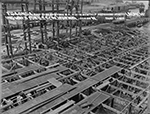 | 1.05k | Monthly Progress Photo, Launching Ways For California, Looking North, Yard Labor, 31 August 1915. | National Archives Identifier: 6038391 Photo courtesy of catalog.archives.gov |
||||||||||||||||||||||||||||||||||||||||||||||||||||||||||||||||||||||||||||||||||||||||||||||||||||||||||||||||||||||||||||||||||||||||||||||||||||||||||||||||||||||||||||||||||||||||||||||||||||||||||||||||||||||||||||||||||||||||||||||||||||||||||||||||||||||||||||||||||||||||||||||||||||||||||||||||||||||||||||||||||||||||||||||||||||||||||||||||||||||||||||||||||||||||||||||||||||||||||||||||||||||||||||||||||||||||||||||||||||||||||||||||||||||||||||||||||||||||||||||||||||||||||||||||||||||||||||||||||||||||||||||||||||||||||||||||||||||||||||||||||||||||||||||||||||||||||||||||||||||||||||||||||||||||||||||||||||||||||||||||||||||||||||||||||||||||||||||||||||||||||||||||||||||||||||||||||||||||||||||||||||||||||||||||||||||||||||||||||||||||||||||||||||||||||||||||||||||||||||||||||||||||||||||||||||||||||||||||||||||||||||||||||||||||||||||||||||||||||||||||||||||||||||||||||||||||||||||||||||||||||||||||||||||||||||||||||||||||||||||||||||||||||||||||||||||||||||||||||||
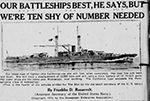 | 244k | OUR BATTLESHIPS BEST, HE SAYS, BUT WE'RE TEN SHY OF NUMBER NEEDED. Our latest type of fighter the California (BB-40) as she will look when completed. Her keel has just been laid down. She will have a displacement of 32,000 tons and will carry a main battery of 12 14-Inch guns. Her sister ships are the Idaho (BB-41) and Mississippi (BB-42), now building. (This is the fourth of six articles written for The Star by the assistant secretary of the U. S. navy.) |
Image and text provided by Washington State Library; Olympia, WA. Photo & text by The Seattle Star. 1899-1947, 11 October 1915, Image 6, via chroniclingamerica.loc.gov. | ||||||||||||||||||||||||||||||||||||||||||||||||||||||||||||||||||||||||||||||||||||||||||||||||||||||||||||||||||||||||||||||||||||||||||||||||||||||||||||||||||||||||||||||||||||||||||||||||||||||||||||||||||||||||||||||||||||||||||||||||||||||||||||||||||||||||||||||||||||||||||||||||||||||||||||||||||||||||||||||||||||||||||||||||||||||||||||||||||||||||||||||||||||||||||||||||||||||||||||||||||||||||||||||||||||||||||||||||||||||||||||||||||||||||||||||||||||||||||||||||||||||||||||||||||||||||||||||||||||||||||||||||||||||||||||||||||||||||||||||||||||||||||||||||||||||||||||||||||||||||||||||||||||||||||||||||||||||||||||||||||||||||||||||||||||||||||||||||||||||||||||||||||||||||||||||||||||||||||||||||||||||||||||||||||||||||||||||||||||||||||||||||||||||||||||||||||||||||||||||||||||||||||||||||||||||||||||||||||||||||||||||||||||||||||||||||||||||||||||||||||||||||||||||||||||||||||||||||||||||||||||||||||||||||||||||||||||||||||||||||||||||||||||||||||||||||||||||||||||
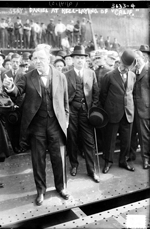 |
592k | Secretary of the Navy Josephus Daniels and other dignitaries attending the keel laying of the then named battleship California on 14 October 1915. The ship, renamed New Mexico (BB-40) was the lead ship in this class of battleships. | Text i.d. via Ed Cleary Source: Library of Congress, Photo No. LC-B2-3633-4. via Mike Green. |
||||||||||||||||||||||||||||||||||||||||||||||||||||||||||||||||||||||||||||||||||||||||||||||||||||||||||||||||||||||||||||||||||||||||||||||||||||||||||||||||||||||||||||||||||||||||||||||||||||||||||||||||||||||||||||||||||||||||||||||||||||||||||||||||||||||||||||||||||||||||||||||||||||||||||||||||||||||||||||||||||||||||||||||||||||||||||||||||||||||||||||||||||||||||||||||||||||||||||||||||||||||||||||||||||||||||||||||||||||||||||||||||||||||||||||||||||||||||||||||||||||||||||||||||||||||||||||||||||||||||||||||||||||||||||||||||||||||||||||||||||||||||||||||||||||||||||||||||||||||||||||||||||||||||||||||||||||||||||||||||||||||||||||||||||||||||||||||||||||||||||||||||||||||||||||||||||||||||||||||||||||||||||||||||||||||||||||||||||||||||||||||||||||||||||||||||||||||||||||||||||||||||||||||||||||||||||||||||||||||||||||||||||||||||||||||||||||||||||||||||||||||||||||||||||||||||||||||||||||||||||||||||||||||||||||||||||||||||||||||||||||||||||||||||||||||||||||||||||||
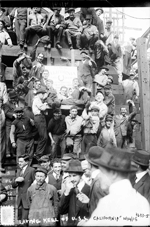 |
845k | Brooklyn Navy Yard workers celebrating the keel laying of the then named battleship California on 14 October 1915. | Source: Library of Congress, Photo No. LC-B2-3633-5 via Mike Green. | ||||||||||||||||||||||||||||||||||||||||||||||||||||||||||||||||||||||||||||||||||||||||||||||||||||||||||||||||||||||||||||||||||||||||||||||||||||||||||||||||||||||||||||||||||||||||||||||||||||||||||||||||||||||||||||||||||||||||||||||||||||||||||||||||||||||||||||||||||||||||||||||||||||||||||||||||||||||||||||||||||||||||||||||||||||||||||||||||||||||||||||||||||||||||||||||||||||||||||||||||||||||||||||||||||||||||||||||||||||||||||||||||||||||||||||||||||||||||||||||||||||||||||||||||||||||||||||||||||||||||||||||||||||||||||||||||||||||||||||||||||||||||||||||||||||||||||||||||||||||||||||||||||||||||||||||||||||||||||||||||||||||||||||||||||||||||||||||||||||||||||||||||||||||||||||||||||||||||||||||||||||||||||||||||||||||||||||||||||||||||||||||||||||||||||||||||||||||||||||||||||||||||||||||||||||||||||||||||||||||||||||||||||||||||||||||||||||||||||||||||||||||||||||||||||||||||||||||||||||||||||||||||||||||||||||||||||||||||||||||||||||||||||||||||||||||||||||||||||||
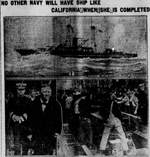 | 693k | NO OTHER NAVY WILL HAVE SHIP LIKE CALIFORNIA WHEN SHE IS COMPLETED The keel of the Superdreadnought California, destined to be the greatest of battleships, was laid at the navy yard in Brooklyn. The event was an epoch in naval construction, and among those who participated were Secretary of the Navy Daniels, Rear Admiral Nathaniel R. Usher, commandant of the great yard in which the California will be rushed to completion; Rear Admiral Robert S. Griffin, the engineer in chief of the navy, and Rear Admiral David W.Taylor, chief of the bureau of construction in Washington. Her name would be changed before her commissioning to New Mexico (BB-40). | Text i.d. courtesy of Mike Green. Photo by American Press Association. Image and text provided by Ohio Historical Society, Columbus, OH. & University of Utah, Marriott Library. Photo from The Democratic Banner. (Mt. Vernon, Ohio) 1898-192?, 19 October 1915, Image 1 & The Broad Ax.(Salt Lake City, Utah) 1895-19??, 30 October 1915, Image 2, courtesy of chroniclingamerica.loc.gov. | ||||||||||||||||||||||||||||||||||||||||||||||||||||||||||||||||||||||||||||||||||||||||||||||||||||||||||||||||||||||||||||||||||||||||||||||||||||||||||||||||||||||||||||||||||||||||||||||||||||||||||||||||||||||||||||||||||||||||||||||||||||||||||||||||||||||||||||||||||||||||||||||||||||||||||||||||||||||||||||||||||||||||||||||||||||||||||||||||||||||||||||||||||||||||||||||||||||||||||||||||||||||||||||||||||||||||||||||||||||||||||||||||||||||||||||||||||||||||||||||||||||||||||||||||||||||||||||||||||||||||||||||||||||||||||||||||||||||||||||||||||||||||||||||||||||||||||||||||||||||||||||||||||||||||||||||||||||||||||||||||||||||||||||||||||||||||||||||||||||||||||||||||||||||||||||||||||||||||||||||||||||||||||||||||||||||||||||||||||||||||||||||||||||||||||||||||||||||||||||||||||||||||||||||||||||||||||||||||||||||||||||||||||||||||||||||||||||||||||||||||||||||||||||||||||||||||||||||||||||||||||||||||||||||||||||||||||||||||||||||||||||||||||||||||||||||||||||||||||||
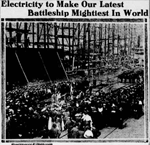 | 3.92k | Electricity to Make Our Latest Battleship Mightiest In World In the presence of a great throng the keel of the oil-burning turbine engine battleship California was laid with impressive ceremonies at the Brooklyn navy yard. | Photo by Underwood and Underwood. Image and text provided by Washington State Library; Olympia, WA. Photo from The Tacoma Times. (Tacoma, Wash.) 1903-1949, 01 November 1915, Image 3, courtesy of chroniclingamerica.loc.gov. | ||||||||||||||||||||||||||||||||||||||||||||||||||||||||||||||||||||||||||||||||||||||||||||||||||||||||||||||||||||||||||||||||||||||||||||||||||||||||||||||||||||||||||||||||||||||||||||||||||||||||||||||||||||||||||||||||||||||||||||||||||||||||||||||||||||||||||||||||||||||||||||||||||||||||||||||||||||||||||||||||||||||||||||||||||||||||||||||||||||||||||||||||||||||||||||||||||||||||||||||||||||||||||||||||||||||||||||||||||||||||||||||||||||||||||||||||||||||||||||||||||||||||||||||||||||||||||||||||||||||||||||||||||||||||||||||||||||||||||||||||||||||||||||||||||||||||||||||||||||||||||||||||||||||||||||||||||||||||||||||||||||||||||||||||||||||||||||||||||||||||||||||||||||||||||||||||||||||||||||||||||||||||||||||||||||||||||||||||||||||||||||||||||||||||||||||||||||||||||||||||||||||||||||||||||||||||||||||||||||||||||||||||||||||||||||||||||||||||||||||||||||||||||||||||||||||||||||||||||||||||||||||||||||||||||||||||||||||||||||||||||||||||||||||||||||||||||||||||||||
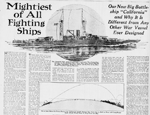 | 1.07k | Mightiest of All Fighting Ships Our New Big Battleship California and Why It Is Different from Any Other War Vessel Ever Designed Out of Sight Below the Ocean Horizon the California Could Destroy New York City in Half an Hour with Long-Range Shells Which Would Seem to Drop From the Sky. One Broadside from All the "California" Guns Would Be Equal to Throwing Six Touring Cars from Sandy Hook to New York. |
Image and text provided by Library of Virginia; Richmond, VA. Photo by Richmond Times-Dispatch. (Richmond, Va.) 1914-current, 07 November 1915, Image 55, courtesy of chroniclingamerica.loc.gov. |
||||||||||||||||||||||||||||||||||||||||||||||||||||||||||||||||||||||||||||||||||||||||||||||||||||||||||||||||||||||||||||||||||||||||||||||||||||||||||||||||||||||||||||||||||||||||||||||||||||||||||||||||||||||||||||||||||||||||||||||||||||||||||||||||||||||||||||||||||||||||||||||||||||||||||||||||||||||||||||||||||||||||||||||||||||||||||||||||||||||||||||||||||||||||||||||||||||||||||||||||||||||||||||||||||||||||||||||||||||||||||||||||||||||||||||||||||||||||||||||||||||||||||||||||||||||||||||||||||||||||||||||||||||||||||||||||||||||||||||||||||||||||||||||||||||||||||||||||||||||||||||||||||||||||||||||||||||||||||||||||||||||||||||||||||||||||||||||||||||||||||||||||||||||||||||||||||||||||||||||||||||||||||||||||||||||||||||||||||||||||||||||||||||||||||||||||||||||||||||||||||||||||||||||||||||||||||||||||||||||||||||||||||||||||||||||||||||||||||||||||||||||||||||||||||||||||||||||||||||||||||||||||||||||||||||||||||||||||||||||||||||||||||||||||||||||||||||||||||||
 | 451k | THE NEW BATTLESHIP NEW MEXICO (BB-40). This is a picture of the model for the new battleship New Mexico. It will be the greatest Dreadnought afloat when completed. Its sister ships will be the Mississippi (BB-41) and Idaho (BB-42). | Image and text provided by University of North Texas; Denton, TX. Photo from El Paso Herald. (El Paso, Tex.) 1901-1931, 07 April 1916, HOME EDITION, Image 1, via chroniclingamerica.loc.gov. |
||||||||||||||||||||||||||||||||||||||||||||||||||||||||||||||||||||||||||||||||||||||||||||||||||||||||||||||||||||||||||||||||||||||||||||||||||||||||||||||||||||||||||||||||||||||||||||||||||||||||||||||||||||||||||||||||||||||||||||||||||||||||||||||||||||||||||||||||||||||||||||||||||||||||||||||||||||||||||||||||||||||||||||||||||||||||||||||||||||||||||||||||||||||||||||||||||||||||||||||||||||||||||||||||||||||||||||||||||||||||||||||||||||||||||||||||||||||||||||||||||||||||||||||||||||||||||||||||||||||||||||||||||||||||||||||||||||||||||||||||||||||||||||||||||||||||||||||||||||||||||||||||||||||||||||||||||||||||||||||||||||||||||||||||||||||||||||||||||||||||||||||||||||||||||||||||||||||||||||||||||||||||||||||||||||||||||||||||||||||||||||||||||||||||||||||||||||||||||||||||||||||||||||||||||||||||||||||||||||||||||||||||||||||||||||||||||||||||||||||||||||||||||||||||||||||||||||||||||||||||||||||||||||||||||||||||||||||||||||||||||||||||||||||||||||||||||||||||||||
 | 713k | MIGHTY ENGINES FOR OUR NEWEST WARSHIPS THE CALIFORNIA - NOT YET IN SERVICE - HAS TURBO ELECTRIC DRIVE |
Image and text provided by University of Nebraska-Lincoln Libraries, Lincoln, NE. Photo & text by The Red Cloud Chief. (Red Cloud, Webster Co., Neb.) 1873-1923, 12 October 1916, Image 6, via chroniclingamerica.loc.gov. |
||||||||||||||||||||||||||||||||||||||||||||||||||||||||||||||||||||||||||||||||||||||||||||||||||||||||||||||||||||||||||||||||||||||||||||||||||||||||||||||||||||||||||||||||||||||||||||||||||||||||||||||||||||||||||||||||||||||||||||||||||||||||||||||||||||||||||||||||||||||||||||||||||||||||||||||||||||||||||||||||||||||||||||||||||||||||||||||||||||||||||||||||||||||||||||||||||||||||||||||||||||||||||||||||||||||||||||||||||||||||||||||||||||||||||||||||||||||||||||||||||||||||||||||||||||||||||||||||||||||||||||||||||||||||||||||||||||||||||||||||||||||||||||||||||||||||||||||||||||||||||||||||||||||||||||||||||||||||||||||||||||||||||||||||||||||||||||||||||||||||||||||||||||||||||||||||||||||||||||||||||||||||||||||||||||||||||||||||||||||||||||||||||||||||||||||||||||||||||||||||||||||||||||||||||||||||||||||||||||||||||||||||||||||||||||||||||||||||||||||||||||||||||||||||||||||||||||||||||||||||||||||||||||||||||||||||||||||||||||||||||||||||||||||||||||||||||||||||||||
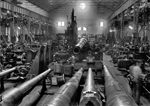 |
1.10k | "U.S. Navy Yard, Washington. Sight shop, big gun section. 1917: Possible future armament for the New Mexico (BB-40 /42) class | Harris & Ewing Collection glass negative, Library of Congress Photo courtesy of shorpy.com. | ||||||||||||||||||||||||||||||||||||||||||||||||||||||||||||||||||||||||||||||||||||||||||||||||||||||||||||||||||||||||||||||||||||||||||||||||||||||||||||||||||||||||||||||||||||||||||||||||||||||||||||||||||||||||||||||||||||||||||||||||||||||||||||||||||||||||||||||||||||||||||||||||||||||||||||||||||||||||||||||||||||||||||||||||||||||||||||||||||||||||||||||||||||||||||||||||||||||||||||||||||||||||||||||||||||||||||||||||||||||||||||||||||||||||||||||||||||||||||||||||||||||||||||||||||||||||||||||||||||||||||||||||||||||||||||||||||||||||||||||||||||||||||||||||||||||||||||||||||||||||||||||||||||||||||||||||||||||||||||||||||||||||||||||||||||||||||||||||||||||||||||||||||||||||||||||||||||||||||||||||||||||||||||||||||||||||||||||||||||||||||||||||||||||||||||||||||||||||||||||||||||||||||||||||||||||||||||||||||||||||||||||||||||||||||||||||||||||||||||||||||||||||||||||||||||||||||||||||||||||||||||||||||||||||||||||||||||||||||||||||||||||||||||||||||||||||||||||||||||
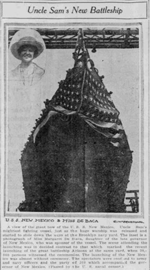 | NR | Uncle Sam's New Battleship A view of the giant bow of the New Mexico (BB-40), Uncle Sam's mightiest fighting vessel, just as the huge warship was released and started to slide down the ways at the Brooklyn navy yard. The inset is a photograph of Miss Margaret De Baca, daughter of the late governor of New Mexico, who was sponsor of the vessel. The scene attending the launching was in decided contrast to that which marked the recent launching of the great battleship Arizona (BB-39) at the same yard, when 30,000 persons witnessed the ceremonies. The launching of the New Mexico was almost without ceremony. The spectators were confined to army and navy officials and the party of 300 which accompanied the governor of New Mexico. (Passed by the U. S. naval censor.) | Image and text provided by Indiana State Library. Photo & text by South Bend News-Times. (South Bend, Ind.) 1913-1938, 27 April 1917, EVENING EDITION, Image 12, via chroniclingamerica.loc.gov. |
||||||||||||||||||||||||||||||||||||||||||||||||||||||||||||||||||||||||||||||||||||||||||||||||||||||||||||||||||||||||||||||||||||||||||||||||||||||||||||||||||||||||||||||||||||||||||||||||||||||||||||||||||||||||||||||||||||||||||||||||||||||||||||||||||||||||||||||||||||||||||||||||||||||||||||||||||||||||||||||||||||||||||||||||||||||||||||||||||||||||||||||||||||||||||||||||||||||||||||||||||||||||||||||||||||||||||||||||||||||||||||||||||||||||||||||||||||||||||||||||||||||||||||||||||||||||||||||||||||||||||||||||||||||||||||||||||||||||||||||||||||||||||||||||||||||||||||||||||||||||||||||||||||||||||||||||||||||||||||||||||||||||||||||||||||||||||||||||||||||||||||||||||||||||||||||||||||||||||||||||||||||||||||||||||||||||||||||||||||||||||||||||||||||||||||||||||||||||||||||||||||||||||||||||||||||||||||||||||||||||||||||||||||||||||||||||||||||||||||||||||||||||||||||||||||||||||||||||||||||||||||||||||||||||||||||||||||||||||||||||||||||||||||||||||||||||||||||||||||
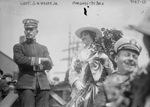 014002b |
353k | Photograph shows John Walter Wilcox, Jr. (1882-1942), U.S. Navy, and Margaret Cabeza DeBaca, daughter of Ezequiel Cabeza De Baca, governor of New Mexico. Margaret christened the battleship New Mexico (BB-40) on 23 April 1917. (Source: Flickr Commons project, 2015 and The New York Times, 24 April 1917). | Photo by Bain News Service, courtesy of loc.gov. Reproduction Number LC-DIG-ggbain-24235. | ||||||||||||||||||||||||||||||||||||||||||||||||||||||||||||||||||||||||||||||||||||||||||||||||||||||||||||||||||||||||||||||||||||||||||||||||||||||||||||||||||||||||||||||||||||||||||||||||||||||||||||||||||||||||||||||||||||||||||||||||||||||||||||||||||||||||||||||||||||||||||||||||||||||||||||||||||||||||||||||||||||||||||||||||||||||||||||||||||||||||||||||||||||||||||||||||||||||||||||||||||||||||||||||||||||||||||||||||||||||||||||||||||||||||||||||||||||||||||||||||||||||||||||||||||||||||||||||||||||||||||||||||||||||||||||||||||||||||||||||||||||||||||||||||||||||||||||||||||||||||||||||||||||||||||||||||||||||||||||||||||||||||||||||||||||||||||||||||||||||||||||||||||||||||||||||||||||||||||||||||||||||||||||||||||||||||||||||||||||||||||||||||||||||||||||||||||||||||||||||||||||||||||||||||||||||||||||||||||||||||||||||||||||||||||||||||||||||||||||||||||||||||||||||||||||||||||||||||||||||||||||||||||||||||||||||||||||||||||||||||||||||||||||||||||||||||||||||||||||
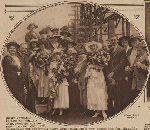 |
3.16k | "Misses Margaret C. DeBaca Virginia Carr, sponsors for the new dreadnought & members of the launching party which came from New Mexico for the ceremony." "Launching at the Brooklyn Navy Yard on last Monday of the U.S. super-dreadnought New Mexico (BB-40), newest, and with her sister ships the largest and most powerful vessels in the Navy, and the world's first dreadnought to be driven by electric power." |
Times Photo Service. Text courtesy of N.Y. Times 29 April 1917, Page 1, courtesy of memory.loc.gov. | ||||||||||||||||||||||||||||||||||||||||||||||||||||||||||||||||||||||||||||||||||||||||||||||||||||||||||||||||||||||||||||||||||||||||||||||||||||||||||||||||||||||||||||||||||||||||||||||||||||||||||||||||||||||||||||||||||||||||||||||||||||||||||||||||||||||||||||||||||||||||||||||||||||||||||||||||||||||||||||||||||||||||||||||||||||||||||||||||||||||||||||||||||||||||||||||||||||||||||||||||||||||||||||||||||||||||||||||||||||||||||||||||||||||||||||||||||||||||||||||||||||||||||||||||||||||||||||||||||||||||||||||||||||||||||||||||||||||||||||||||||||||||||||||||||||||||||||||||||||||||||||||||||||||||||||||||||||||||||||||||||||||||||||||||||||||||||||||||||||||||||||||||||||||||||||||||||||||||||||||||||||||||||||||||||||||||||||||||||||||||||||||||||||||||||||||||||||||||||||||||||||||||||||||||||||||||||||||||||||||||||||||||||||||||||||||||||||||||||||||||||||||||||||||||||||||||||||||||||||||||||||||||||||||||||||||||||||||||||||||||||||||||||||||||||||||||||||||||||||
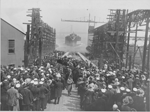 | NR | NEW U. S. Superdreadnought LEAVING THE WAYS New Mexico (BB-40), Nation's Greatest Battleship, Takes the Water. Navy Yard Closely Guarded for Launching, Witnessed by Only 300 Guests. Huge Oil Burning Super-dreadnought Is First To Be Electrically Driven. | Image and text provided by Library of Congress, Washington, DC. Photo from New-York Tribune. (New York [N.Y.]) 1866-1924, 24 April 1917, Image 3, via chroniclingamerica.loc.gov. | ||||||||||||||||||||||||||||||||||||||||||||||||||||||||||||||||||||||||||||||||||||||||||||||||||||||||||||||||||||||||||||||||||||||||||||||||||||||||||||||||||||||||||||||||||||||||||||||||||||||||||||||||||||||||||||||||||||||||||||||||||||||||||||||||||||||||||||||||||||||||||||||||||||||||||||||||||||||||||||||||||||||||||||||||||||||||||||||||||||||||||||||||||||||||||||||||||||||||||||||||||||||||||||||||||||||||||||||||||||||||||||||||||||||||||||||||||||||||||||||||||||||||||||||||||||||||||||||||||||||||||||||||||||||||||||||||||||||||||||||||||||||||||||||||||||||||||||||||||||||||||||||||||||||||||||||||||||||||||||||||||||||||||||||||||||||||||||||||||||||||||||||||||||||||||||||||||||||||||||||||||||||||||||||||||||||||||||||||||||||||||||||||||||||||||||||||||||||||||||||||||||||||||||||||||||||||||||||||||||||||||||||||||||||||||||||||||||||||||||||||||||||||||||||||||||||||||||||||||||||||||||||||||||||||||||||||||||||||||||||||||||||||||||||||||||||||||||||||||||
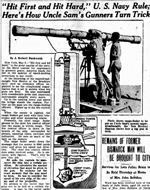 | 1.93k | "Hit First and Hit Hard" U. S. Navy Rule; Here's How Uncle Sam's Gunners Turn Trick Photo shows range finder to be put on Uncle Sam's newest superdreadnought, the New Mexico (BB-40); diagram shows how a big gun is fired. |
Image and text provided by State Historical Society of North Dakota. Photo & text by The Bismarck Tribune. (Bismarck, N.D.) 1916-current, 09 May 1917, Image 8, via chroniclingamerica.loc.gov. |
||||||||||||||||||||||||||||||||||||||||||||||||||||||||||||||||||||||||||||||||||||||||||||||||||||||||||||||||||||||||||||||||||||||||||||||||||||||||||||||||||||||||||||||||||||||||||||||||||||||||||||||||||||||||||||||||||||||||||||||||||||||||||||||||||||||||||||||||||||||||||||||||||||||||||||||||||||||||||||||||||||||||||||||||||||||||||||||||||||||||||||||||||||||||||||||||||||||||||||||||||||||||||||||||||||||||||||||||||||||||||||||||||||||||||||||||||||||||||||||||||||||||||||||||||||||||||||||||||||||||||||||||||||||||||||||||||||||||||||||||||||||||||||||||||||||||||||||||||||||||||||||||||||||||||||||||||||||||||||||||||||||||||||||||||||||||||||||||||||||||||||||||||||||||||||||||||||||||||||||||||||||||||||||||||||||||||||||||||||||||||||||||||||||||||||||||||||||||||||||||||||||||||||||||||||||||||||||||||||||||||||||||||||||||||||||||||||||||||||||||||||||||||||||||||||||||||||||||||||||||||||||||||||||||||||||||||||||||||||||||||||||||||||||||||||||||||||||||||||
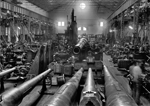 014077 |
1.14k | Naval guns possibly for battleship New Mexico (BB-40) , New York Navy Yard, Brooklyn, New York, United States, 1917. | Photo from ww2db.com | ||||||||||||||||||||||||||||||||||||||||||||||||||||||||||||||||||||||||||||||||||||||||||||||||||||||||||||||||||||||||||||||||||||||||||||||||||||||||||||||||||||||||||||||||||||||||||||||||||||||||||||||||||||||||||||||||||||||||||||||||||||||||||||||||||||||||||||||||||||||||||||||||||||||||||||||||||||||||||||||||||||||||||||||||||||||||||||||||||||||||||||||||||||||||||||||||||||||||||||||||||||||||||||||||||||||||||||||||||||||||||||||||||||||||||||||||||||||||||||||||||||||||||||||||||||||||||||||||||||||||||||||||||||||||||||||||||||||||||||||||||||||||||||||||||||||||||||||||||||||||||||||||||||||||||||||||||||||||||||||||||||||||||||||||||||||||||||||||||||||||||||||||||||||||||||||||||||||||||||||||||||||||||||||||||||||||||||||||||||||||||||||||||||||||||||||||||||||||||||||||||||||||||||||||||||||||||||||||||||||||||||||||||||||||||||||||||||||||||||||||||||||||||||||||||||||||||||||||||||||||||||||||||||||||||||||||||||||||||||||||||||||||||||||||||||||||||||||||||||
 |
331k | Main battery drawn out as construction continues on the New Mexico (BB-40), 6 October 1917. | Brooklyn Navy Yard Archive - courtesy National Archive and Records Administration, Northeast Region - NYC, Record Group 181 via flickr.com. | ||||||||||||||||||||||||||||||||||||||||||||||||||||||||||||||||||||||||||||||||||||||||||||||||||||||||||||||||||||||||||||||||||||||||||||||||||||||||||||||||||||||||||||||||||||||||||||||||||||||||||||||||||||||||||||||||||||||||||||||||||||||||||||||||||||||||||||||||||||||||||||||||||||||||||||||||||||||||||||||||||||||||||||||||||||||||||||||||||||||||||||||||||||||||||||||||||||||||||||||||||||||||||||||||||||||||||||||||||||||||||||||||||||||||||||||||||||||||||||||||||||||||||||||||||||||||||||||||||||||||||||||||||||||||||||||||||||||||||||||||||||||||||||||||||||||||||||||||||||||||||||||||||||||||||||||||||||||||||||||||||||||||||||||||||||||||||||||||||||||||||||||||||||||||||||||||||||||||||||||||||||||||||||||||||||||||||||||||||||||||||||||||||||||||||||||||||||||||||||||||||||||||||||||||||||||||||||||||||||||||||||||||||||||||||||||||||||||||||||||||||||||||||||||||||||||||||||||||||||||||||||||||||||||||||||||||||||||||||||||||||||||||||||||||||||||||||||||||||||
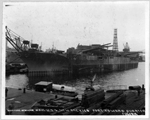 |
610k | Port forward quarter of the New Mexico (BB-40), 6 October 1917. | Photo No. f1060n14, Brooklyn Navy Yard Archive - courtesy National Archive and Records Administration, Northeast Region - NYC, Record Group 181 via flickr.com. | ||||||||||||||||||||||||||||||||||||||||||||||||||||||||||||||||||||||||||||||||||||||||||||||||||||||||||||||||||||||||||||||||||||||||||||||||||||||||||||||||||||||||||||||||||||||||||||||||||||||||||||||||||||||||||||||||||||||||||||||||||||||||||||||||||||||||||||||||||||||||||||||||||||||||||||||||||||||||||||||||||||||||||||||||||||||||||||||||||||||||||||||||||||||||||||||||||||||||||||||||||||||||||||||||||||||||||||||||||||||||||||||||||||||||||||||||||||||||||||||||||||||||||||||||||||||||||||||||||||||||||||||||||||||||||||||||||||||||||||||||||||||||||||||||||||||||||||||||||||||||||||||||||||||||||||||||||||||||||||||||||||||||||||||||||||||||||||||||||||||||||||||||||||||||||||||||||||||||||||||||||||||||||||||||||||||||||||||||||||||||||||||||||||||||||||||||||||||||||||||||||||||||||||||||||||||||||||||||||||||||||||||||||||||||||||||||||||||||||||||||||||||||||||||||||||||||||||||||||||||||||||||||||||||||||||||||||||||||||||||||||||||||||||||||||||||||||||||||||||
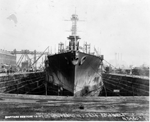 |
623k | New Mexico (BB-40) in Dry Dock #4, Bow view, January 1918. | Photo No. N3480, Brooklyn Navy Yard Archive - courtesy National Archive and Records Administration, Northeast Region - NYC, Record Group 181 via flickr.com. | ||||||||||||||||||||||||||||||||||||||||||||||||||||||||||||||||||||||||||||||||||||||||||||||||||||||||||||||||||||||||||||||||||||||||||||||||||||||||||||||||||||||||||||||||||||||||||||||||||||||||||||||||||||||||||||||||||||||||||||||||||||||||||||||||||||||||||||||||||||||||||||||||||||||||||||||||||||||||||||||||||||||||||||||||||||||||||||||||||||||||||||||||||||||||||||||||||||||||||||||||||||||||||||||||||||||||||||||||||||||||||||||||||||||||||||||||||||||||||||||||||||||||||||||||||||||||||||||||||||||||||||||||||||||||||||||||||||||||||||||||||||||||||||||||||||||||||||||||||||||||||||||||||||||||||||||||||||||||||||||||||||||||||||||||||||||||||||||||||||||||||||||||||||||||||||||||||||||||||||||||||||||||||||||||||||||||||||||||||||||||||||||||||||||||||||||||||||||||||||||||||||||||||||||||||||||||||||||||||||||||||||||||||||||||||||||||||||||||||||||||||||||||||||||||||||||||||||||||||||||||||||||||||||||||||||||||||||||||||||||||||||||||||||||||||||||||||||||||||||
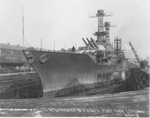 |
1.40k | New Mexico (BB-40) in Dry Dock #4, portside looking aft, January 1918. | Photo No. N3478, Brooklyn Navy Yard Archive - courtesy National Archive and Records Administration, Northeast Region - NYC, Record Group 181 via flickr.com. | ||||||||||||||||||||||||||||||||||||||||||||||||||||||||||||||||||||||||||||||||||||||||||||||||||||||||||||||||||||||||||||||||||||||||||||||||||||||||||||||||||||||||||||||||||||||||||||||||||||||||||||||||||||||||||||||||||||||||||||||||||||||||||||||||||||||||||||||||||||||||||||||||||||||||||||||||||||||||||||||||||||||||||||||||||||||||||||||||||||||||||||||||||||||||||||||||||||||||||||||||||||||||||||||||||||||||||||||||||||||||||||||||||||||||||||||||||||||||||||||||||||||||||||||||||||||||||||||||||||||||||||||||||||||||||||||||||||||||||||||||||||||||||||||||||||||||||||||||||||||||||||||||||||||||||||||||||||||||||||||||||||||||||||||||||||||||||||||||||||||||||||||||||||||||||||||||||||||||||||||||||||||||||||||||||||||||||||||||||||||||||||||||||||||||||||||||||||||||||||||||||||||||||||||||||||||||||||||||||||||||||||||||||||||||||||||||||||||||||||||||||||||||||||||||||||||||||||||||||||||||||||||||||||||||||||||||||||||||||||||||||||||||||||||||||||||||||||||||||||
 |
577k | New Mexico (BB-40) starboard view, shortly after commissioning, May 1918. | Courtesy of Seaman 2nd Class Ralph D Gummerson via Al Gummerson & Tom Bateman & Philip H. Robare RMCS, USN - RET. | ||||||||||||||||||||||||||||||||||||||||||||||||||||||||||||||||||||||||||||||||||||||||||||||||||||||||||||||||||||||||||||||||||||||||||||||||||||||||||||||||||||||||||||||||||||||||||||||||||||||||||||||||||||||||||||||||||||||||||||||||||||||||||||||||||||||||||||||||||||||||||||||||||||||||||||||||||||||||||||||||||||||||||||||||||||||||||||||||||||||||||||||||||||||||||||||||||||||||||||||||||||||||||||||||||||||||||||||||||||||||||||||||||||||||||||||||||||||||||||||||||||||||||||||||||||||||||||||||||||||||||||||||||||||||||||||||||||||||||||||||||||||||||||||||||||||||||||||||||||||||||||||||||||||||||||||||||||||||||||||||||||||||||||||||||||||||||||||||||||||||||||||||||||||||||||||||||||||||||||||||||||||||||||||||||||||||||||||||||||||||||||||||||||||||||||||||||||||||||||||||||||||||||||||||||||||||||||||||||||||||||||||||||||||||||||||||||||||||||||||||||||||||||||||||||||||||||||||||||||||||||||||||||||||||||||||||||||||||||||||||||||||||||||||||||||||||||||||||||||
 | 522k | One of the four 28" all bronze pumps for condenser circulation aboard Battleship New Mexico (BB-40) and California (BB-44) to be driven by electric motors. | Photographer: Alberger Pump & Condenser Co. Newburg, N.Y. National Archives Identifier: 45512012 Local Identifier: 165-WW-331F-5. Photo courtesy of catalog.archives.gov |
||||||||||||||||||||||||||||||||||||||||||||||||||||||||||||||||||||||||||||||||||||||||||||||||||||||||||||||||||||||||||||||||||||||||||||||||||||||||||||||||||||||||||||||||||||||||||||||||||||||||||||||||||||||||||||||||||||||||||||||||||||||||||||||||||||||||||||||||||||||||||||||||||||||||||||||||||||||||||||||||||||||||||||||||||||||||||||||||||||||||||||||||||||||||||||||||||||||||||||||||||||||||||||||||||||||||||||||||||||||||||||||||||||||||||||||||||||||||||||||||||||||||||||||||||||||||||||||||||||||||||||||||||||||||||||||||||||||||||||||||||||||||||||||||||||||||||||||||||||||||||||||||||||||||||||||||||||||||||||||||||||||||||||||||||||||||||||||||||||||||||||||||||||||||||||||||||||||||||||||||||||||||||||||||||||||||||||||||||||||||||||||||||||||||||||||||||||||||||||||||||||||||||||||||||||||||||||||||||||||||||||||||||||||||||||||||||||||||||||||||||||||||||||||||||||||||||||||||||||||||||||||||||||||||||||||||||||||||||||||||||||||||||||||||||||||||||||||||||||
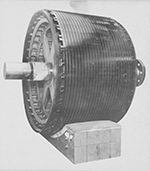 |
608k | One of the motors manufactured for the New Mexico (BB-40), by the General Electric Co., Schenectady, New York. | National Archives Identifier: 45510649 Local Identifier: 165-WW-324A-14. Photo courtesy of catalog.archives.gov | ||||||||||||||||||||||||||||||||||||||||||||||||||||||||||||||||||||||||||||||||||||||||||||||||||||||||||||||||||||||||||||||||||||||||||||||||||||||||||||||||||||||||||||||||||||||||||||||||||||||||||||||||||||||||||||||||||||||||||||||||||||||||||||||||||||||||||||||||||||||||||||||||||||||||||||||||||||||||||||||||||||||||||||||||||||||||||||||||||||||||||||||||||||||||||||||||||||||||||||||||||||||||||||||||||||||||||||||||||||||||||||||||||||||||||||||||||||||||||||||||||||||||||||||||||||||||||||||||||||||||||||||||||||||||||||||||||||||||||||||||||||||||||||||||||||||||||||||||||||||||||||||||||||||||||||||||||||||||||||||||||||||||||||||||||||||||||||||||||||||||||||||||||||||||||||||||||||||||||||||||||||||||||||||||||||||||||||||||||||||||||||||||||||||||||||||||||||||||||||||||||||||||||||||||||||||||||||||||||||||||||||||||||||||||||||||||||||||||||||||||||||||||||||||||||||||||||||||||||||||||||||||||||||||||||||||||||||||||||||||||||||||||||||||||||||||||||||||||||||
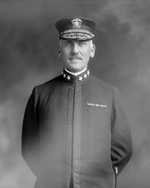 |
105k | Capt. Ashley Herman Robertson was the Commanding Officer of the New Mexico (BB-40) from May 1918 to September 1918. | Photo courtesy of the Library of Congress via Bill Gonyo. | ||||||||||||||||||||||||||||||||||||||||||||||||||||||||||||||||||||||||||||||||||||||||||||||||||||||||||||||||||||||||||||||||||||||||||||||||||||||||||||||||||||||||||||||||||||||||||||||||||||||||||||||||||||||||||||||||||||||||||||||||||||||||||||||||||||||||||||||||||||||||||||||||||||||||||||||||||||||||||||||||||||||||||||||||||||||||||||||||||||||||||||||||||||||||||||||||||||||||||||||||||||||||||||||||||||||||||||||||||||||||||||||||||||||||||||||||||||||||||||||||||||||||||||||||||||||||||||||||||||||||||||||||||||||||||||||||||||||||||||||||||||||||||||||||||||||||||||||||||||||||||||||||||||||||||||||||||||||||||||||||||||||||||||||||||||||||||||||||||||||||||||||||||||||||||||||||||||||||||||||||||||||||||||||||||||||||||||||||||||||||||||||||||||||||||||||||||||||||||||||||||||||||||||||||||||||||||||||||||||||||||||||||||||||||||||||||||||||||||||||||||||||||||||||||||||||||||||||||||||||||||||||||||||||||||||||||||||||||||||||||||||||||||||||||||||||||||||||||||||
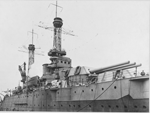 |
606k | INSULATION ADOPTED AS STANDARD BY U.S. NAVY. ELECTROSE MFG. C.O., BROOKLYN, N.Y. The New Mexico (BB-40) equipped with Electrose insulation. Note the ship's bell under the cage mast & searchlight platform, December 1918. |
Photographer Edwin Levick. National Archives Identifier: 45512488 Local Identifier: # 165-WW-334A-11 Photo courtesy of catalog.archives.gov | ||||||||||||||||||||||||||||||||||||||||||||||||||||||||||||||||||||||||||||||||||||||||||||||||||||||||||||||||||||||||||||||||||||||||||||||||||||||||||||||||||||||||||||||||||||||||||||||||||||||||||||||||||||||||||||||||||||||||||||||||||||||||||||||||||||||||||||||||||||||||||||||||||||||||||||||||||||||||||||||||||||||||||||||||||||||||||||||||||||||||||||||||||||||||||||||||||||||||||||||||||||||||||||||||||||||||||||||||||||||||||||||||||||||||||||||||||||||||||||||||||||||||||||||||||||||||||||||||||||||||||||||||||||||||||||||||||||||||||||||||||||||||||||||||||||||||||||||||||||||||||||||||||||||||||||||||||||||||||||||||||||||||||||||||||||||||||||||||||||||||||||||||||||||||||||||||||||||||||||||||||||||||||||||||||||||||||||||||||||||||||||||||||||||||||||||||||||||||||||||||||||||||||||||||||||||||||||||||||||||||||||||||||||||||||||||||||||||||||||||||||||||||||||||||||||||||||||||||||||||||||||||||||||||||||||||||||||||||||||||||||||||||||||||||||||||||||||||||||||
 014156 | 1.18k | RETURN OF THE VICTORY FLEET TO NEW YORK CITY. The Mississippi (BB-41), New Mexico (BB-40) & Missouri (BB-11) (turning) with other battleships trailing on 23 December 1918. |
Photographer: Underwood & Underwood. National Archives Identifier: 45513380 Local Identifier: 165-WW-337D-38. Photo courtesy of catalog.archives.gov | ||||||||||||||||||||||||||||||||||||||||||||||||||||||||||||||||||||||||||||||||||||||||||||||||||||||||||||||||||||||||||||||||||||||||||||||||||||||||||||||||||||||||||||||||||||||||||||||||||||||||||||||||||||||||||||||||||||||||||||||||||||||||||||||||||||||||||||||||||||||||||||||||||||||||||||||||||||||||||||||||||||||||||||||||||||||||||||||||||||||||||||||||||||||||||||||||||||||||||||||||||||||||||||||||||||||||||||||||||||||||||||||||||||||||||||||||||||||||||||||||||||||||||||||||||||||||||||||||||||||||||||||||||||||||||||||||||||||||||||||||||||||||||||||||||||||||||||||||||||||||||||||||||||||||||||||||||||||||||||||||||||||||||||||||||||||||||||||||||||||||||||||||||||||||||||||||||||||||||||||||||||||||||||||||||||||||||||||||||||||||||||||||||||||||||||||||||||||||||||||||||||||||||||||||||||||||||||||||||||||||||||||||||||||||||||||||||||||||||||||||||||||||||||||||||||||||||||||||||||||||||||||||||||||||||||||||||||||||||||||||||||||||||||||||||||||||||||||||||||
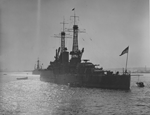 014109e | 1.49k | AWAITING THE OVERSEAS FLEET IN THE HUDSON RIVER. The Mississippi (BB-41) with the New Mexico (BB-40) in the background, December 1918. |
Photographer: Paul Thompson National Archives Identifier: 45512538 Local Identifier: 165-WW-334A-33. Photo courtesy of catalog.archives.gov | ||||||||||||||||||||||||||||||||||||||||||||||||||||||||||||||||||||||||||||||||||||||||||||||||||||||||||||||||||||||||||||||||||||||||||||||||||||||||||||||||||||||||||||||||||||||||||||||||||||||||||||||||||||||||||||||||||||||||||||||||||||||||||||||||||||||||||||||||||||||||||||||||||||||||||||||||||||||||||||||||||||||||||||||||||||||||||||||||||||||||||||||||||||||||||||||||||||||||||||||||||||||||||||||||||||||||||||||||||||||||||||||||||||||||||||||||||||||||||||||||||||||||||||||||||||||||||||||||||||||||||||||||||||||||||||||||||||||||||||||||||||||||||||||||||||||||||||||||||||||||||||||||||||||||||||||||||||||||||||||||||||||||||||||||||||||||||||||||||||||||||||||||||||||||||||||||||||||||||||||||||||||||||||||||||||||||||||||||||||||||||||||||||||||||||||||||||||||||||||||||||||||||||||||||||||||||||||||||||||||||||||||||||||||||||||||||||||||||||||||||||||||||||||||||||||||||||||||||||||||||||||||||||||||||||||||||||||||||||||||||||||||||||||||||||||||||||||||||||||
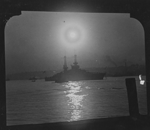 014030 | 3.06k | The sun sets on the New Mexico (BB-40) in New York Harbor during the Naval Review of the Victory Fleet, December 1918. | National Archives Identifier:45513419 Local Identifier: 165-WW-337D-57. Photo courtesy of catalog.archives.gov | ||||||||||||||||||||||||||||||||||||||||||||||||||||||||||||||||||||||||||||||||||||||||||||||||||||||||||||||||||||||||||||||||||||||||||||||||||||||||||||||||||||||||||||||||||||||||||||||||||||||||||||||||||||||||||||||||||||||||||||||||||||||||||||||||||||||||||||||||||||||||||||||||||||||||||||||||||||||||||||||||||||||||||||||||||||||||||||||||||||||||||||||||||||||||||||||||||||||||||||||||||||||||||||||||||||||||||||||||||||||||||||||||||||||||||||||||||||||||||||||||||||||||||||||||||||||||||||||||||||||||||||||||||||||||||||||||||||||||||||||||||||||||||||||||||||||||||||||||||||||||||||||||||||||||||||||||||||||||||||||||||||||||||||||||||||||||||||||||||||||||||||||||||||||||||||||||||||||||||||||||||||||||||||||||||||||||||||||||||||||||||||||||||||||||||||||||||||||||||||||||||||||||||||||||||||||||||||||||||||||||||||||||||||||||||||||||||||||||||||||||||||||||||||||||||||||||||||||||||||||||||||||||||||||||||||||||||||||||||||||||||||||||||||||||||||||||||||||||||||
| 1919 - 1933 |
|||||||||||||||||||||||||||||||||||||||||||||||||||||||||||||||||||||||||||||||||||||||||||||||||||||||||||||||||||||||||||||||||||||||||||||||||||||||||||||||||||||||||||||||||||||||||||||||||||||||||||||||||||||||||||||||||||||||||||||||||||||||||||||||||||||||||||||||||||||||||||||||||||||||||||||||||||||||||||||||||||||||||||||||||||||||||||||||||||||||||||||||||||||||||||||||||||||||||||||||||||||||||||||||||||||||||||||||||||||||||||||||||||||||||||||||||||||||||||||||||||||||||||||||||||||||||||||||||||||||||||||||||||||||||||||||||||||||||||||||||||||||||||||||||||||||||||||||||||||||||||||||||||||||||||||||||||||||||||||||||||||||||||||||||||||||||||||||||||||||||||||||||||||||||||||||||||||||||||||||||||||||||||||||||||||||||||||||||||||||||||||||||||||||||||||||||||||||||||||||||||||||||||||||||||||||||||||||||||||||||||||||||||||||||||||||||||||||||||||||||||||||||||||||||||||||||||||||||||||||||||||||||||||||||||||||||||||||||||||||||||||||||||||||||||||||||||||||||||||||
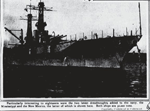 | 375k | Particularly interesting to sightseers were the two latest dreadnoughts added to the navy, the Mississippi (BB-41) and the New Mexico (BB-40), the latter of which is shown here. Both ships are 32,000 tons. | Image and text provided by The New York Public Library, Astor, Lenox and Tilden Foundation. Photo from The Sun. (New York [N.Y.]) 1833-1916, 05 January 1919, Section 3 Pictorial Magazine, Image 31, via chroniclingamerica.loc.gov. | ||||||||||||||||||||||||||||||||||||||||||||||||||||||||||||||||||||||||||||||||||||||||||||||||||||||||||||||||||||||||||||||||||||||||||||||||||||||||||||||||||||||||||||||||||||||||||||||||||||||||||||||||||||||||||||||||||||||||||||||||||||||||||||||||||||||||||||||||||||||||||||||||||||||||||||||||||||||||||||||||||||||||||||||||||||||||||||||||||||||||||||||||||||||||||||||||||||||||||||||||||||||||||||||||||||||||||||||||||||||||||||||||||||||||||||||||||||||||||||||||||||||||||||||||||||||||||||||||||||||||||||||||||||||||||||||||||||||||||||||||||||||||||||||||||||||||||||||||||||||||||||||||||||||||||||||||||||||||||||||||||||||||||||||||||||||||||||||||||||||||||||||||||||||||||||||||||||||||||||||||||||||||||||||||||||||||||||||||||||||||||||||||||||||||||||||||||||||||||||||||||||||||||||||||||||||||||||||||||||||||||||||||||||||||||||||||||||||||||||||||||||||||||||||||||||||||||||||||||||||||||||||||||||||||||||||||||||||||||||||||||||||||||||||||||||||||||||||||||||
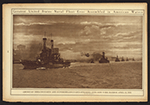 | 1.78k | "American dreadnoughts & super-dreadnoughts steaming into New York harbor 14 April 1919." The Texas (BB-35) leads the procession with a airplane on her turret catapult. Note the escorting biplane. The "escorting" aircraft is either a Curtiss HS-1 or HS-2 (note the single engine) can't tell which from the photo. The aircraft on a fly-off platform atop the No. 2 turret of the Texas is 1 of 6 Sopwith Camels purchased from Britain at the end of the war. The platforms were a British concept designed to provide the fleet with an aircraft capable of reaching the high flying Zeppelins which the German Navy occasionally used as scouts. The Texas was the only US Battleship to be fitted with turret fly-off platforms while in Europe and was the test bed for this program in the US Navy. Not visible in this view is a stripped down (No fabric and no wings) Sopwith 1-1/2 Strutter lashed atop the No. 3 Turret. The platforms were eventually mounted on all 14" gun BB's through the New Mexico (BB-40 / 42) class (with mixed reviews from their commanders) and carried either a Hanriot HD-1 or a Neiuport 28. Though equipped inflatable floats for water landings, this tended to do a lot of damage not the least of which was dowsing a hot engine in cold salt water. By 1920 a successful compressed air catapult was developed and were being mounted on the aft deck of all 4 turreted battleships and fly-off platforms were removed. The Texas and New York (BB-34), because of their 5 Turrets, lacked the deck space for the catapult and had to make do with a float plane (Vought VE-7) sitting on the aft deck which would be launched by lowering it over the side for a surface take-off. If you look carefully at the photo you see the VE-7 on the deck and the A-frame hoist used for handling it. | Photo by Paul Thompson. Text courtesy of N.Y. Times, page 481, from The War of the Nations (New York), 31 December 1919, courtesy of memory.loc.gov. Text i.d. courtesy of Chris Hoehn. |
||||||||||||||||||||||||||||||||||||||||||||||||||||||||||||||||||||||||||||||||||||||||||||||||||||||||||||||||||||||||||||||||||||||||||||||||||||||||||||||||||||||||||||||||||||||||||||||||||||||||||||||||||||||||||||||||||||||||||||||||||||||||||||||||||||||||||||||||||||||||||||||||||||||||||||||||||||||||||||||||||||||||||||||||||||||||||||||||||||||||||||||||||||||||||||||||||||||||||||||||||||||||||||||||||||||||||||||||||||||||||||||||||||||||||||||||||||||||||||||||||||||||||||||||||||||||||||||||||||||||||||||||||||||||||||||||||||||||||||||||||||||||||||||||||||||||||||||||||||||||||||||||||||||||||||||||||||||||||||||||||||||||||||||||||||||||||||||||||||||||||||||||||||||||||||||||||||||||||||||||||||||||||||||||||||||||||||||||||||||||||||||||||||||||||||||||||||||||||||||||||||||||||||||||||||||||||||||||||||||||||||||||||||||||||||||||||||||||||||||||||||||||||||||||||||||||||||||||||||||||||||||||||||||||||||||||||||||||||||||||||||||||||||||||||||||||||||||||||||
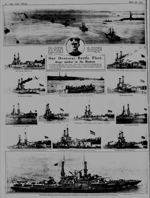 | NR | How the Atlantic Fleet looked to the camera man in a seaplane flying over lower Manhattan a week ago yesterday morning as the mighty armada came up the bay to anchorage in the Hudson off Riverside Drive for a two weeks' vacation after months of strenuous maneuvers in Southern waters. The destroyers Dale (DD-290) and Flusser (DD-289) are shown leading the column of eight dreadnoughts: Oklahoma (BB-37), Nevada (BB-36), Arizona (BB-39), flagship Pennsylvania (BB-38), Utah (BB-31), Florida (BB-30), North Dakota (BB-29) and Delaware (BB-28) past the Statue of Liberty at a fifteen-knot clip. In addition to the big battleships, the fleet includes thirty-two destroyers, numerous supply ships and several submarines. The Atlantic battleship fleet is home: again. Here are the twelve great first line fighting ships that are paying Father Knickerbocker a two weeks' visit. Over a hundred of Uncle Sam's grim sea warriors gray the North River, while their 30,000 sailor-men are given the freedom of the city in a royal welcome home. The Battleship Mississippi (BB-41) leading the fleet into the harbor, as photographed from an airplane. Note the airplanes atop the forward and aft turrets. |
Image provided by: Library of Congress, Washington, DC. Photo & text by New-York Tribune. (New York [N.Y.]) 1866-1924, 20 April 1919, Image 48, courtesy of chroniclingamerica.loc.gov. |
||||||||||||||||||||||||||||||||||||||||||||||||||||||||||||||||||||||||||||||||||||||||||||||||||||||||||||||||||||||||||||||||||||||||||||||||||||||||||||||||||||||||||||||||||||||||||||||||||||||||||||||||||||||||||||||||||||||||||||||||||||||||||||||||||||||||||||||||||||||||||||||||||||||||||||||||||||||||||||||||||||||||||||||||||||||||||||||||||||||||||||||||||||||||||||||||||||||||||||||||||||||||||||||||||||||||||||||||||||||||||||||||||||||||||||||||||||||||||||||||||||||||||||||||||||||||||||||||||||||||||||||||||||||||||||||||||||||||||||||||||||||||||||||||||||||||||||||||||||||||||||||||||||||||||||||||||||||||||||||||||||||||||||||||||||||||||||||||||||||||||||||||||||||||||||||||||||||||||||||||||||||||||||||||||||||||||||||||||||||||||||||||||||||||||||||||||||||||||||||||||||||||||||||||||||||||||||||||||||||||||||||||||||||||||||||||||||||||||||||||||||||||||||||||||||||||||||||||||||||||||||||||||||||||||||||||||||||||||||||||||||||||||||||||||||||||||||||||||||
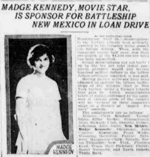 | 333k | MADGE KENNEDY, MOVIE STAR, IS SPONSOR FOR BATTLESHIP NEW MEXICO (BB-40) IN LOAN DRIVE | Image and text provided by University of New Mexico. Photo & text by The Evening Herald. (Albuquerque, N.M.) 1914-1922, 30 April 1919, Image 1, via chroniclingamerica.loc.gov. |
||||||||||||||||||||||||||||||||||||||||||||||||||||||||||||||||||||||||||||||||||||||||||||||||||||||||||||||||||||||||||||||||||||||||||||||||||||||||||||||||||||||||||||||||||||||||||||||||||||||||||||||||||||||||||||||||||||||||||||||||||||||||||||||||||||||||||||||||||||||||||||||||||||||||||||||||||||||||||||||||||||||||||||||||||||||||||||||||||||||||||||||||||||||||||||||||||||||||||||||||||||||||||||||||||||||||||||||||||||||||||||||||||||||||||||||||||||||||||||||||||||||||||||||||||||||||||||||||||||||||||||||||||||||||||||||||||||||||||||||||||||||||||||||||||||||||||||||||||||||||||||||||||||||||||||||||||||||||||||||||||||||||||||||||||||||||||||||||||||||||||||||||||||||||||||||||||||||||||||||||||||||||||||||||||||||||||||||||||||||||||||||||||||||||||||||||||||||||||||||||||||||||||||||||||||||||||||||||||||||||||||||||||||||||||||||||||||||||||||||||||||||||||||||||||||||||||||||||||||||||||||||||||||||||||||||||||||||||||||||||||||||||||||||||||||||||||||||||||||
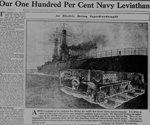 | NR | Our Hundred Per Cent Navy Leviathan. | Image provided by: Library of Congress, Washington, DC. PDF courtesy of New-York Tribune. (New York [N.Y.]) 1866-1924, 01 June 1919, Image 83 via chroniclingamerica.loc.gov. |
||||||||||||||||||||||||||||||||||||||||||||||||||||||||||||||||||||||||||||||||||||||||||||||||||||||||||||||||||||||||||||||||||||||||||||||||||||||||||||||||||||||||||||||||||||||||||||||||||||||||||||||||||||||||||||||||||||||||||||||||||||||||||||||||||||||||||||||||||||||||||||||||||||||||||||||||||||||||||||||||||||||||||||||||||||||||||||||||||||||||||||||||||||||||||||||||||||||||||||||||||||||||||||||||||||||||||||||||||||||||||||||||||||||||||||||||||||||||||||||||||||||||||||||||||||||||||||||||||||||||||||||||||||||||||||||||||||||||||||||||||||||||||||||||||||||||||||||||||||||||||||||||||||||||||||||||||||||||||||||||||||||||||||||||||||||||||||||||||||||||||||||||||||||||||||||||||||||||||||||||||||||||||||||||||||||||||||||||||||||||||||||||||||||||||||||||||||||||||||||||||||||||||||||||||||||||||||||||||||||||||||||||||||||||||||||||||||||||||||||||||||||||||||||||||||||||||||||||||||||||||||||||||||||||||||||||||||||||||||||||||||||||||||||||||||||||||||||||||||
 | 900k | Aboard the New Mexico (BB-40), the first electric ship. | Image provided by: Library of Congress, Washington, DC. PDF courtesy of New-York Tribune. (New York [N.Y.]) 1866-1924, 07 September 1919, Image 71, via chroniclingamerica.loc.gov. |
||||||||||||||||||||||||||||||||||||||||||||||||||||||||||||||||||||||||||||||||||||||||||||||||||||||||||||||||||||||||||||||||||||||||||||||||||||||||||||||||||||||||||||||||||||||||||||||||||||||||||||||||||||||||||||||||||||||||||||||||||||||||||||||||||||||||||||||||||||||||||||||||||||||||||||||||||||||||||||||||||||||||||||||||||||||||||||||||||||||||||||||||||||||||||||||||||||||||||||||||||||||||||||||||||||||||||||||||||||||||||||||||||||||||||||||||||||||||||||||||||||||||||||||||||||||||||||||||||||||||||||||||||||||||||||||||||||||||||||||||||||||||||||||||||||||||||||||||||||||||||||||||||||||||||||||||||||||||||||||||||||||||||||||||||||||||||||||||||||||||||||||||||||||||||||||||||||||||||||||||||||||||||||||||||||||||||||||||||||||||||||||||||||||||||||||||||||||||||||||||||||||||||||||||||||||||||||||||||||||||||||||||||||||||||||||||||||||||||||||||||||||||||||||||||||||||||||||||||||||||||||||||||||||||||||||||||||||||||||||||||||||||||||||||||||||||||||||||||||
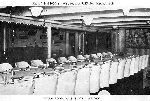 |
86k | Halftone reproduction of a photograph of the New Mexico's (BB-40) officers' Ward Room, with the table set for a meal, 1919. This image was published in 1919 by A.M. Simon, 324 E. 23rd St., New York City, as one of ten photographs in a "Souvenir Folder" of views concerning New Mexico. | Naval History and Heritage Command photograph # NH 105048. Donation of Edwin C. Finney, Jr., 2007, from the collection of J. Louise Finney. | ||||||||||||||||||||||||||||||||||||||||||||||||||||||||||||||||||||||||||||||||||||||||||||||||||||||||||||||||||||||||||||||||||||||||||||||||||||||||||||||||||||||||||||||||||||||||||||||||||||||||||||||||||||||||||||||||||||||||||||||||||||||||||||||||||||||||||||||||||||||||||||||||||||||||||||||||||||||||||||||||||||||||||||||||||||||||||||||||||||||||||||||||||||||||||||||||||||||||||||||||||||||||||||||||||||||||||||||||||||||||||||||||||||||||||||||||||||||||||||||||||||||||||||||||||||||||||||||||||||||||||||||||||||||||||||||||||||||||||||||||||||||||||||||||||||||||||||||||||||||||||||||||||||||||||||||||||||||||||||||||||||||||||||||||||||||||||||||||||||||||||||||||||||||||||||||||||||||||||||||||||||||||||||||||||||||||||||||||||||||||||||||||||||||||||||||||||||||||||||||||||||||||||||||||||||||||||||||||||||||||||||||||||||||||||||||||||||||||||||||||||||||||||||||||||||||||||||||||||||||||||||||||||||||||||||||||||||||||||||||||||||||||||||||||||||||||||||||||||||
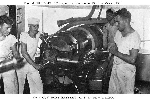 |
86k | Halftone reproduction of a photograph of crew members exercising with her Number Four 5"/51 broadside gun, 1919. This image was published in 1919 by A.M. Simon, 324 E. 23rd St., New York City, as one of ten photographs in a "Souvenir Folder" of views concerning New Mexico. | Naval History and Heritage Command photograph # NH 105049. Donation of Edwin C. Finney, Jr., 2007, from the collection of J. Louise Finney. | ||||||||||||||||||||||||||||||||||||||||||||||||||||||||||||||||||||||||||||||||||||||||||||||||||||||||||||||||||||||||||||||||||||||||||||||||||||||||||||||||||||||||||||||||||||||||||||||||||||||||||||||||||||||||||||||||||||||||||||||||||||||||||||||||||||||||||||||||||||||||||||||||||||||||||||||||||||||||||||||||||||||||||||||||||||||||||||||||||||||||||||||||||||||||||||||||||||||||||||||||||||||||||||||||||||||||||||||||||||||||||||||||||||||||||||||||||||||||||||||||||||||||||||||||||||||||||||||||||||||||||||||||||||||||||||||||||||||||||||||||||||||||||||||||||||||||||||||||||||||||||||||||||||||||||||||||||||||||||||||||||||||||||||||||||||||||||||||||||||||||||||||||||||||||||||||||||||||||||||||||||||||||||||||||||||||||||||||||||||||||||||||||||||||||||||||||||||||||||||||||||||||||||||||||||||||||||||||||||||||||||||||||||||||||||||||||||||||||||||||||||||||||||||||||||||||||||||||||||||||||||||||||||||||||||||||||||||||||||||||||||||||||||||||||||||||||||||||||||||
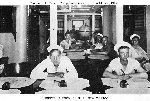 |
81k | Halftone reproduction of a photograph of crew members reading and writing in the ship's reception room, 1919. This image was published in 1919 by A.M. Simon, 324 E. 23rd St., New York City, as one of ten photographs in a "Souvenir Folder" of views concerning New Mexico. | Naval History and Heritage Command photograph # NH 105050. Donation of Edwin C. Finney, Jr., 2007, from the collection of J. Louise Finney. | ||||||||||||||||||||||||||||||||||||||||||||||||||||||||||||||||||||||||||||||||||||||||||||||||||||||||||||||||||||||||||||||||||||||||||||||||||||||||||||||||||||||||||||||||||||||||||||||||||||||||||||||||||||||||||||||||||||||||||||||||||||||||||||||||||||||||||||||||||||||||||||||||||||||||||||||||||||||||||||||||||||||||||||||||||||||||||||||||||||||||||||||||||||||||||||||||||||||||||||||||||||||||||||||||||||||||||||||||||||||||||||||||||||||||||||||||||||||||||||||||||||||||||||||||||||||||||||||||||||||||||||||||||||||||||||||||||||||||||||||||||||||||||||||||||||||||||||||||||||||||||||||||||||||||||||||||||||||||||||||||||||||||||||||||||||||||||||||||||||||||||||||||||||||||||||||||||||||||||||||||||||||||||||||||||||||||||||||||||||||||||||||||||||||||||||||||||||||||||||||||||||||||||||||||||||||||||||||||||||||||||||||||||||||||||||||||||||||||||||||||||||||||||||||||||||||||||||||||||||||||||||||||||||||||||||||||||||||||||||||||||||||||||||||||||||||||||||||||||||
 |
82k | Halftone reproduction of a photograph taken in the ship's surgical operating room, 1919. This image was published in 1919 by A.M. Simon, 324 E. 23rd St., New York City, as one of ten photographs in a "Souvenir Folder" of views concerning New Mexico. | Naval History and Heritage Command photograph # NH 105051. Donation of Edwin C. Finney, Jr., 2007, from the collection of J. Louise Finney. | ||||||||||||||||||||||||||||||||||||||||||||||||||||||||||||||||||||||||||||||||||||||||||||||||||||||||||||||||||||||||||||||||||||||||||||||||||||||||||||||||||||||||||||||||||||||||||||||||||||||||||||||||||||||||||||||||||||||||||||||||||||||||||||||||||||||||||||||||||||||||||||||||||||||||||||||||||||||||||||||||||||||||||||||||||||||||||||||||||||||||||||||||||||||||||||||||||||||||||||||||||||||||||||||||||||||||||||||||||||||||||||||||||||||||||||||||||||||||||||||||||||||||||||||||||||||||||||||||||||||||||||||||||||||||||||||||||||||||||||||||||||||||||||||||||||||||||||||||||||||||||||||||||||||||||||||||||||||||||||||||||||||||||||||||||||||||||||||||||||||||||||||||||||||||||||||||||||||||||||||||||||||||||||||||||||||||||||||||||||||||||||||||||||||||||||||||||||||||||||||||||||||||||||||||||||||||||||||||||||||||||||||||||||||||||||||||||||||||||||||||||||||||||||||||||||||||||||||||||||||||||||||||||||||||||||||||||||||||||||||||||||||||||||||||||||||||||||||||||||
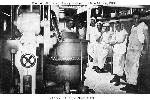 |
64k | Halftone reproduction of a photograph taken in the ship's galley, 1919. This image was published in 1919 by A.M. Simon, 324 E. 23rd St., New York City, as one of ten photographs in a "Souvenir Folder" of views concerning New Mexico. | Naval History and Heritage Command photograph # NH 105052. Donation of Edwin C. Finney, Jr., 2007, from the collection of J. Louise Finney. | ||||||||||||||||||||||||||||||||||||||||||||||||||||||||||||||||||||||||||||||||||||||||||||||||||||||||||||||||||||||||||||||||||||||||||||||||||||||||||||||||||||||||||||||||||||||||||||||||||||||||||||||||||||||||||||||||||||||||||||||||||||||||||||||||||||||||||||||||||||||||||||||||||||||||||||||||||||||||||||||||||||||||||||||||||||||||||||||||||||||||||||||||||||||||||||||||||||||||||||||||||||||||||||||||||||||||||||||||||||||||||||||||||||||||||||||||||||||||||||||||||||||||||||||||||||||||||||||||||||||||||||||||||||||||||||||||||||||||||||||||||||||||||||||||||||||||||||||||||||||||||||||||||||||||||||||||||||||||||||||||||||||||||||||||||||||||||||||||||||||||||||||||||||||||||||||||||||||||||||||||||||||||||||||||||||||||||||||||||||||||||||||||||||||||||||||||||||||||||||||||||||||||||||||||||||||||||||||||||||||||||||||||||||||||||||||||||||||||||||||||||||||||||||||||||||||||||||||||||||||||||||||||||||||||||||||||||||||||||||||||||||||||||||||||||||||||||||||||||||
 |
64k | Halftone reproduction of a photograph showing crew-members scrubbing clothes on the ship's forecastle, 1919. This image was published in 1919 by A.M. Simon, 324 E. 23rd St., New York City, as one of ten photographs in a "Souvenir Folder" of views concerning New Mexico. | Naval History and Heritage Command photograph # NH 105053. Donation of Edwin C. Finney, Jr., 2007, from the collection of J. Louise Finney. | ||||||||||||||||||||||||||||||||||||||||||||||||||||||||||||||||||||||||||||||||||||||||||||||||||||||||||||||||||||||||||||||||||||||||||||||||||||||||||||||||||||||||||||||||||||||||||||||||||||||||||||||||||||||||||||||||||||||||||||||||||||||||||||||||||||||||||||||||||||||||||||||||||||||||||||||||||||||||||||||||||||||||||||||||||||||||||||||||||||||||||||||||||||||||||||||||||||||||||||||||||||||||||||||||||||||||||||||||||||||||||||||||||||||||||||||||||||||||||||||||||||||||||||||||||||||||||||||||||||||||||||||||||||||||||||||||||||||||||||||||||||||||||||||||||||||||||||||||||||||||||||||||||||||||||||||||||||||||||||||||||||||||||||||||||||||||||||||||||||||||||||||||||||||||||||||||||||||||||||||||||||||||||||||||||||||||||||||||||||||||||||||||||||||||||||||||||||||||||||||||||||||||||||||||||||||||||||||||||||||||||||||||||||||||||||||||||||||||||||||||||||||||||||||||||||||||||||||||||||||||||||||||||||||||||||||||||||||||||||||||||||||||||||||||||||||||||||||||||||
 |
89k | Halftone reproduction of a photograph of a band concert held on the ship's quarterdeck, 1919. This image was published in 1919 by A.M. Simon, 324 E. 23rd St., New York City, as one of ten photographs in a "Souvenir Folder" of views concerning New Mexico. | Naval History and Heritage Command photograph # NH 105054. Donation of Edwin C. Finney, Jr., 2007, from the collection of J. Louise Finney. | ||||||||||||||||||||||||||||||||||||||||||||||||||||||||||||||||||||||||||||||||||||||||||||||||||||||||||||||||||||||||||||||||||||||||||||||||||||||||||||||||||||||||||||||||||||||||||||||||||||||||||||||||||||||||||||||||||||||||||||||||||||||||||||||||||||||||||||||||||||||||||||||||||||||||||||||||||||||||||||||||||||||||||||||||||||||||||||||||||||||||||||||||||||||||||||||||||||||||||||||||||||||||||||||||||||||||||||||||||||||||||||||||||||||||||||||||||||||||||||||||||||||||||||||||||||||||||||||||||||||||||||||||||||||||||||||||||||||||||||||||||||||||||||||||||||||||||||||||||||||||||||||||||||||||||||||||||||||||||||||||||||||||||||||||||||||||||||||||||||||||||||||||||||||||||||||||||||||||||||||||||||||||||||||||||||||||||||||||||||||||||||||||||||||||||||||||||||||||||||||||||||||||||||||||||||||||||||||||||||||||||||||||||||||||||||||||||||||||||||||||||||||||||||||||||||||||||||||||||||||||||||||||||||||||||||||||||||||||||||||||||||||||||||||||||||||||||||||||||||
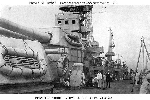 |
81k | Halftone reproduction of a photograph taken on the ship's fore deck, looking aft on the port side, 1919. Note life rafts attached to turret sides (and one suspended from the forward turret's rangefinder). The text provided on the original print is incorrect. This image was published in 1919 by A.M. Simon, 324 E. 23rd St., New York City, as one of ten photographs in a "Souvenir Folder" of views concerning New Mexico. | Naval History and Heritage Command photograph # NH 105055. Donation of Edwin C. Finney, Jr., 2007, from the collection of J. Louise Finney. | ||||||||||||||||||||||||||||||||||||||||||||||||||||||||||||||||||||||||||||||||||||||||||||||||||||||||||||||||||||||||||||||||||||||||||||||||||||||||||||||||||||||||||||||||||||||||||||||||||||||||||||||||||||||||||||||||||||||||||||||||||||||||||||||||||||||||||||||||||||||||||||||||||||||||||||||||||||||||||||||||||||||||||||||||||||||||||||||||||||||||||||||||||||||||||||||||||||||||||||||||||||||||||||||||||||||||||||||||||||||||||||||||||||||||||||||||||||||||||||||||||||||||||||||||||||||||||||||||||||||||||||||||||||||||||||||||||||||||||||||||||||||||||||||||||||||||||||||||||||||||||||||||||||||||||||||||||||||||||||||||||||||||||||||||||||||||||||||||||||||||||||||||||||||||||||||||||||||||||||||||||||||||||||||||||||||||||||||||||||||||||||||||||||||||||||||||||||||||||||||||||||||||||||||||||||||||||||||||||||||||||||||||||||||||||||||||||||||||||||||||||||||||||||||||||||||||||||||||||||||||||||||||||||||||||||||||||||||||||||||||||||||||||||||||||||||||||||||||||||
 014005 |
1.77k | New Mexico (BB-40) on the high seas. | Photo from The Collection of S. Honour. | ||||||||||||||||||||||||||||||||||||||||||||||||||||||||||||||||||||||||||||||||||||||||||||||||||||||||||||||||||||||||||||||||||||||||||||||||||||||||||||||||||||||||||||||||||||||||||||||||||||||||||||||||||||||||||||||||||||||||||||||||||||||||||||||||||||||||||||||||||||||||||||||||||||||||||||||||||||||||||||||||||||||||||||||||||||||||||||||||||||||||||||||||||||||||||||||||||||||||||||||||||||||||||||||||||||||||||||||||||||||||||||||||||||||||||||||||||||||||||||||||||||||||||||||||||||||||||||||||||||||||||||||||||||||||||||||||||||||||||||||||||||||||||||||||||||||||||||||||||||||||||||||||||||||||||||||||||||||||||||||||||||||||||||||||||||||||||||||||||||||||||||||||||||||||||||||||||||||||||||||||||||||||||||||||||||||||||||||||||||||||||||||||||||||||||||||||||||||||||||||||||||||||||||||||||||||||||||||||||||||||||||||||||||||||||||||||||||||||||||||||||||||||||||||||||||||||||||||||||||||||||||||||||||||||||||||||||||||||||||||||||||||||||||||||||||||||||||||||||||
 |
289k | The New Mexico (BB-40) on 16 July 1919 became flagship of the newly-organized Pacific Fleet, and three days later sailed for the Panama Canal and San Pedro, Calif., arriving 9 August. | USN photo courtesy of Robert M. Cieri. Text courtesy of DANFS. | ||||||||||||||||||||||||||||||||||||||||||||||||||||||||||||||||||||||||||||||||||||||||||||||||||||||||||||||||||||||||||||||||||||||||||||||||||||||||||||||||||||||||||||||||||||||||||||||||||||||||||||||||||||||||||||||||||||||||||||||||||||||||||||||||||||||||||||||||||||||||||||||||||||||||||||||||||||||||||||||||||||||||||||||||||||||||||||||||||||||||||||||||||||||||||||||||||||||||||||||||||||||||||||||||||||||||||||||||||||||||||||||||||||||||||||||||||||||||||||||||||||||||||||||||||||||||||||||||||||||||||||||||||||||||||||||||||||||||||||||||||||||||||||||||||||||||||||||||||||||||||||||||||||||||||||||||||||||||||||||||||||||||||||||||||||||||||||||||||||||||||||||||||||||||||||||||||||||||||||||||||||||||||||||||||||||||||||||||||||||||||||||||||||||||||||||||||||||||||||||||||||||||||||||||||||||||||||||||||||||||||||||||||||||||||||||||||||||||||||||||||||||||||||||||||||||||||||||||||||||||||||||||||||||||||||||||||||||||||||||||||||||||||||||||||||||||||||||||||||
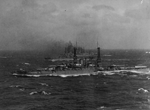 |
2.71k | Original captions states, "Fleet at Sea, July 24, 1919." Probably New Mexico class battleships: New Mexico (BB-40), Mississippi (BB-41), and Idaho (BB-42). | Secretary of the Navy Josephus Daniels Collection, USN photo # PR-06-CN-454-C6-F6-32, from the National Museum of the U.S. Navy, courtesy of flickr.com. | ||||||||||||||||||||||||||||||||||||||||||||||||||||||||||||||||||||||||||||||||||||||||||||||||||||||||||||||||||||||||||||||||||||||||||||||||||||||||||||||||||||||||||||||||||||||||||||||||||||||||||||||||||||||||||||||||||||||||||||||||||||||||||||||||||||||||||||||||||||||||||||||||||||||||||||||||||||||||||||||||||||||||||||||||||||||||||||||||||||||||||||||||||||||||||||||||||||||||||||||||||||||||||||||||||||||||||||||||||||||||||||||||||||||||||||||||||||||||||||||||||||||||||||||||||||||||||||||||||||||||||||||||||||||||||||||||||||||||||||||||||||||||||||||||||||||||||||||||||||||||||||||||||||||||||||||||||||||||||||||||||||||||||||||||||||||||||||||||||||||||||||||||||||||||||||||||||||||||||||||||||||||||||||||||||||||||||||||||||||||||||||||||||||||||||||||||||||||||||||||||||||||||||||||||||||||||||||||||||||||||||||||||||||||||||||||||||||||||||||||||||||||||||||||||||||||||||||||||||||||||||||||||||||||||||||||||||||||||||||||||||||||||||||||||||||||||||||||||||||
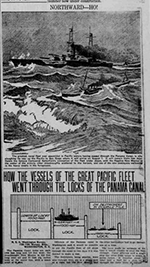 |
559k | PANAMA CANAL RECEIVED IT'S GREATEST TEST IN ARMADA'S PASSAGE Establishment of New Fleet Is Only First Step in Assertion of United States Naval Power in Pacific; We Can Meet on Equal Terms Any Squadron That Can Be Assembled. The greatest naval fleet ever assembled in Pacific waters having passed through the Panama Canal,... ploughing its way up the Pacific to San Diego where it will arrive on August 7...Heres the famous Cartoonist Satterfield's conception of the fleet under steam, with the flagship New Mexico in the center of the picture, other dreadnoughts scattered to the horizon, and one of the new destroyers wallowing in the heavy swells in the foreground. |
Image and text provided by Arizona State Library, Archives and Public Records; Phoenix, AZ. Photo from Arizona Republican.(Phoenix, Ariz.) 1890-1930, 30 July 1919, Image 9, via chroniclingamerica.loc.gov. | ||||||||||||||||||||||||||||||||||||||||||||||||||||||||||||||||||||||||||||||||||||||||||||||||||||||||||||||||||||||||||||||||||||||||||||||||||||||||||||||||||||||||||||||||||||||||||||||||||||||||||||||||||||||||||||||||||||||||||||||||||||||||||||||||||||||||||||||||||||||||||||||||||||||||||||||||||||||||||||||||||||||||||||||||||||||||||||||||||||||||||||||||||||||||||||||||||||||||||||||||||||||||||||||||||||||||||||||||||||||||||||||||||||||||||||||||||||||||||||||||||||||||||||||||||||||||||||||||||||||||||||||||||||||||||||||||||||||||||||||||||||||||||||||||||||||||||||||||||||||||||||||||||||||||||||||||||||||||||||||||||||||||||||||||||||||||||||||||||||||||||||||||||||||||||||||||||||||||||||||||||||||||||||||||||||||||||||||||||||||||||||||||||||||||||||||||||||||||||||||||||||||||||||||||||||||||||||||||||||||||||||||||||||||||||||||||||||||||||||||||||||||||||||||||||||||||||||||||||||||||||||||||||||||||||||||||||||||||||||||||||||||||||||||||||||||||||||||||||||
 |
134k | New Mexico (BB-40) traverses the Culebra Cut, Panama Canal, 25 July 1919. | USN photo courtesy of David Buell. Image and text provided by The New York Public Library, Astor, Lenox and Tilden Foundation. Photo by The Evening World. (New York, N.Y.) 1887-1931, 26 July 1919, Final Edition, Image 1, courtesy of chroniclingamerica.loc.gov. | ||||||||||||||||||||||||||||||||||||||||||||||||||||||||||||||||||||||||||||||||||||||||||||||||||||||||||||||||||||||||||||||||||||||||||||||||||||||||||||||||||||||||||||||||||||||||||||||||||||||||||||||||||||||||||||||||||||||||||||||||||||||||||||||||||||||||||||||||||||||||||||||||||||||||||||||||||||||||||||||||||||||||||||||||||||||||||||||||||||||||||||||||||||||||||||||||||||||||||||||||||||||||||||||||||||||||||||||||||||||||||||||||||||||||||||||||||||||||||||||||||||||||||||||||||||||||||||||||||||||||||||||||||||||||||||||||||||||||||||||||||||||||||||||||||||||||||||||||||||||||||||||||||||||||||||||||||||||||||||||||||||||||||||||||||||||||||||||||||||||||||||||||||||||||||||||||||||||||||||||||||||||||||||||||||||||||||||||||||||||||||||||||||||||||||||||||||||||||||||||||||||||||||||||||||||||||||||||||||||||||||||||||||||||||||||||||||||||||||||||||||||||||||||||||||||||||||||||||||||||||||||||||||||||||||||||||||||||||||||||||||||||||||||||||||||||||||||||||||||
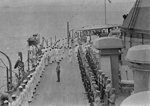 |
257k | US Navy Fleet In Panama Canal; (Visit of Panama President, standing, wearing a gray suit and standing on the gangway platform) in Panama Canal aboard the New Mexico (BB-40), 26 July 1919. | © Associated Press Photo courtesy of San Francisco Examiner via David S. Smith. | ||||||||||||||||||||||||||||||||||||||||||||||||||||||||||||||||||||||||||||||||||||||||||||||||||||||||||||||||||||||||||||||||||||||||||||||||||||||||||||||||||||||||||||||||||||||||||||||||||||||||||||||||||||||||||||||||||||||||||||||||||||||||||||||||||||||||||||||||||||||||||||||||||||||||||||||||||||||||||||||||||||||||||||||||||||||||||||||||||||||||||||||||||||||||||||||||||||||||||||||||||||||||||||||||||||||||||||||||||||||||||||||||||||||||||||||||||||||||||||||||||||||||||||||||||||||||||||||||||||||||||||||||||||||||||||||||||||||||||||||||||||||||||||||||||||||||||||||||||||||||||||||||||||||||||||||||||||||||||||||||||||||||||||||||||||||||||||||||||||||||||||||||||||||||||||||||||||||||||||||||||||||||||||||||||||||||||||||||||||||||||||||||||||||||||||||||||||||||||||||||||||||||||||||||||||||||||||||||||||||||||||||||||||||||||||||||||||||||||||||||||||||||||||||||||||||||||||||||||||||||||||||||||||||||||||||||||||||||||||||||||||||||||||||||||||||||||||||||||||
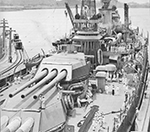 |
598k | New Mexico (BB-40) entering Miraflores Lake in the Panama Canal on 26 July 1919, shows off her No.3 triple 14in/50 turret. | Photo & text scanned from Naval Weapons of World War One, by Norman Friedman, Published in Great Britain by Seaforth Publishing via Robert Hurst. | ||||||||||||||||||||||||||||||||||||||||||||||||||||||||||||||||||||||||||||||||||||||||||||||||||||||||||||||||||||||||||||||||||||||||||||||||||||||||||||||||||||||||||||||||||||||||||||||||||||||||||||||||||||||||||||||||||||||||||||||||||||||||||||||||||||||||||||||||||||||||||||||||||||||||||||||||||||||||||||||||||||||||||||||||||||||||||||||||||||||||||||||||||||||||||||||||||||||||||||||||||||||||||||||||||||||||||||||||||||||||||||||||||||||||||||||||||||||||||||||||||||||||||||||||||||||||||||||||||||||||||||||||||||||||||||||||||||||||||||||||||||||||||||||||||||||||||||||||||||||||||||||||||||||||||||||||||||||||||||||||||||||||||||||||||||||||||||||||||||||||||||||||||||||||||||||||||||||||||||||||||||||||||||||||||||||||||||||||||||||||||||||||||||||||||||||||||||||||||||||||||||||||||||||||||||||||||||||||||||||||||||||||||||||||||||||||||||||||||||||||||||||||||||||||||||||||||||||||||||||||||||||||||||||||||||||||||||||||||||||||||||||||||||||||||||||||||||||||||||
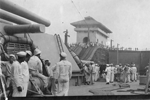 |
296k | Deck view from the New Mexico (BB-40) in the Panama Canal, 1919. | © Associated Press Photo courtesy of San Francisco Examiner via David S. Smith. | ||||||||||||||||||||||||||||||||||||||||||||||||||||||||||||||||||||||||||||||||||||||||||||||||||||||||||||||||||||||||||||||||||||||||||||||||||||||||||||||||||||||||||||||||||||||||||||||||||||||||||||||||||||||||||||||||||||||||||||||||||||||||||||||||||||||||||||||||||||||||||||||||||||||||||||||||||||||||||||||||||||||||||||||||||||||||||||||||||||||||||||||||||||||||||||||||||||||||||||||||||||||||||||||||||||||||||||||||||||||||||||||||||||||||||||||||||||||||||||||||||||||||||||||||||||||||||||||||||||||||||||||||||||||||||||||||||||||||||||||||||||||||||||||||||||||||||||||||||||||||||||||||||||||||||||||||||||||||||||||||||||||||||||||||||||||||||||||||||||||||||||||||||||||||||||||||||||||||||||||||||||||||||||||||||||||||||||||||||||||||||||||||||||||||||||||||||||||||||||||||||||||||||||||||||||||||||||||||||||||||||||||||||||||||||||||||||||||||||||||||||||||||||||||||||||||||||||||||||||||||||||||||||||||||||||||||||||||||||||||||||||||||||||||||||||||||||||||||||||
 | 216k | The dreadnought New Mexico (BB-40) passing through the Panama Canal. | Photo by Underwood & Underwood. Photo courtesy of periodpaper.com | ||||||||||||||||||||||||||||||||||||||||||||||||||||||||||||||||||||||||||||||||||||||||||||||||||||||||||||||||||||||||||||||||||||||||||||||||||||||||||||||||||||||||||||||||||||||||||||||||||||||||||||||||||||||||||||||||||||||||||||||||||||||||||||||||||||||||||||||||||||||||||||||||||||||||||||||||||||||||||||||||||||||||||||||||||||||||||||||||||||||||||||||||||||||||||||||||||||||||||||||||||||||||||||||||||||||||||||||||||||||||||||||||||||||||||||||||||||||||||||||||||||||||||||||||||||||||||||||||||||||||||||||||||||||||||||||||||||||||||||||||||||||||||||||||||||||||||||||||||||||||||||||||||||||||||||||||||||||||||||||||||||||||||||||||||||||||||||||||||||||||||||||||||||||||||||||||||||||||||||||||||||||||||||||||||||||||||||||||||||||||||||||||||||||||||||||||||||||||||||||||||||||||||||||||||||||||||||||||||||||||||||||||||||||||||||||||||||||||||||||||||||||||||||||||||||||||||||||||||||||||||||||||||||||||||||||||||||||||||||||||||||||||||||||||||||||||||||||||||||
 | 2.50k | PACIFIC FLEET NOW EQUAL IF NOT SUPERIOR TO WHOLE JAPANESE NAVY Aboard New Mexico (BB-40), Friday, 25 July by © Associated Press Photo. —Four dreadnaughts of the Pacific fleet, the New Mexico, Arkansas (BB-33), Texas (BB-35) and New York (BB-34) were lifted successfully through Gatun lock today. This was the first attempt to negotiate the waterway with a fleet of dreadnaughts and tonight the warships lie anchored in fresh water at Gatun lake, 85 feet above sea level. The dreadnaughts will resume their trip toward the Pacific ocean Saturday at which time the Mississippi (BB-41) and the Wyoming (BB-32), both now coaling and oiling at Colon will attempt the passage of the canal. Twenty destroyers went through the canal Thursday passing through the locks in groups of ten. Captain Twining, chief of staff said that the canal had proved its naval value beyond a doubt as dreadnaughts may be easily moved from the Atlantic to the Pacific with celerity and without trouble as shown by today's operations. The Pacific fleet will leave Panama for San Diego, California, Sunday night. | Image and text provided by State Historical Society of North Dakota. Photo from The Bismarck Tribune. (Bismarck, N.D.) 1916-current, 26 July 1919, Image 1, via chroniclingamerica.loc.gov. | ||||||||||||||||||||||||||||||||||||||||||||||||||||||||||||||||||||||||||||||||||||||||||||||||||||||||||||||||||||||||||||||||||||||||||||||||||||||||||||||||||||||||||||||||||||||||||||||||||||||||||||||||||||||||||||||||||||||||||||||||||||||||||||||||||||||||||||||||||||||||||||||||||||||||||||||||||||||||||||||||||||||||||||||||||||||||||||||||||||||||||||||||||||||||||||||||||||||||||||||||||||||||||||||||||||||||||||||||||||||||||||||||||||||||||||||||||||||||||||||||||||||||||||||||||||||||||||||||||||||||||||||||||||||||||||||||||||||||||||||||||||||||||||||||||||||||||||||||||||||||||||||||||||||||||||||||||||||||||||||||||||||||||||||||||||||||||||||||||||||||||||||||||||||||||||||||||||||||||||||||||||||||||||||||||||||||||||||||||||||||||||||||||||||||||||||||||||||||||||||||||||||||||||||||||||||||||||||||||||||||||||||||||||||||||||||||||||||||||||||||||||||||||||||||||||||||||||||||||||||||||||||||||||||||||||||||||||||||||||||||||||||||||||||||||||||||||||||||||||
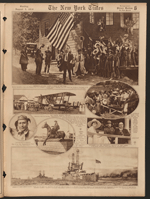 |
3.89k | "America's first great Pacific Fleet on its historic journey by way of the Panama Canal to San Francisco where it is to be reviewed by President Wilson in the middle of this month. Leaving Hampton Roads in a majestic procession. Admiral Rodman's flagship, the dreadnought New Mexico (BB-40), appearing in the foreground." | Photo by Underwood & Underwood, & text courtesy of N.Y. Times, 3 August 1919, Page 5, courtesy of memory.loc.gov. | ||||||||||||||||||||||||||||||||||||||||||||||||||||||||||||||||||||||||||||||||||||||||||||||||||||||||||||||||||||||||||||||||||||||||||||||||||||||||||||||||||||||||||||||||||||||||||||||||||||||||||||||||||||||||||||||||||||||||||||||||||||||||||||||||||||||||||||||||||||||||||||||||||||||||||||||||||||||||||||||||||||||||||||||||||||||||||||||||||||||||||||||||||||||||||||||||||||||||||||||||||||||||||||||||||||||||||||||||||||||||||||||||||||||||||||||||||||||||||||||||||||||||||||||||||||||||||||||||||||||||||||||||||||||||||||||||||||||||||||||||||||||||||||||||||||||||||||||||||||||||||||||||||||||||||||||||||||||||||||||||||||||||||||||||||||||||||||||||||||||||||||||||||||||||||||||||||||||||||||||||||||||||||||||||||||||||||||||||||||||||||||||||||||||||||||||||||||||||||||||||||||||||||||||||||||||||||||||||||||||||||||||||||||||||||||||||||||||||||||||||||||||||||||||||||||||||||||||||||||||||||||||||||||||||||||||||||||||||||||||||||||||||||||||||||||||||||||||||||||
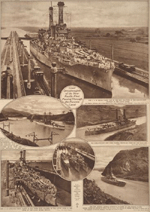 | 3.90k | Giant Dreadnoughts of the New Pacific Fleet through Panama Canal. The Texas (BB-35) transiting through Gatun Locks on 25 July 1919. Pictured also are the New Mexico (BB-40), New York (BB-34) & Arkansas (BB-33). | Photo by Times Wide World Service, & text courtesy of N.Y. Times, 17 August 1919, Page 2, courtesy of memory.loc.gov. | ||||||||||||||||||||||||||||||||||||||||||||||||||||||||||||||||||||||||||||||||||||||||||||||||||||||||||||||||||||||||||||||||||||||||||||||||||||||||||||||||||||||||||||||||||||||||||||||||||||||||||||||||||||||||||||||||||||||||||||||||||||||||||||||||||||||||||||||||||||||||||||||||||||||||||||||||||||||||||||||||||||||||||||||||||||||||||||||||||||||||||||||||||||||||||||||||||||||||||||||||||||||||||||||||||||||||||||||||||||||||||||||||||||||||||||||||||||||||||||||||||||||||||||||||||||||||||||||||||||||||||||||||||||||||||||||||||||||||||||||||||||||||||||||||||||||||||||||||||||||||||||||||||||||||||||||||||||||||||||||||||||||||||||||||||||||||||||||||||||||||||||||||||||||||||||||||||||||||||||||||||||||||||||||||||||||||||||||||||||||||||||||||||||||||||||||||||||||||||||||||||||||||||||||||||||||||||||||||||||||||||||||||||||||||||||||||||||||||||||||||||||||||||||||||||||||||||||||||||||||||||||||||||||||||||||||||||||||||||||||||||||||||||||||||||||||||||||||||||||
 |
339k | New Mexico (BB-40) and Wyoming (BB-32) passing through Miraflores lock, 8 August 1919. | © Associated Press Photo courtesy of San Francisco Examiner via David S. Smith. | ||||||||||||||||||||||||||||||||||||||||||||||||||||||||||||||||||||||||||||||||||||||||||||||||||||||||||||||||||||||||||||||||||||||||||||||||||||||||||||||||||||||||||||||||||||||||||||||||||||||||||||||||||||||||||||||||||||||||||||||||||||||||||||||||||||||||||||||||||||||||||||||||||||||||||||||||||||||||||||||||||||||||||||||||||||||||||||||||||||||||||||||||||||||||||||||||||||||||||||||||||||||||||||||||||||||||||||||||||||||||||||||||||||||||||||||||||||||||||||||||||||||||||||||||||||||||||||||||||||||||||||||||||||||||||||||||||||||||||||||||||||||||||||||||||||||||||||||||||||||||||||||||||||||||||||||||||||||||||||||||||||||||||||||||||||||||||||||||||||||||||||||||||||||||||||||||||||||||||||||||||||||||||||||||||||||||||||||||||||||||||||||||||||||||||||||||||||||||||||||||||||||||||||||||||||||||||||||||||||||||||||||||||||||||||||||||||||||||||||||||||||||||||||||||||||||||||||||||||||||||||||||||||||||||||||||||||||||||||||||||||||||||||||||||||||||||||||||||||||
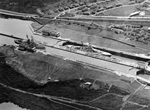 |
1.60k | Wyoming (BB-32) and the stern of the New Mexico (BB-40) passing through Gatun lock, 8 August 1919. | USN photo courtesy of Darryl L. Baker. | ||||||||||||||||||||||||||||||||||||||||||||||||||||||||||||||||||||||||||||||||||||||||||||||||||||||||||||||||||||||||||||||||||||||||||||||||||||||||||||||||||||||||||||||||||||||||||||||||||||||||||||||||||||||||||||||||||||||||||||||||||||||||||||||||||||||||||||||||||||||||||||||||||||||||||||||||||||||||||||||||||||||||||||||||||||||||||||||||||||||||||||||||||||||||||||||||||||||||||||||||||||||||||||||||||||||||||||||||||||||||||||||||||||||||||||||||||||||||||||||||||||||||||||||||||||||||||||||||||||||||||||||||||||||||||||||||||||||||||||||||||||||||||||||||||||||||||||||||||||||||||||||||||||||||||||||||||||||||||||||||||||||||||||||||||||||||||||||||||||||||||||||||||||||||||||||||||||||||||||||||||||||||||||||||||||||||||||||||||||||||||||||||||||||||||||||||||||||||||||||||||||||||||||||||||||||||||||||||||||||||||||||||||||||||||||||||||||||||||||||||||||||||||||||||||||||||||||||||||||||||||||||||||||||||||||||||||||||||||||||||||||||||||||||||||||||||||||||||||||
 |
723k | New Mexico (BB-40) running at night in dense fog, note the 14"/50 cal gun turret, undated. | Secretary of the Navy Josephus Daniels Collection, USN photo # PR-06-CN-454-C6-F6-30, from the National Museum of the U.S. Navy, courtesy of flickr.com. | ||||||||||||||||||||||||||||||||||||||||||||||||||||||||||||||||||||||||||||||||||||||||||||||||||||||||||||||||||||||||||||||||||||||||||||||||||||||||||||||||||||||||||||||||||||||||||||||||||||||||||||||||||||||||||||||||||||||||||||||||||||||||||||||||||||||||||||||||||||||||||||||||||||||||||||||||||||||||||||||||||||||||||||||||||||||||||||||||||||||||||||||||||||||||||||||||||||||||||||||||||||||||||||||||||||||||||||||||||||||||||||||||||||||||||||||||||||||||||||||||||||||||||||||||||||||||||||||||||||||||||||||||||||||||||||||||||||||||||||||||||||||||||||||||||||||||||||||||||||||||||||||||||||||||||||||||||||||||||||||||||||||||||||||||||||||||||||||||||||||||||||||||||||||||||||||||||||||||||||||||||||||||||||||||||||||||||||||||||||||||||||||||||||||||||||||||||||||||||||||||||||||||||||||||||||||||||||||||||||||||||||||||||||||||||||||||||||||||||||||||||||||||||||||||||||||||||||||||||||||||||||||||||||||||||||||||||||||||||||||||||||||||||||||||||||||||||||||||||||
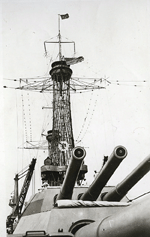 |
201k | At the main-truck of the electric marvel floats the four star flag of Admiral Rodman, C & C of the U.S. Pacific Fleet. | © Associated Press Photo courtesy of San Francisco Examiner via David S. Smith. | ||||||||||||||||||||||||||||||||||||||||||||||||||||||||||||||||||||||||||||||||||||||||||||||||||||||||||||||||||||||||||||||||||||||||||||||||||||||||||||||||||||||||||||||||||||||||||||||||||||||||||||||||||||||||||||||||||||||||||||||||||||||||||||||||||||||||||||||||||||||||||||||||||||||||||||||||||||||||||||||||||||||||||||||||||||||||||||||||||||||||||||||||||||||||||||||||||||||||||||||||||||||||||||||||||||||||||||||||||||||||||||||||||||||||||||||||||||||||||||||||||||||||||||||||||||||||||||||||||||||||||||||||||||||||||||||||||||||||||||||||||||||||||||||||||||||||||||||||||||||||||||||||||||||||||||||||||||||||||||||||||||||||||||||||||||||||||||||||||||||||||||||||||||||||||||||||||||||||||||||||||||||||||||||||||||||||||||||||||||||||||||||||||||||||||||||||||||||||||||||||||||||||||||||||||||||||||||||||||||||||||||||||||||||||||||||||||||||||||||||||||||||||||||||||||||||||||||||||||||||||||||||||||||||||||||||||||||||||||||||||||||||||||||||||||||||||||||||||||||
 | 727k | Naval Chief Visits Pacific Fleet. SECRETARY OF THE NAVY DANIELS boarding the New Mexico (BB-40), flagship of the huge new Pacific fleet, upon its arrival at San Diego, Calif., after successfully passing through the Panama Canal. |
Photo by Underwood & Underwood. Image and text provided by Penn State University Libraries; University Park, PA. Photo from Evening Public Ledger. (Philadelphia [Pa.]) 1914-1942, 14 August 1919, Final, Image 24, via chroniclingamerica.loc.gov. |
||||||||||||||||||||||||||||||||||||||||||||||||||||||||||||||||||||||||||||||||||||||||||||||||||||||||||||||||||||||||||||||||||||||||||||||||||||||||||||||||||||||||||||||||||||||||||||||||||||||||||||||||||||||||||||||||||||||||||||||||||||||||||||||||||||||||||||||||||||||||||||||||||||||||||||||||||||||||||||||||||||||||||||||||||||||||||||||||||||||||||||||||||||||||||||||||||||||||||||||||||||||||||||||||||||||||||||||||||||||||||||||||||||||||||||||||||||||||||||||||||||||||||||||||||||||||||||||||||||||||||||||||||||||||||||||||||||||||||||||||||||||||||||||||||||||||||||||||||||||||||||||||||||||||||||||||||||||||||||||||||||||||||||||||||||||||||||||||||||||||||||||||||||||||||||||||||||||||||||||||||||||||||||||||||||||||||||||||||||||||||||||||||||||||||||||||||||||||||||||||||||||||||||||||||||||||||||||||||||||||||||||||||||||||||||||||||||||||||||||||||||||||||||||||||||||||||||||||||||||||||||||||||||||||||||||||||||||||||||||||||||||||||||||||||||||||||||||||||||
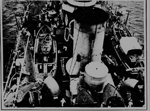 |
789k | Looking forward from the aft fighting top of the New Mexico, the flagship of the Pacific Fleet, showing a part of the modern dreadnought's complicated equipment. The ship's garbage incinerator (to the right of the stack) is a novel piece of deck equipment. | Times World Wide Photo, text courtesy of N.Y. Times 24 August 1919, Page 6, courtesy of memory.loc.gov. Insert Image and text provided by Library of Congress, Washington, DC. Photo from New-York Tribune. (New York [N.Y.]) 1866-1924, 24 August 1919, Image 45, via chroniclingamerica.loc.gov. |
||||||||||||||||||||||||||||||||||||||||||||||||||||||||||||||||||||||||||||||||||||||||||||||||||||||||||||||||||||||||||||||||||||||||||||||||||||||||||||||||||||||||||||||||||||||||||||||||||||||||||||||||||||||||||||||||||||||||||||||||||||||||||||||||||||||||||||||||||||||||||||||||||||||||||||||||||||||||||||||||||||||||||||||||||||||||||||||||||||||||||||||||||||||||||||||||||||||||||||||||||||||||||||||||||||||||||||||||||||||||||||||||||||||||||||||||||||||||||||||||||||||||||||||||||||||||||||||||||||||||||||||||||||||||||||||||||||||||||||||||||||||||||||||||||||||||||||||||||||||||||||||||||||||||||||||||||||||||||||||||||||||||||||||||||||||||||||||||||||||||||||||||||||||||||||||||||||||||||||||||||||||||||||||||||||||||||||||||||||||||||||||||||||||||||||||||||||||||||||||||||||||||||||||||||||||||||||||||||||||||||||||||||||||||||||||||||||||||||||||||||||||||||||||||||||||||||||||||||||||||||||||||||||||||||||||||||||||||||||||||||||||||||||||||||||||||||||||||||||
 |
749k | Twin Billing: "The Super-dreadnought New Mexico (BB-40), Admiral Rodman's flagship of the new Pacific Fleet, firing the salute of nineteen guns in honor of Secretary Daniels at the first review of the Fleet in Pacific waters." Secretary of the Navy Daniels and Admiral Rodman, commander of the Pacific Fleet, receiving citizens of San Diego on board the flagship New Mexico. |
Times World Wide Photo. Text courtesy of N.Y. Times 24 August 1919, Page 8, cdn.loc.gov | ||||||||||||||||||||||||||||||||||||||||||||||||||||||||||||||||||||||||||||||||||||||||||||||||||||||||||||||||||||||||||||||||||||||||||||||||||||||||||||||||||||||||||||||||||||||||||||||||||||||||||||||||||||||||||||||||||||||||||||||||||||||||||||||||||||||||||||||||||||||||||||||||||||||||||||||||||||||||||||||||||||||||||||||||||||||||||||||||||||||||||||||||||||||||||||||||||||||||||||||||||||||||||||||||||||||||||||||||||||||||||||||||||||||||||||||||||||||||||||||||||||||||||||||||||||||||||||||||||||||||||||||||||||||||||||||||||||||||||||||||||||||||||||||||||||||||||||||||||||||||||||||||||||||||||||||||||||||||||||||||||||||||||||||||||||||||||||||||||||||||||||||||||||||||||||||||||||||||||||||||||||||||||||||||||||||||||||||||||||||||||||||||||||||||||||||||||||||||||||||||||||||||||||||||||||||||||||||||||||||||||||||||||||||||||||||||||||||||||||||||||||||||||||||||||||||||||||||||||||||||||||||||||||||||||||||||||||||||||||||||||||||||||||||||||||||||||||||||||||
 | 643k | ADMIRAL HUGH RODMAN'S MIGHTY PACIFIC ARMADA REACHES ITS HOME "WATERS" Four of our new Pacific Fleet's six dreadnoughts on their way up the California coast to San Diego. That city witnessed the greatest naval pageant in its' history when the fleet of nearly 200 ships ended its 5,000-mile cruise in the harbor. Secretary of the Navy Daniels was the reviewing officer. | Image and text provided by Library of Congress, Washington, DC. Photo from New-York Tribune. (New York [N.Y.]) 1866-1924, 24 August 1919, Image 43, via chroniclingamerica.loc.gov.  899k | Aboard the New Mexico (BB-40), the First Electric Ship | . Image and text provided by Library of Congress, Washington, DC. | Photo from New-York Tribune. (New York [N.Y.]) 1866-1924, 07 September 1919, Image 71, via chroniclingamerica.loc.gov. 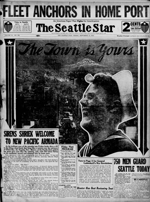 014087d NR | SIRENS SHRIEK WELCOME TO NEW PACIFIC ARMADA. | Image and text provided by Washington State Library; Olympia, WA. | Photo from The Seattle Star. [volume] (Seattle, Wash.) 1899-1947, 12 September 1919, Image 1, courtesy of chroniclingamerica.loc.gov.  0811210 755k |
S-7 (SS-112) and the stern of the New Mexico (BB-40), circa 1920's. |
Photo i.d. via Richard M. Jensen. | USN photo thanks to Jim Kurrasch @ Battleship Iowa, Pacific Battleship Center. 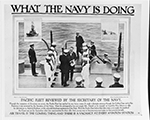 159k |
Recruiting Poster: What the Navy is Doing: Pacific Fleet Reviewed by the Secretary of the Navy | Showing Honorable Josephus Daniels, Secretary of the Navy, arriving aboard New Mexico (BB-40) being greeted by Rear Admiral Hugh Rodman. Secretary of the Navy Josephus Daniels Collection, USN photo # NH 76719-KN, courtesy of history.navy.mil. | 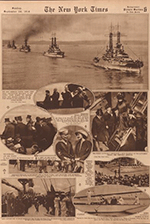 708k |
"President Wilson, Secretary of the Navy Daniels and others of the reviewing party stand with bare heads while.." |
..The super-dreadnought New Mexico (BB-40), flagship of the Pacific Fleet, steamed past with the band playing The Star Spangled Banner. The new American Pacific Fleet, first great dreadnought squadron on the Pacific coast, making it's historic entry into Seattle Harbor for its first review by the President of the United States." ..Reviewing the Pacific Fleet from the bridge of the Oregon (BB-3). From left to right are Mrs. Wilson, the President, Sec. Daniels & Mrs. Daniels... "Mrs. Wilson cautiously descending a staircase on the battleship Oregon, the President assisting." Times Wide World Photo Service. | Text courtesy of N.Y. Times 28 September 1919, Page 7, courtesy of cdn.loc.gov  NR | Three of the four giant propellers that drive the oil-burning New Mexico (BB-40), flagship of the Pacific Fleet, and the first electrically driven battleship in the world. Each propeller is driven by an 8.000 h. p. electric motor. | Image and text provided by Library of Congress, Washington, DC. | Photo from New-York Tribune. (New York [N.Y.]) 1866-1924, 28 September 1919, Page 6, Image 58, via chroniclingamerica.loc.gov. 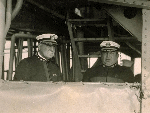 157k |
September 1919. Admiral Hugh Rodman (on the left) Commander, Battleship Division 9, Pacific Fleet, on the Bridge of the New Mexico (BB-40) consulting with her commanding officer Captain Arthur Lee Willard.
|
Image from the Bancroft Library. University of California, Berkeley, courtesy of Bill Gonyo. |  1.18k |
New Mexico (BB-40) Marine and sailors pose with the ship's dog mascot, probably 1919. Collection of Secretary of the Navy Josephus Daniels. |
USN photo # Lot 5422-13, courtesy of the Library of Congress, from the National Museum of the U.S. Navy, courtesy of flickr.com.
| 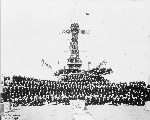 701k |
Crew of the New Mexico (BB-40) posed on deck, on large guns. Photo inscription is Long Beach, California.
|
Photo # J239186 U.S. Copyright Office. Digital ID: cph 3c08389, Source: Library of Congress, by C.E. Waterman, Long Beach, Calif. Photo courtesy of Bill Gonyo. |  539k |
Port side beam of the New Mexico (BB-40) taken at Balboa, the Pacific entrance to the Panama Canal. |
USN photo courtesy of Robert M. Cieri. |  210k |
Two officers gigs and a lighter are moored alongside the New Mexico (BB-40), circa 1919, in San Francisco Bay. |
USN photo courtesy of Robert M. Cieri. | 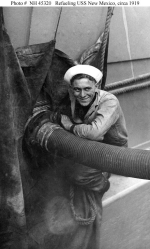 70k |
Sailor tightens an oil refueling coupling on board, circa 1919.
The original caption reads: "Coaling ship holds no terrors for the gobs on the New Mexico (BB-40) as on our latest oil burning types of super dreadnought all that is necessary is to connect the hose and turn on the valve." |
Official USN photo Naval History and Heritage Command # NH 45320, now in the collections of the National Archives. |
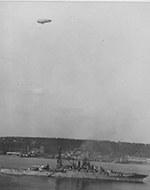 569k | One of the balloons that patrolled the coast over the New Mexico (BB-40) now at anchor in the Hudson River. These balloons at sea to detect submarines and other enemy craft. | Photographer: Western Newspaper Union. |
Photo i.d. courtesy of Jacob Swisher via Richard Jensen. National Archives Identifier: 20807814 Local Identifier: 165-WW-63D-4 Photo courtesy of catalog.archives.gov 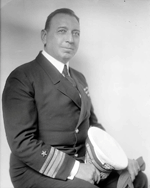 50k | Captain Arthur Lee Willard was the commanding officer of the battleship New Mexico (BB-40) from 1919 to 1921. Renewed problems with naval armaments saw Willard assigned as Special Aide for Navy Yards to the Secretary of the Navy in 1921. In this capacity he was in charge of all U.S. Navy industrial plants and shipbuilding on the eastern U.S. coast. In 1930, now holding the rank of Vice Admiral, Willard was assigned as commander of a series of U.S. fleet exercises that validated the increasing importance of aircraft carriers and attacks launched from beyond battleship gun range. These fleet exercises also inspired the creation of a two-ocean Navy in the 1930s by the Roosevelt administration. In 1932 Vice Admiral Willard was chosen to command the Fifth Naval District, a post which he held until retirement shortly before his death on 7 April 1935. He is buried in Arlington National Cemetery. Willard Park, located at Washington Navy Yard, is named in his honor. | Photo courtesy of the Library of Congress via Bill Gonyo.
|  3.49k |
"The dreadnought New Mexico (BB-40), flagship of the newly created Pacific Fleet, entering the Golden Gate, San Francisco, in a pathway of equally golden sunlight, as seen from a Navy seaplane in flight nearly a thousand feet above." |
U.S. Navy official Photo, from Kadel & Herbert, text courtesy of N.Y. Times 21 December 1919, Page 7, courtesy of memory.loc.gov. |
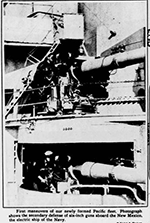 858k |
First maneuvers of our newly formed Pacific fleet. Photograph shows the secondary defense of five-inch guns aboard the New Mexico (BB-40), the electric ship of the Navy. |
Image and text provided by Library of Congress, Washington, DC. | Photo from Evening Star. (Washington, D.C.) 1854-1972, 11 January 1920, Image 68, via chroniclingamerica.loc.gov. 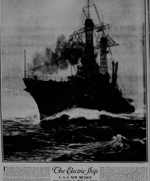 NR | The Electric Ship, New Mexico (BB-40), from a painting by Walter L. Greene. |
Image provided by: Library of Congress, Washington, DC. |
Photo & text by New-York Tribune. (New York [N.Y.]) 1866-1924, 18 January 1920, page 4, Image 52, via chroniclingamerica.loc.gov. 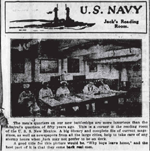 488k | U.S. NAVY |
Jack's Reading Room The men's quarters on our new battleships are more luxurious than the Admiral's quarters of fifty years ago. This is a corner in the reading room of the New Mexico (BB-40). A big library and complete file of current magazines, as well as newspapers from all the large cities, help to take care of any stormy hours when Jack may not prefer to be on deck. A good title for this picture would be, "Why boys leave home," and the best part of it is that they come back real men. Image and text provided by University of Utah, Marriott Library. |
Photo & text by The Logan Republican. (Logan, Utah) 1902-1924, 17 April 1920, Image 3, via chroniclingamerica.loc.gov. 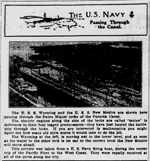 NR | The U.S. Navy & Passing Through the Canal | The Wyoming (BB-32) and the New Mexico (BB-40) are shown here passing through the Pedro Miguel locks of the Panama Canal. The electric engines along the side of the locks are called "mules" in deference to their four legged predecessors they have just hauled the battle ship through the locks. If you are interested in mathematics you might figure out how many old style mules it would take to do the job. The Wyoming at the left is moving out to the lower level, and as soon as the water in the other lock is let out to the correct level the New Mexico will move ahead. This picture was taken from a U. S. Navy flying boat, during the recent trip of the Pacific Fleet to the West Coast. They were royally received at all of the ports along the trip.
Image and text provided by Washington State Library; Olympia, WA. |
Photo & text by The Lynden Tribune. (Lynden, Wash.) 1908-current, 19 August 1920, Image 15, courtesy of chroniclingamerica.loc.gov.  186k |
The New Mexico (BB-40), at Bremerton, Washington, circa 1920. |
USN photo courtesy of Robert M. Cieri. |  435k |
Shown here about 1920 showing the distinctive bridge of the class, as completed. Wet, hull mounted secondary guns have been removed and the ports plated over. |
USN photo courtesy of Darryl L. Baker. |
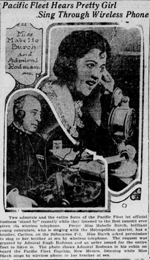 NR |
Pacific Fleet Hears Pretty Girl Sing Through Wireless Phone |
Two admirals and the entire force of the Pacific Fleet let official busines "stand by" recently while they listened to the first concert ever given via wireless telephone. Pretty Miss Mabelle Burch, brilliant young coloratura, who is singing with the Metropolitan quartet, has a brother, Carlton, on the Submarine F-2 (SS-21). Miss Burch asked permission to sing to her brother at sea by wireless telephone. The request was granted by Admiral Hugh Rodman and an order Issued for the entire fleet to listen in. The photo shows Admiral Rodman in his cabin on board the Pacific Fleet flagship. New Mexico (BB-40), listening while Miss Burch sings by wireless phone to her brother at sea. Image and text provided by University of Oregon Libraries; Eugene, OR. | Photo from the Capital Journal. (Salem, Or.) 1919-1980, 11 November 1920, Image 8, courtesy of chroniclingamerica.loc.gov.  237k | Foreground is definitely Tennessee (BB-43). In the middle is Idaho (BB-42) (darker camouflage note also the fantail catapult) and upper right is Arizona (BB-39), less certain but based on main mast platforms verses the New Mexico (BB-40). Middle background is New York (BB-34) (navigation bridge not over hanging conning tower). The far left background is the Texas (BB-35) (blunt bow, 2 funnels). |
The aircraft is a Naval Aircraft Factory / Curtiss / Canadian Aeroplane Ltd F-5L. The date of Mr. Kreisman's photo has to be 1920-1921. By 1922 all 14" and 16" gunned BB's (except New York and Texas as the 5th turret did not leave enough deck space) had been fitted with a compressed air catapult on the stern. The presence of a stern A/C catapult on only one of the three 1916 program BB's suggest this early in the introduction of this equipment but late enough for the turret top fly-off platforms to have been removed from all ships present. In 1919 the Battle Fleet shifted its base to San Pedro in California where it remained based until shifted to Pearl Harbor. The Texas and New York were assigned to that fleet until they returned east for modernization in 1925. This would suggest that the photo was taken some where in the Pacific. The rich flora onshore suggest a tropical climate and the enclosed by would lead me to guess Panama or Gitmo. If the 1920 or 1921 Fleet problem was conducted in Atlantic waters could explain an Atlantic based aircraft with a Pacific based Fleet. Photo courtesy of Lance Kreisman via Fabio Pena. | Photo & text i.d. courtesy of Chris Hoehn, Alan Moore & Richard Jensen. Aircraft i.d. courtesy of Alan Moore via Larkins, William T. US Navy Aircraft 1921-1941/US Marine Corps Aircraft 1914-1959. [The image came from the USMC aircraft section, pg(9).] Atglen, PA: Schiffer Publishing, 1995. (originally published as US Marine Corps Aircraft 1914-1959, copyright 1959, and US Navy Aircraft 1921-1941, copyright 1961).  119k |
Photograph taken by George R. Watson, L.A. Times staff photographer on 4 January 1921, from the forward turret of the New Mexico (BB-40) just as the former Hun sea scourge, UB-88 indicated by arrow, sank by the bow in her last dive. At the extreme right is the destroyer Wickes (DD-75), which acted as executioner and which had already passed it's target and the New Mexico as the UB-88 sank, though it began firing two miles to the left. In the inset are Admiral Rodman and Fred L. Baker. |
Photo & text courtesy of ub88.org. |
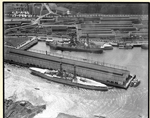 526k |
Canal Zone on 17 February 1921: The nearer ship is New Mexico (BB-40). The ship pier side behind the tanker is Pennsylvania (BB-38). |
Photo i.d. courtesy of Richard Jensen. | Photo from the collection of Lieutenant Thomas Marshall Colston during his naval service. US Navy and Marine Corps Museum/Naval Aviation Museum, Photo No. 1986.094.001.128. 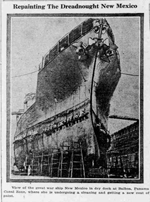 NR | Repainting The Dreadnought New Mexico (BB-40) Towering Above Huge Balboa Drydock | This unusual photograph shows the towering prow of the dreadnought New Mexico as seen from the floor of the huge drydock, 1,000 feet in length at Balboa, Panama Canal Zone. Hundreds of the battleship's crew are scraping and repainting her. Image and text provided by Arizona State Library, Archives and Public Records; Phoenix, AZ. & Connecticut State Library, Hartford, CT. | Photo & text by Arizona Republican. (Phoenix, Ariz.) 1890-1930, 13 February 1921, Section Two, Image 22, & The Bridgeport Times and Evening Farmer. (Bridgeport, Conn.) 1918-1924, 22 February 1921, Image 9, via chroniclingamerica.loc.gov. 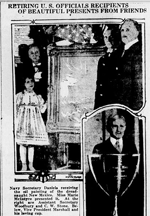 014002 NR |
RETIRING U. S. OFFICIALS RECIPIENTS OF BEAUTIFUL PRESENTS FROM FRIENDS |
Navy Secretary Daniels receiving the oil painting of the dreadnaught New Mexico (BB-40). Miss Marie Mclntyre presented it. At the right are Assistant Secretary Woodbury and C. W. Stone. Below, Vice President Marshall and his loving cup. Image and text provided by History Colorado. | Photo from Pueblo Chieftain. (Pueblo, Colo.) 1889-current, 16 March 1921, Image 3, courtesy of chroniclingamerica.loc.gov. 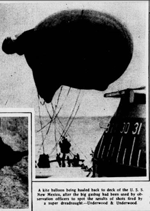 014020p NR | A kite balloon being hauled back to deck of the New Mexico (BB-40), after the big gasbag had been used by observation officers to spot the reults of shots fired by the super dreadnaught. |
Underwood & Underwood photo. |
Image and text provided by Louisiana State University; Baton Rouge, LA. Photo & text by The Herald. [volume] (New Orleans, La.) 1905-1953, 02 June 1921, June Bride, Image 15, via chroniclingamerica.loc.gov. 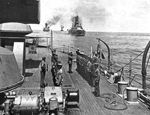 765k | US Marine inspection aboard the New Mexico (BB-40). Photographed through Mylar sleeve. | Collection of Secretary of the Navy Josephus Daniels. | USN photo # Lot 5416-6, courtesy of the National Museum of the U.S. Navy, via flickr.com.  549k |
New Mexico (BB-40) aerial oblique. Photograph received 1921. |
Official USN photograph # 80-G-461408 courtesy of National Museum of the U.S. Navy via flickr.com.
| 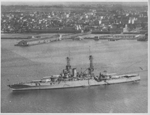 586k |
Warm day and plenty of sunshine off somewhere in California during the roaring 20's. |
US National Archives photo # 80-G-1035062 from NARA, College Park, Maryland, courtesy of Sean Hert. |
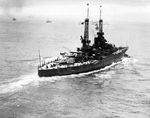 580k |
Starboard quarter view of the New Mexico (BB-40) underway on 8 July 1921.
|
Library of Congress photo # LC-F82-6405 via Mike Green. |
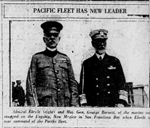 641k | PACIFIC FLEET HAS NEW LEADER | Admiral Eberle right and Major Gen George Barnett of the Marine Corp were snapped on the flagship New Mexico (BB-40) in San Francisco Bay when Eberle took over command of the Pacific fleet. Image and text provided by State Historical Society of Missouri; Columbia, MO. | Photo courtesy of The Columbia Evening Missourian. (Columbia, Mo.) 1920-1923, 18 July 1921, LAST EDITION, Image 5, via chroniclingamerica.loc.gov.  335k |
At anchor in the early 1920's. Range finders and fire control areas (on her masts) are easily seen. |
USN photo courtesy of Darryl L. Baker. |
 295k |
Awnings cover the stern as a gig pull up in the early 1920's. Another battleship protrudes behind her flag on the stern. |
USN photo courtesy of Darryl L. Baker. |
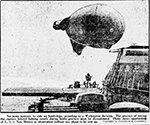 NR |
No more balloons to ride on battleship, according to a Washington decision. The practice of towing the captives behind fighting vessels during battle practice must be discontinued. Photo shows quarterdeck of the New Mexico (BB-40) as observation balloon was about to be sent up. |
Photo copyright by Underwood Underwood. | Image and text provided by Library of Congress, Washington, DC. Photo from Evening Star. (Washington, D.C.) 1854-1972, 14 October 1922, Image 12, via chroniclingamerica.loc.gov.  505k | Crews from the Nevada (BB-36) & New Mexico (BB-40) engage in boat races under oar power with Point Loma on the horizon during the early 1920's. | Of the many ships pictured, the Macdonough (DD-331) is in the upper right and the Williamson (DD-244) is in the upper left. The other destroyers remain unidentified. From the collection of Benetta Buell. | 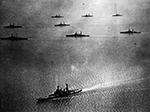 1.60k | U.S. Navy Battle fleet steaming into Panama Bay to join scouting fleet for combined fleet maneuvers, probably 1923. | The irony of this photo is that the ship with the least certain ID is the one closest to the camera! The probability is that she is the California (BB-44) based on the fact that the 3 Colorado class (BB-45 / 48) operated for such a short time without catapults and the ship in the photo has a bare quarterdeck). The photo is not clear enough to show twin or triple turrets. However, the ships in the background show enough unique characteristics to give more certainty about an ID. The nearest column are, left to right, Mississippi (BB-41) (uneven lookout station heights on the cagemasts), Tennessee (BB-43), (unique searchlight towers on after stack), and Idaho (BB-42) (lower bridge than New Mexico (BB-40)). The two ships in the second column are New York (BB-34) (bridge does not extend out far enough to be Texas (BB-35)) and Nevada (BB-36) (no enclosed lookout stations on the cagemasts and she has a catapult on her quarterdeck). The farthest column has (again left to right) Arizona (BB-39) (lower bridge), Pennsylvania (BB-38) (higher bridge) and New Mexico (again, the higher bridge). It is interesting that the only apparent catapult is the one on the Nevada. This would place the photo in the 1922-24 time frame. Ernest La Rue Collection, Gift of the U.S. Army. Courtesy of the Library of Congress. USN photo # Lot-11952-VI-37, courtesy of the National Museum of the U.S. Navy, courtesy of flickr.com. | Photo & text i.d. courtesy of Richard M. Jensen.  819k | Panoramic photo of the U.S. fleet in Panama Bay (Pacific entrance to the Panama Canal) on 1 March 1923. 70 vessels are viewed; the Battle Fleet consists of all U.S. battleships from the Delaware (BB-28) through the Idaho (BB-42). | Source: Library of Congress Prints and Photographs Division, courtesy of Tom Kermen. Copyright R.G. Lewis, Y Photo Shop, Balboa, C.Z." | 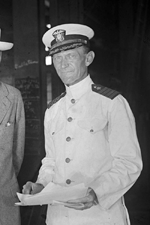 61k |
Captain Yates Stirling, Jr. was the commanding officer of the battleship New Mexico (BB-40) from 16 June 1922 to 26 June 1924. The New Mexico was the flagship of Vice Admiral Henry A. Wiley. |
Photo courtesy of the Library of Congress Prints and Photographs Division via Bill Gonyo.
| 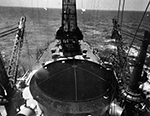 571k |
New Mexico (BB-40) looking aft, pre 1924. |
Official USN photograph # 80-G-461383 courtesy of National Museum of the U.S. Navy via flickr.com.
| 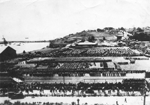 014178a 390k |
Panoramic photograph of the funeral for the forty-eight officers and men killed when Mississippi's (BB-41) Number Two 14-inch Gun Turret burned during gunnery practice on 12 June 1924. The ceremony was held at San Pedro, California on 17 June 1924. |
Photo courtesy of Irv Jacobs via Ron Reeves (of blessed memory). |
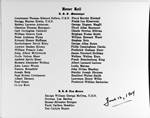 014178b 216k |
Death List of those men who died aboard Mississippi (BB-41) , including five observers from New Mexico (BB-40) as a result of an explosion in the turret of the Mississippi at San Pedro, California, 12 June 1924. |
Photo NH 67661 courtesy of Naval History & Heritage Command via Darryl L. Baker. |
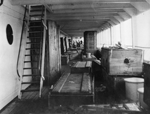 014178c 481k |
Relief (AH-1) preparing caskets for the dead Mississippi (BB-41) and New Mexico (BB-40) crew members on 13 June 1924. |
From the files of the Vallejo Naval & Historical Museum via Darryl L. Baker. |
 NR |
ILL-FATED MISSISSIPPI (BB-41) AND POINT WHERE BLAST OCCURRED |
Image and text provided by Library of Congress, Washington, DC. | Photo from Evening Star. (Washington, D.C.) 1854-1972, 13 June 1924, Image 17, via chroniclingamerica.loc.gov. 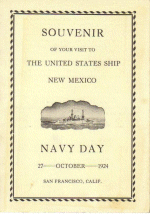 74k |
PDF four page souvenir booklet from the battleship New Mexico (BB-40) for the celebration of Navy Day in San Francisco, 27 October 1924.
|
USN photo courtesy of Robert M. Cieri. | 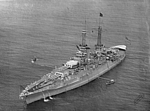 787k |
New Mexico (BB-40) in the Culebra Cut, Panama Canal circa pre-modernization (pre-1925, too). Notice the awning providing shade on the stern and the hammocks hanging out to dry. |
Photo i.d. courtesy of Richard Jensen. | U.S. Naval History and Heritage Command, Photo No. 2000.277.003 via Mike Green.  89k | In the summer of 1925, the California (BB-44) led the Battle Fleet and a division of cruisers from the Scouting Fleet on a very successful good-will cruise to Australia and New Zealand. | New Mexico (BB-40) is clearly the ship at the head of the column. Photograph probably taken from the California. Partial text courtesy of DANFS. | Photo i.d. courtesy of Richard Jensen. USN photo courtesy of Robert M. Cieri. 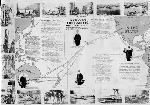 43k |
Cruise poster. |
Photo courtesy of Tom Totoris, MCPO, USN Ret 1971-1997. | 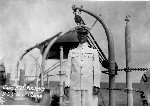 46k |
Capt. Brumby, New Mexico's (BB-40) skipper for the 1925 cruise. |
Photo courtesy of Tom Totoris, MCPO, USN Ret 1971-1997. | 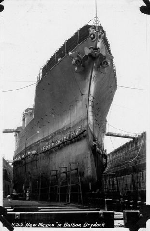 57k |
New Mexico (BB-40) in Balboa Drydock. |
Photo courtesy of Tom Totoris, MCPO, USN Ret 1971-1997. | 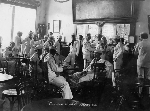 52k |
Belly Up Panama City. |
Photo courtesy of Tom Totoris, MCPO, USN Ret 1971-1997. | 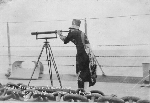 39k |
Crossing the Equator, Royal Astronomer, 1925. |
Photo courtesy of Tom Totoris, MCPO, USN Ret 1971-1997. |  38k |
Ship's band. |
Photo courtesy of Tom Totoris, MCPO, USN Ret 1971-1997. |  46k |
Going South. |
Photo courtesy of Tom Totoris, MCPO, USN Ret 1971-1997. | 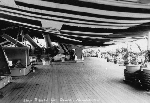 55k |
Ship rigged for dancing. |
Photo courtesy of Tom Totoris, MCPO, USN Ret 1971-1997. | 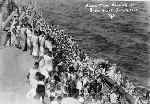 71k |
Shellbacks at last, 6 July 1925. |
Photo courtesy of Tom Totoris, MCPO, USN Ret 1971-1997. | 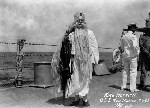 47k |
King Neptune. |
Photo courtesy of Tom Totoris, MCPO, USN Ret 1971-1997. |  40k |
Queen & Princess at the Neptune Party. |
Photo courtesy of Tom Totoris, MCPO, USN Ret 1971-1997. | 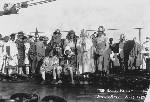 52k |
The Royal Family. |
Photo courtesy of Tom Totoris, MCPO, USN Ret 1971-1997. | 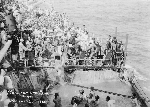 71k |
Meat for the Royal Bears. |
Photo courtesy of Tom Totoris, MCPO, USN Ret 1971-1997. |  65k |
Royal Undertaker, Torturer, Devils & Chaplain at the Neptune Party. |
Photo courtesy of Tom Totoris, MCPO, USN Ret 1971-1997. |  49k |
Royal Trumpeters and dancers at the crossing of the Equator 6 July 1925. |
Photo courtesy of Tom Totoris, MCPO, USN Ret 1971-1997. |  49k |
Royal Barbers at the crossing of the Equator 6 July 1925. |
Photo courtesy of Tom Totoris, MCPO, USN Ret 1971-1997. | 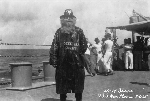 43k |
Davey Jones. |
Photo courtesy of Tom Totoris, MCPO, USN Ret 1971-1997. | 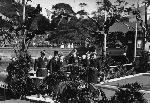 76k |
Admiral Denbiegh and party. |
Photo courtesy of Tom Totoris, MCPO, USN Ret 1971-1997. | 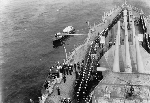 63k |
Adm. Denbiegh comes aboard the New Mexico (BB-40). |
Photo courtesy of Tom Totoris, MCPO, USN Ret 1971-1997. |  014295 548k |
Panorama of Sydney Harbour during the United States Navy's goodwill tour. |
On 23 July 1925, Sydney hosted eight of the US Navy Battle Fleet's largest ships, including California (BB-44), Colorado (BB-45),Tennessee (BB-43), Maryland (BB-46), West Virginia (BB-48), New Mexico (BB-40), Mississippi (BB-41) and Idaho (BB-42). The fleet departed for New Zealand on 6 August. This photograph was probably taken at Georges Head Battery, in Georges Heights in the Sydney suburb of Mosman. This photo is part of the Australian National Maritime Museum’s Samuel J. Hood Studio collection. Sam Hood (1872-1953) was a Sydney photographer with a passion for ships. His 60-year career spanned the romantic age of sail and two world wars. The photos in the collection were taken mainly in Sydney and Newcastle during the first half of the 20th century. The ANMM undertakes research and accepts public comments that enhance the information we hold about images in our collection. This record has been updated accordingly. Image and text provided by flickr.com |
 52k |
Battleship Div 4 in Sydney harbor, 23 July 1925. |
Photo courtesy of Tom Totoris, MCPO, USN Ret 1971-1997. | 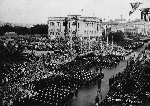 84k |
Fleet Parade, Sydney, Australia, 23 July 1925. |
Photo courtesy of Tom Totoris, MCPO, USN Ret 1971-1997. | 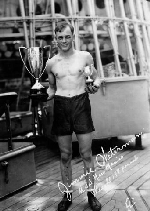 32k |
Jimmie Waterman, Boxer 144 lbs. |
Photo courtesy of Tom Totoris, MCPO, USN Ret 1971-1997. |  53k |
1925 Boxing squad. |
Photo courtesy of Tom Totoris, MCPO, USN Ret 1971-1997. | 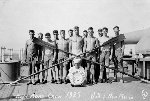 51k |
New Mexico's (BB-40) rowing team. |
Photo courtesy of Tom Totoris, MCPO, USN Ret 1971-1997. | 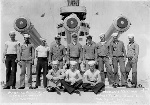 54k |
Officers and Petty Officers in charge of turret # 2 record setting gun crew for the highest pointers score ever made by 14"50 caliber gun. |
Photo courtesy of Tom Totoris, MCPO, USN Ret 1971-1997. | 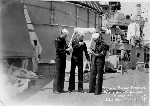 54k |
"Worlds Record Breakers, Second set of pointers turret # 2." |
Photo courtesy of Tom Totoris, MCPO, USN Ret 1971-1997. |  47k |
Plane prepares to launch from a catapult on the New Mexico's(BB-40) fantail. |
Photo courtesy of Tom Totoris, MCPO, USN Ret 1971-1997. | 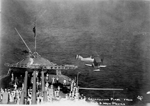 62k |
Airborne. |
Photo courtesy of Tom Totoris, MCPO, USN Ret 1971-1997. | 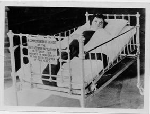 57k |
Navy Goodwill photo. |
Photo courtesy of Tom Totoris, MCPO, USN Ret 1971-1997. | 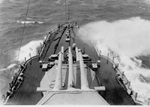 55k |
Looking down from the forecastle over the bow. |
Photo courtesy of Tom Totoris, MCPO, USN Ret 1971-1997. |  104k | Uncle Sam's super-dreadnaught New Mexico (BB-40) "in action." An unusual photograph of target firing from the sea fighter's big guns. | Image provided by: Library of Congress, Washington, DC. | Photo & text by Evening star. [volume] (Washington, D.C.) 1854-1972, 29 May 1927, Image 73, courtesy of chroniclingamerica.loc.gov. 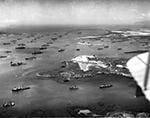 2.60k |
Ships of the U.S. Fleet pictured at anchor at Guantanamo Bay, Cuba, during winter exercises in 1927. |
The "center" row has Mississippi (BB-41) then Langley (CV-1) , Oklahoma (BB-37), Pennsylvania (BB-38) and Arizona (BB-39) in that order. The next row to the left has Idaho (BB-42) then New Mexico (BB-40), followed by 3 of the Tennessee/Colorado class (hard to pick out distinguishing features in this photo), with Nevada (BB-36) as tail-end-Charlie. Further to the left are another Tennessee/Colorado class BB and a Memphis (formerly Tennessee) class armored cruiser. Two unidentified Omaha class cruisers are in the foreground. There are at least 17 destroyers, identifiable (bottom, right) is Mahan (DD-102), converted to a minelayer and redesignated DM-7, but still wearing her old DD hull number (102) and two submarine tenders in the foreground with about 10 smaller and two large submarines. The peninsula in the right foreground is South Toro Cay, where the drydock is still visible that was begun in 1904, but cancelled two years later. Photo i.d. courtesy of Richard Jensen & wikipedia.org. | Photo courtesy of wikipedia.org via Branden Deschaine & Fabio Pena.  1.90k |
Port Angeles Washington: The lack of turret bearing markings places the photo post 1924 while the already noted presence of the Kidder (DD-319) places it before 1930. The front row of battleships are, left to right, Colorado (BB-45) based on the turret two rangefinder, West Virginia (BB-48) based on the lack of a turret two rangefinder, and probably California (BB-44) based on the bridge configuration. The back row, left to right, are New Mexico (BB-40) based on the higher bridge configuration, Mississippi (BB-41), based on the lower bridge and the fact that the searchlights and lookout station on the main mast are lower than those on the foremast (BB-42 had them at the same height), and Maryland (BB-46) based on the configuration of the turret two rangefinder. |
Photo courtesy of Curtis Nicolaisen. | Photo & text i.d. courtesy of Richard Jensen. 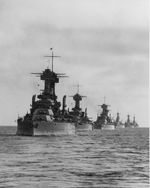 1.22k | The United States Battle Fleet steaming in column off the California coast during the middle or later 1920s. The three leading ships are (in no particular order) Colorado (BB-45), Maryland (BB-46) and West Virginia (BB-48) followed by Tennessee (BB-43) and three older battleships. Photograph taken from California (BB-44). | Official USN photo Naval History and Heritage Command # 80-G-695093, now in the collections of the National Archives. | 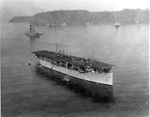 2.44k |
Langley (CV-1) with Vought VE-7 aircraft on deck, at anchor off Culebra Island, Puerto Rico on 18 March 1926. In the background are 4 four-stack destroyers and a Tennessee class (BB-43 /44) battleship on the left, and two New Mexico (BB-40 /42) class battleships (center and right). |
At the time, the Tennessee's are hard to tell apart. A few years later, Tennessee (BB-43) had the open bridge added around her pilothouse, and even later, California (BB-44) added the enlarged flag bridge. But in the 1922 (or so) period, they were close in config. The New Mexico's appear to be Mississippi (BB-41) on the left (or in the center) and New Mexico (BB-40) (nearly bow-on) on the right. The original photo was labeled "Harbinger" to show symbolically how the unimposing Langley was the first of a line of ships which eventually drove the battleship from its primary place into the background. Photo i.d. & text in italics courtesy of Richard Jensen. | USN photo via collections.naval.aviation.museum.  709k | Different angle of the above photo: Langley (CV-1) & Battleships at anchor off Culebra Island, Puerto Rico 18 March 1926. | USN photo NARA II 80-G-185902 via courtesy of Tracy White @ Researcher @ Large.
| 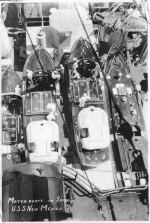 126k |
View of the boat deck of the New Mexico (BB-40) in 1926.
|
Photo courtesy of LCDR (Retired) Thomas Donegan & Mike Donegan. |
 101k |
View of the catapult on the New Mexico (BB-40) in 1926.
|
Photo courtesy of LCDR (Retired) Thomas Donegan & Mike Donegan. |
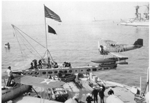 137k |
A Vought O2U-1, designation 4-O-1, is catapulted from the New Mexico (BB-40). Note the colored tail of the aircraft. |
Photo courtesy of Pieter Bakels. | 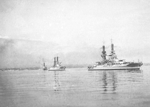 477k |
The 3 sisters of the New Mexico (BB-40 / 42) class. |
1st is New Mexico (BB-40) (pilot house above conning tower). 2nd is Idaho (BB-42) (pilothouse is wider), 3rd is Mississippi (BB-41) (by default). The 2 photos appear to be in sequence though one of them is printed with the negative reversed. The far shore line and the ships in the background beyond the last BB appear to be the same except for what is revealed or concealed by the forward progress of the ships. Text & photo i.d. courtesy of Chris Hoehn. |
Photo possibly by Frank Lynch, chief photographer of the Seattle Post-Intelligencer, circa 1929. Photo from the collection of Carrie Schmidt. 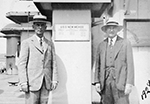 871k |
Builder's Plaque to New Mexico (BB-40). To the left is Rear Admiral William D. Leahy, and to the right is Captain E.B. Larimer, both are in civilian clothes. Photograph is dated July 1928. Collection of Fleet Admiral William D. Leahy, Jr. |
USN photo # NMUSN-P-D-2015-1-27 courtesy of National Museum of the U.S. Navy via flicker.com. | 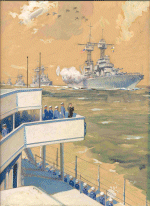 122k | Watercolor of a Presidential review during President Hoover's term of office, 1928-32. | Crews line the rails of a Colorado class (BB-45 / 48) battleship as the ships pass in line astern of the reviewing stand with the airship Los Angeles (ZR-3) piercing the clouds accompanied by 9 biplanes. Courtesy of Michael Schwarz.
| 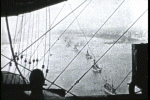 56k | View of the U.S. Battle fleet from above, possibly from the airship Los Angeles (ZR-3). | Photo courtesy of periscopefilm.com. |
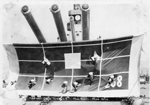 014004 1.76k |
Target From Turret 2, Nine Shots, Nine Hits.
|
Photo from The Collection of S. Honour. |
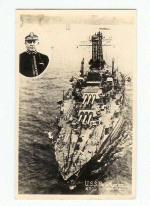 134k |
Bow on view of the New Mexico (BB-40), from a post card, pre-1930, before rebuilding. Reverse side of the card says: "One of the boats of fleet in Hum Bay at Eureka CA. Did God ever intend such a killing machine as this?" Inset photo could be Capt. Ashley H. Robertson. |
Courtesy of Kelly McCaw. |
 014008 625k |
Two O3U-1 Vought biplanes adorn the stern of the New Mexico (BB-40) in this photo before her March 1931 modernization. |
This model is known for the most famous aerial action in the early 1930's. USN photo courtesy of David Wright. |
 283k |
New Mexico (BB-40) during Fleet Review, 20 May 1930. |
Official USN photograph # 80-G-459029 courtesy of National Museum of the U.S. Navy via flickr.com.
| 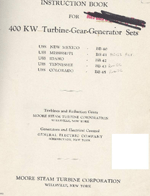 88k |
Four photos for the 1933 400 KW Turbine Gear Generator Sets for the battleships: | New Mexico (BB-40), Mississippi (BB-41), Idaho (BB-42), Tennessee (BB-43) & Colorado (BB-45) Figure 1 Figure 2 Figure 5 Figure 4 Photos courtesy of Ed Zajkowski. | 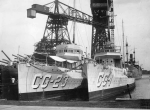 104k |
New Mexico (BB-40) being rebuilt and modernized at the Philadelphia Navy Yard between 5 March 1931 to 22 January 1933. Her other two sisters were rebuilt at Norfolk Navy Yard. The Coast Guard destroyers are the Tucker (CG-23), formerly DD-57 and the Cassin (CG-1), formerly DD-43.
|
Photo courtesy of uscg.mil., submitted by Mike Green. |
Partial text courtesy of DANFS.  72k |
Inboard profile of the New Mexico (BB-40), 1930. | Photo and text courtesy of U.S. Battleships: An Illustrated Design History by Norman Friedman. |  413k | New York (BB-34) ahead of Pennsylvania (BB-38). The next ship ahead is a Tennessee class (BB-43 /44) based on the slope of the turret roofs. (Uniform slope back to front - no kink like the twin 16" mounts on the Colorado's (BB-45). Based on the relatively full appearance of the forward superstructure, I am leaning toward California (BB-44) which had an enlarged flag bridge as Battle Force Flagship. The other three are obviously Tennessee (BB-43) and/or Colorado class (BB-45 / 48) but are too indistinct to ID specifically. Because of the boom cranes on the sterns, the photo was taken between 1931 and 1934. | Photo courtesy of Kerry Garrett. | Photo & text i.d. courtesy of Richard M. Jensen.  276k |
New Mexico (BB-40) arriving in Philadelphia, 30 March 1931. |
This battleship, which holds the Navy's pennant for battle efficiency, as she was nosed into Pier 8 at the Navy Yard today. Congress appropriated $30,000,000 for the modernization of three of these craft, the others being the Mississippi (BB-41) and Idaho (BB-42) . Photo courtesy of the George D. McDowell Philadelphia Evening Bulletin Photographs @ digital.library.temple.edu |  139k | The New Mexico (BB-40) and battleship Pennsylvania (BB-38) sit at Pier No. 8, waiting to be modernized. A crane is on the pier in between the two ships, 31 March 1931. | Photo courtesy of the George D. McDowell Philadelphia Evening Bulletin Photographs @ digital.library.temple.edu.
|
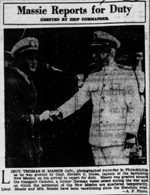 NR |
LEUT. THOMAS H. MASSIE (left), photographed yesterday in Philadelphia where he was greeted by Capt. Herbert C. Cocke, captain of the battleship New Mexico (BB-40) on his arrival to report for duty. |
Image and text provided by Library of Congress, Washington, DC. | Photo & text by Evening Star. [volume] (Washington, D.C.) 1854-1972, 24 June 1932, Image 11, courtesy of chroniclingamerica.loc.gov.  319k |
Battleship New Mexico (BB-40) at dock, 24 September 1932. |
Photo courtesy of the George D. McDowell Philadelphia Evening Bulletin Photographs @ digital.library.temple.edu |  130k |
Overhead port bow, water-level starboard quarter, and overhead starboard bow views of the rebuilt ship taken in the mid 1930s. The view show the rebuilt ship's new appearance and new locations of her equipment after her extensive rebuild at Philadelphia Navy Yard that took from 5 March 1931 to 22 January 1933. |
The three New Mexico's (BB-40-42) were the last to be rebuilt. They could be distinguished by their searchlight platforms. The Mississippi and Idaho (BB-42) had theirs far above their controls, with long struts, but the New Mexico (BB-40) had her control cabins directly under the lights. Quite unlike their predecessors, they had tower masts supporting Mark-28 5-inch directors, the first to combine range finder and calculator into a single unit. The small cylinders were mark 31 directors, with an armored range finder at the forward end of the bridge structure. Below it, were secondary battery controls and battle lookout stations (note the eye slits), with the navigating bridge below that, then the chart house platform, the radio direction-finder platform, and the conning tower platform. Note the four 0.50-caliber machine guns visible on the latter. The radio direction finder itself was housed between the funnel and the bridge structure. The Idaho, fitted as a flagship, had a flag bridge below her navigating bridge. Her chart house was on the radio direction-finder platform. USN photo. Partial text courtesy of U.S. Battleships: An Illustrated Design History by Norman Friedman. | 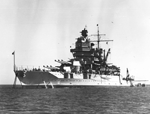 210k |
New Mexico (BB-40) at anchor; photo taken after modernization. Note the complete absence of cage masts and the nice new forward superstructure with a big DP director on top. |
Photo from the collection of Capt. Ellis Zacharias, C.O. from 9/9/ 1943 - 14/9/ 1944, courtesy of Capt. Jerry Zacharias, USN (Ret.) | Text i.d. courtesy of Chuck Haberlein.  123k |
Canvas covered awning covers the bow area of the New Mexico (BB-40) while resupplying. |
Photo i.d. courtesy of Richard Jensen. | Photo courtesy of Floyd Proffitt via Brad Proffitt. 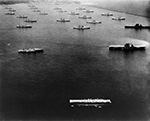 2.44k | Ships of the United States Fleet pictured at anchor inside the breakwater at Colon, Canal Zone, 1935. | The carriers are, front to back, Langley (CV-1), Saratoga (CV-3) and Lexington (CV-2). The two battleships beyond Lexington are the New York (BB-34) with Texas (BB-35) behind. The nearest battleship, straight up from the Langley is Pennsylvania (BB-38). The remaining battleships include two New Mexico's, the "Big Five" and what is probably one of the Nevada's, but that is not certain. The photo is not clear enough for positive identifications. There are also five Northampton class cruisers and six Omaha's. Based on the New Mexico's, the date is not earlier than the end of 1933. Based on the lack of the funnel machine gun gallery on Lexington, and the retention of the torpedo tubes (and openings) on the Northampton's, the date can't be later than mid 1935. Photo & text i.d. courtesy of Richard M. Jensen. | Photo courtesy of National Naval Aviation Museum (NNAM) photo (# 1996.488.001.006) courtesy of Fabio Pena. 1934 - Pre-Pearl Harbor Attack |
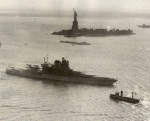 71k |
New Mexico (BB-40) moored in the Hudson River with the Statue of Liberty in the background, June 1934.
New Mexico returned to the Pacific in October 1934 to resume training exercises and tactical development operations. |
USN photo. |
Text courtesy of DANFS. 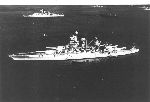 242k | New Mexico (BB-40) and her sisters lie in anchor, probably at San Pedro California sometime between October 1934 & 6 December 1940 before she was transferred to Pearl Harbor. The Idaho (BB-42) is the ship top left. |
Photo i.d. courtesy of Richard Jensen. |
USN photo courtesy of David Buell.  280k | Idaho (BB-42) & New Mexico (BB-40) at anchor in Seattle, circa during her participation in Fleet Week, July - August 1935. | USN photo courtesy of Robert M. Cieri. |
Photo i.d. courtesy of Richard Jensen. 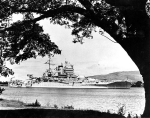 153k |
In Pearl Harbor, 1935. |
Official USN photo Naval History and Heritage Command # NH 50299, now in the collections of the National Archives. |
 116k |
A Vought O3U-1 aboard New Mexico (BB-40) in 1935. Note the Captain's gig with the NM designation tied up inboard of the Staff Officers boat from Pennsylvania (BB-38) to the port boat boom. |
USN photo courtesy of Pieter Bakels.
| 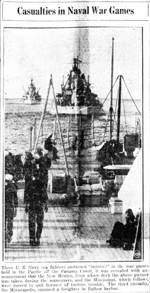 014004c NR |
Casualties in Naval War Games |
Three U. S. Navy sea fighters sustained "injuries" in the war games held in the Panama Canal, it was revealed with an announcement that the New Mexico (BB-40), from whose deck the above picture was taken during the maneuvers, and the Mississippi (BB-41), which follows, were forced to quit because of turbine trouble. The third casualty, the Minneapolis (CA-36), rammed a freighter in Balboa harbor. Image and text provided by University of North Carolina at Chapel Hill Library, Chapel Hill, NC. | Photo from The Times-News. [volume] (Hendersonville, N.C.) 1927-current, 22 May 1936, Image 1 courtesy of chroniclingamerica.loc.gov. 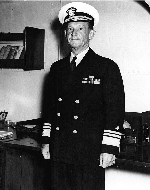 67k |
Capt. Frank Jack Fletcher Commanding Officer of battleship New Mexico (BB-40) from 1936 to 1937.
|
USN photo courtesy of Bill Gonyo. |  1.80k | 1936 photo of Battleship Row, Pearl Harbor. Among the ships in the harbor are: Front and center a Northampton class CA, most likely the Chester (CA-27). | The two New Orleans (CA-32) class cruisers on the far left are the Minneapolis (CA-36) nearer the camera with New Orleans (CA-32) behind. Both have the curved-faced turrets, limiting them to the CA-32/34/36 group. Within that group, only New Orleans lacked the glassed-in navigation bridge (below the pilothouse), and minor superstructure variations point to the other being Minneapolis rather than Astoria (CA-34). The battleships from left to right: Colorado (BB-45), or West Virginia (BB-48), outboard of Idaho (BB-42), Nevada (BB-36), outboard of Mississippi (BB-41), New Mexico (BB-40), outboard of Maryland (BB-46) or California (BB-44). On the far right is the Hospital ship Relief (AH-1) with two unidentified ships ahead and to her port side. Text courtesy of David Johnston, (USNR), Aryeh Wetherhorn (USNR) & Richard Jensen. | Photo courtesy of Edward Cwalinski, submitted by Barry Litchfield. 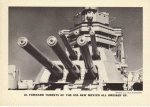 95k |
Forward turrets of the New Mexico (BB-40) all dressed up, circa 1930's. The practice of gunnery at the beginning of the 20th century put a lot of emphasis on shooting first. Radio communications was still in diapers (cumbersome, Morse code, slow) and visual signals, light, flag hoist or semaphore, were not much better. When an enemy was detected it also took time to train and elevate the guns to shoot at him. In poor visibility this might give him the first shot. The range clocks, and their companion, the deflection markers, were developed to shorten the time needed to get off the first salvo. Concentration of fire was also a major consideration, and usually all ships of a division would fire on the same target. Fire control was based on mechanical analog devices that incorporated input from the optical range finders located at several places on the ship. In USN ships this included the top of the cage mast. Long range visibility under battle conditions was often poor. The heavy black smoke from burning coal just made it worse. But individual ships could be expected to have a reasonably clear view of the next ship ahead in the division line. The flagship was almost always in the lead, and could direct concentration of fire by passing range and deflection data to the other ships. This process was made much faster by simply training the flagships own guns in the direction of the enemy and displaying the ships own average rangefinder results on a circular display. Trailing ships often did not have as good a view of the enemy as the leader, but could observe where the leaders guns were aimed (and read numbers from the range clock) in order to set initial values for aiming their own guns. That is enough of the background theory. There was no CIC as we know it today, but there was a central fire control plot on each ship. This plot included a MECHANICAL device for determining and transmitting refined settings for azimuth and elevation of the guns. Initial inputs were often set manually. Communications between the plot and the gun turrets (and the range clocks) included up to 4 separate and parallel methods. First, there was a mechanical connection, usually a bicycle chain and sprocket drive to ensure equivalent movement. Second, voice tubes connected the plot with rangefinder positions and guns. Third, when they became available, there were internal communications telephones matching the above circuits. Finally, if other means failed, you could write a note and send it by messenger. There is an excellent series of articles on battleship gunnery fire control in this era in WARSHIP INTERNATIONAL. vol 38 numbers 1,2,3 (2001) and also vol 41. It is devoted to the plotting instruments, not range clocks. As a final note, I'm sure you already noticed that the range "clocks" are numbered from 1 to 10, not 1 to 12. The figures were usually given in thousands of yards.
USN photo courtesy of Robert M. Cieri. | Text courtesy of Aryeh Wetherhorn, (USN & Israeli Navy, Retired). 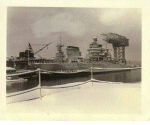 49k |
New Mexico (BB-40) & Lexington (CV-2) in Bremerton, 1937. |
USN photo courtesy of Robert M. Cieri. | 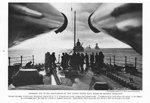 654k | STANDING OUT TO SEA, BATTLESHIPS OF THE U.S. NAVY STEAM IN CRUISING FORMATION | Beneath gleaming 14 inch guns, bluejackets aboard the Pennsylvania (BB-38) secure anchor and ground tackle. Commissioned in 1916 before the advent of the clipper, or overhanging bow, the ship has a blunt or overhanging forecastle. Immediately ahead steams the New Mexico (BB-40) with the Nevada (BB-36) at the right. USNI Photo Navy Recruiting Bureau, N.Y.
| 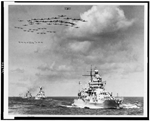 463k | Probable front and rear photos here and below showing formations of aircraft flying over U.S. Navy battleships during exercises at sea, 1938 / 1939. |
Pictured here is the New Mexico (BB-40) in the van with other battleships of the Pacific Fleet and a carrier air group, led by the Air Group Commander in a Curtiss SBC Helldiver. The aircraft following are: A torpedo squadron of eighteen Douglas TBD-1s; A bombing squadron of eighteen Northrop BT-1s; A scouting squadron eighteen Curtiss SBCs; A fighting squadron of eighteen Grumman F2F-1s or F3F-3s from either the Yorktown (CV-5) or F3F-2s from the Enterprise (CV-6), plus possibly nine additional aircraft. The Yorktown and Enterprise were the only two carriers whose bombing squadrons were equipped with the Northrop BT-1. The text for the photo reads: "The Navy uses enormous amounts of rubber. At least seventy-five tons of rubber, enough to makes 17,000 tires, are used in the construction of each of these battleships. Tons more are needed for the naval planes that are making history over the world. Medical and communication requirements--and countless other needs of the Navy--are met." The lead BB looks like Mississippi (BB-41) followed by Maryland (BB-46) (rangefinder on Turret II). My first impression of the Tennessee class (BB-43 /44) is the Tennessee (BB-43), but that is not a certain ID from this photo alone. Fourth is the Oklahoma (BB-37) (no birdbath). Aside from the DD now in the lead, I see nothing in the head-on shot aerial that positively differs from the ID's of the first 4 BB's in the first photo. Of course, in the aft aerial shot, BB #5 is the California (BB-44), ID'd by the enlarged flag bridge, lending support to BB #3 in the first photo being Tennessee. Everything I see supports these three photos all being part of the same operation with at least the first 5 BB's remaining in the same order. Photograph # LC-USE64 - DC-000944 & partial text courtesy of memory.loc.gov. |
Battleship i.d. & text courtesy of Richard Jensen. Aircraft i.d. & text & timeline courtesy of Alan Moore via the following sources: Airplane i.d.: Yorktown Class Carriers (Warship Pictorial No. 9) by Steve Wiper, Tucson, AZ: Classic Warships Publishing, 2000. & That Gallant Ship: U.S.S. Yorktown (CV-5) by Robert Cressman, Missoula, MT: Pictorial Histories Pub Co, 1985. Timeline from Battleship Arizona: An Illustrated History by Paul Stillwell, Annapolis, MD: Naval Institute Press, 1991. 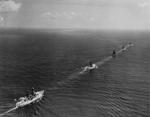 1.62k | Probable front and rear photos here and above showing formations of aircraft flying over U.S. Navy battleships during exercises at sea, 1938 / 1939. | New Mexico (BB-40) is leading the BB column while the remaining battleships have dual masthead fire control structures. The air group formation in the two photos appears to be similar. The composition of 18 TBDs, 18 BT-1s, 18 SBCs, and 27 fighters is easier to distinguish in the front/surface view. I'm assuming, based on total aircraft count alone, that the formation in the rear/aerial view is the same. (The perspective makes it difficult to sort the monoplanes and biplanes into their respective types.) The only difference is that in the front/surface view the formation is lead by a Curtiss SBC Helldiver (likely the Air Group Commander) but in the rear/aerial view that lead Helldiver is not present. I suppose it's possible that the photographer was in that Helldiver's rear seat. What stands out for me is the presence of nine extra fighters beyond the normal squadron composition of 18, as seen in the other three squadrons in this formation. Photo i.d courtesy of Chuck Haberlein, Richard Jensen, Aryeh Wetherhorn, & Tracy White @ Researcher @ Large. | Battleship i.d. & text courtesy of Richard Jensen. Aircraft i.d. & text courtesy of Alan Moore. US Navy and Marine Corps Museum/Naval Aviation Museum, photo No. 2008.104.001.234.  441k |
Mississippi (BB-41) and New Mexico (BB-40) during the Fleet Review staged outside Los Angeles Harbor. December, 1938. |
USNI photo courtesy of Pieter Bakels. |
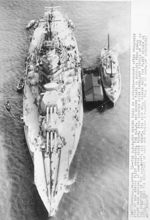 518k |
Norfolk VA., 12 April 1939. "The New Mexico (BB-40) takes on supplies". |
Hungry after prolonged stay at sea during fleet maneuvers, the New Mexico takes on supplies from small craft upon arrival at Hampton Roads today. This air view gives excellent picture of one of the mightiest of the U.S. Navy's sea might. The ship will remain anchored here for fleet review on 27 April when the Sec. of Navy and foreign diplomats will be on hand. A.P. Wire photo from the collection of Micheal Strout, courtesy of Jonathan Eno. | 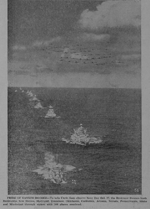 01yankeedoodle 441k |
PRIDE OF YANKEE DOODLE-To help Uncle Sam observe Navy Day, 27 October 1939: the Destroyer Downes (DD-375) leads Battleships New Mexico (BB-40), Maryland (BB-46), Tennessee (BB-43), Oklahoma (BB-37), California (BB-44), Arizona (BB-39), Nevada (BB-36), Pennsylvania (BB-38), Idaho (BB-42) and Mississippi (BB-41) through waters with 400 planes overhead. |
Photo courtesy of umich.edu |
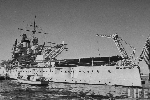 139k | Battleship New Mexico (BB-40) during maneuvers in Hawaii, 1940. | Another "flag" plane in Admiral Blue with Silver tail (only CinCUS's plane was all blue.), for Commander Battleships, Battle Force. The other three SOC-3s are New Mexico's VO-3 (Observation Squadron Three) compliment. Photo i.d. courtesy of Alan Moore.. | Photographer: Carl Mydans, courtesy of life.time.com 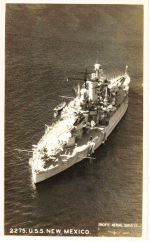 280k |
Pacific Aerial Surveys photo of the New Mexico (BB-40), probably during the Spring of 1940 when she was undergoing modernization. |
USN photo courtesy of Robert M. Cieri. |
|
 184k |
Post card photo of the New Mexico (BB-40), possibly during the Spring of 1940 when she was undergoing modernization. |
USN photo courtesy of Mike Wade via Gary Priolo. | 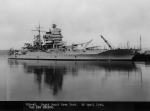 52k |
New Mexico (BB-40) at the Puget Sound Navy Yard undergoing modernization, 24 April 1940. Note the barrage ballon overhead. |
USN photo , courtesy of Seattle NARA RG-181, submitted by Tracy White @ Researcher @ Large. | 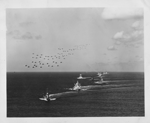 1.31k | Between 9 & 13 September 1940 the Arizona (BB-39) was under way with other ships of the US Fleet for simulated fleet engagement. She is pictured here in company with other ships of the Pacific Fleet taken during Fleet Ops. and at least one carrier air group. | US Navy and Marine Corps Museum/Naval Aviation Museum, Photo No. 2008.104.001.235 courtesy of Alan Moore. | Text & photo i.d. courtesy of Alan Moore via Battleship Arizona: An Illustrated History by Paul Stillwell, Annapolis, MD: Naval Institute Press, 1991. 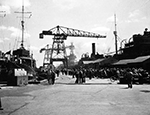 828k | Norfolk Naval Shipyard, Norfolk, Virginia. Shipbuilding. It's lunch time, and thousands of workers are taking their 30 minutes of recreation. To the left are two ships in for minor repairs while in the background are a pair of huge overhead cranes, used to swing heavy parts into position for the various shipbuilding operations. On the right is the New Mexico (BB-40). Office of War Information photograph, circa October 1941. | USN photo # Lot-2068-9, Courtesy of the Library of Congress., courtesy of the National Museum of the U.S. Navy, via flickr.com.
|  367k | Column Right! | Arizona (BB-39), New Mexico (BB-40) & West Virginia (BB-48) and other ships of the Pacific Fleet taken during Fleet Ops in October 1940. This photo and the following five are more than likely from the LIFE issue of 28 October 1940: "The Navy: LIFE Goes into Action with the U.S. Fleet". One of the introductory paragraphs reads as follows: "To show itself to the American people, the U.S. Navy has co-operated with LIFE in this issue. LIFE photographers and reporters examined naval schools, ammunition depots, bases, destroyers, battleships, the War College, etc. Finally a LIFE crew sailed on the U.S. Fleet maneuvers last month off Pearl Harbor in mid-Pacific." US Navy and Marine Corps Museum/Naval Aviation Museum, Photo No. 2008.104.001.235 courtesy of Alan Moore. | Text & photo i.d. courtesy of Alan Moore via Battleship Arizona: An Illustrated History by Paul Stillwell, Annapolis, MD: Naval Institute Press, 1991 & "The Navy: LIFE Goes into Action with the U.S. Fleet". Life. New York: Time, Inc., Vol 9 No 18 (28 October 1940). p23.  728k | Possibly the first of three photos with the caption "The enemy is sighted off right. Swiftly the battleships New Mexico (BB-40) and Arizona (BB-39) change direction." | Photographer: Carl Mydans, courtesy of life.time.com
|  54k | The second photo (here) has the caption: "Wheeling into new position of line abreast, battleships move slowly while other ships speed into position." | Appended is the text that appeared on the photo credits page of that issue. Carl Mydans, LIFE's photo-reporter who roamed battlefields in Finland and France from September 1939 to June 1940, now turns his lens on the U. S. Navy (see pp. 23—97). During one month with the Fleet in the Pacific, Mydans took pictures aboard a battleship, a cruiser, a destroyer, a submarine, a hospital ship and a repair ship. Mydans also spent some time in the brig of the Indianapolis (CA-35). Early one morning he had climbed onto a platform over the Admiral's bridge, when a gust of wind blew sunshade and filter from his Zeiss Super-Ikonta camera. They fell near Vice Admiral Adolphus Andrews, commander of the Scouting Force. After lunch Mydans was served with a paper charging him with "willfully, maliciously and without justifiable cause"assaulting and attempting to strike with a dangerous weapon of German manufacture one Adolphus Andrews, Vice Admiral. With mock solemnity he was taken to the brig and locked up. Few moments later the entire wardroom, from executive officer down, descended and peered through the grille at Prisoner Mydans. When each had enjoyed a good laugh, Mydans was set free. Photo by Carl Mydans, Time, Inc, submitted courtesy Pieter Bakels. | Text & photo i.d. courtesy of Alan Moore. "The Navy: LIFE Goes into Action with the U.S. Fleet". Life. New York: Time, Inc., Vol 9 No 18 (28 October 1940). p.28 & 29.  496k | The third photo (here) is captioned: | "Battleships head directly toward the enemy over the horizon, ready to form line of battle either way." Photo by Carl Mydans, Time, Inc, submitted courtesy Pieter Bakels. Text & photo i.d. courtesy of Alan Moore. "The Navy: LIFE Goes into Action with the U.S. Fleet". Life. New York: Time, Inc., Vol 9 No 18 (28 October 1940). p.28 & 29. |  280k |
Photo by George Winstead of the New Mexico (BB-40) probably when she sailed to join the Atlantic fleet at Norfolk 16 June 1941 for duty on neutrality patrol. |
USN photo courtesy of Robert M. Cieri. | WW II |
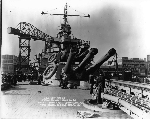 373k |
New Mexico (BB-40), view looking forward from the stern, at Norfolk, 31 December 1941.
|
USN photograph # 2610 (42) courtesy of Pieter Bakels. |
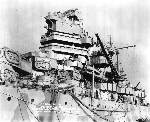 448k |
Port bow closeup of the New Mexico (BB-40), at Norfolk, 31 December 1941.
|
USN photograph # 2610 (42) courtesy of Pieter Bakels. |
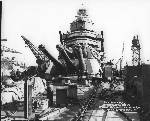 347k |
View from bow looking aft of the New Mexico (BB-40), at Norfolk, 31 December 1941.
|
USN photograph # 2610 (42) courtesy of Pieter Bakels. |
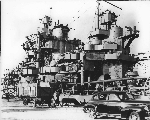 429k |
Port quarter view of the New Mexico (BB-40), at Norfolk, 31 December 1941.
|
USN photograph # 2610 (42) courtesy of Pieter Bakels. |
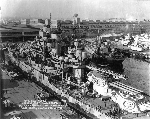 783k |
Following two photos show the New Mexico (BB-40) at Norfolk, 31 December 1941. She is equipped with the then "state of the art" quadruple 1.1"/75 machine guns [later replaced by the Bofors 40mm gun(s)]. She has also just been fitted with 20mm Oerkilons, but still was equipped with 0.5 caliber machine guns which the 20mm ultimately replaced. She also carries two radar units; a surface search set (Mark 3) on top of her forward main battery director atop her tower bridge and an air search SC unit on her pole main mast. |
The tug YT-213 is pulling alongside Menemsha (AG-39. Across the pier from her is the new destroyer O'Brien (DD-415). She would be torpedoed by the Japanese Submarine I-15 15 September 1942 and sank 19 October 1942 while en route to Pearl Harbor for repairs. USN photograph # 2611 (42) courtesy of Pieter Bakels. Photo i.d. courtesy of Gary Priolo. |
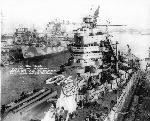 368k |
The New Mexico (BB-40) at Norfolk, 31 December 1941.
She is equipped with the then "state of the art" quadruple 1.1"/75 machine
guns [later replaced by the Bofors 40mm gun(s)]. She has also just been
fitted with 20mm Oerkilons, but still was equipped with 0.5 caliber machine
guns which the 20mm ultimately replaced.
The camouflaged ship alongside the near side of the next pier is George F. Elliott (AP-13). Note: number "40" painted atop New Mexico's second 14"/50 triple gun turret; Mark 33 and other gun directors atop her superstructure; FC radar antenna on one of the directors and SC radar antenna mounted at the top of her mainmast. |
New Mexico is in the process of being painted up in splotches. This picture is just one of an extensive close-up series showing all three New Mexico (BB-40 / 42) class battleships being repainted at the same time. The sun is very low, coming strong off the port bow. This is causing the angled surfaces on the bridge (and all other shapes in the same plane) to appear to be "washed out" of color. Note the sailors on top of turret #1 (left side of photo, extreme bottom). They are applying 5-H. Earlier they had spilled some on the roof, leaving a circle from the paint can. Mississippi (BB-41) in the background is still in Measure 1. Close-ups show her caulk marked to be painted in splotches of S.B. (5-S) and O.G. (5-0) only. Idaho (BB-42) (not shown), New Mexico and the vessel behind her all carried standard three color splotch patterns of 5-S, 5-0 and 5-H." Partial text courtesy of Naval History and Heritage Command photo # 19-N-27362. |
Camouflage text courtesy of "United States Navy CAMOUFLAGE of the WW2 ERA" by Larry Sowinsky, the "Floating Drydock", Phil.PA.,1976.) & submitted by Pieter Bakels. 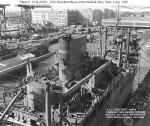 180k | President Hayes (AP-39) view from overhead, looking forward from just off the starboard side amidships, while the ship was at the Norfolk Navy Yard, Portsmouth, Virginia, 2 January 1942. Note her large smokestack, with a rather small exhaust at its after end, ship's bell mounted on the smokestack base, and the landing craft davits on the midships' superstructure.
The lighter YF-244 is alongside the battleship New Mexico (BB-40) at left.
| Photograph Naval History and Heritage Command # NH 93910, from the Bureau of Ships Collection in the U.S. National Archives. |
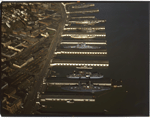 013840n 2.92k |
Pennsylvania (BB-38) at Pier 7 and New Mexico (BB-40) at Pier 15 in San Francisco, March 1942. A couple other sets of eyes have identified Kitty Hawk (AKV-1) as sharing Pier 7 with Pennsylvania. Note the torpedo nets. The color appears to be original. I have not seen ANY images of New Mexico on the West Coast in that paint scheme - just in Norfolk prior to heading to the Pacific.
|
USNHHC photo # 80-G-K-1026 & text courtesy of Evan Dwyer & Bob Canchola. | B & W High Resolution photo available @ history.navy.mil 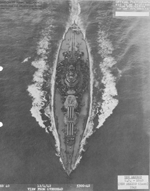 1.50k |
View from overhead of the New Mexico (BB-40) underway 4 December 1942, indicating that it was taken out of Pearl Harbor.
|
Photo # 5300-42 courtesy of David Buell. | 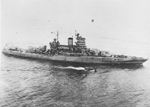 358k |
A small boat speeds along the length of the New Mexico (BB-40), probably at Pearl Harbor in December 1942. In 1943 she would go to Puget Sound for a refit when she received SK radar and other modifications.
| BuShips photo #40215 courtesy of David Buell. |
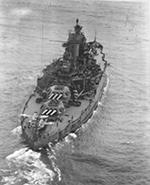 408k |
Stern view of the New Mexico (BB-40) on 2 January 1943. |
USN photo # 80-G-323393, now in the collection of the US National Archives in College Park, Maryland, courtesy of Sean Hert. | 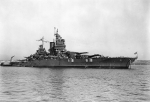 73k |
Off the Puget Sound Navy Yard, Bremerton, Washington, following overhaul, 6 October 1943. A barge and motor launch are alongside her port quarter, with Sailors coming on board from the latter. |
Official USN photo Naval History and Heritage Command # NH 97414, now in the collections of the National Archives. |
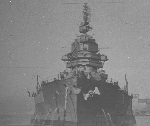 70k |
Bow view off the Puget Sound Navy Yard, Bremerton, Washington, following overhaul, 6 October 1943. |
Official USN photo courtesy of David Buell. |  303k |
New Mexico (BB-40) underway near Pearl Harbor sometime around November 1943. She is wearing Measure 21 camouflage with a new gallery of 20mm Oerlikons P&S of her Stack and SK atop her mainmast. |
USN photo submitted by Pieter Bakels. | 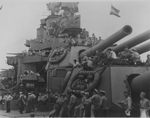 1.37k |
New Mexico (BB-40) taken some time between October 1943 and August 1944, looking forward past Turrets 3 and 4 on the port side aft. |
USN photo & text courtesy of David Buell. | 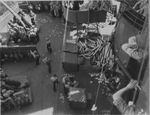 1.78k |
New Mexico (BB-40) taken some time between October 1943 and August 1944, view of the starboard side from the superstructure just forward of the stack looking down to the secondary AA level. This looks like they had just secured from GQ or battle practice. |
USN photo & text courtesy of David Buell. | 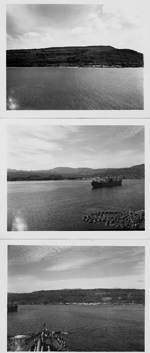 271k |
View of the Efate Hills from New Mexico (BB-40) . |
Photo from the collection of Capt. Ellis Zacharias, C.O. from 9/9/ 1943 - 14/9/ 1944, courtesy of Capt. Jerry Zacharias, USN (Ret.) | 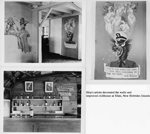 369k |
Efate Clubhouse, wishing you were there. |
Photo from the collection of Capt. Ellis Zacharias, C.O. from 9/9/ 1943 - 14/9/ 1944, courtesy of Capt. Jerry Zacharias, USN (Ret.) | 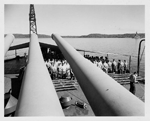 539k |
Church services. |
Photo from the collection of Capt. Ellis Zacharias, C.O. from 9/9/ 1943 - 14/9/ 1944, courtesy of Capt. Jerry Zacharias, USN (Ret.) | 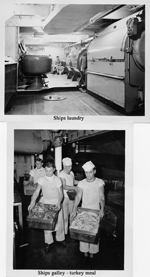 278k |
New Mexico's (BB-40) laundry & galley. |
Photo from the collection of Capt. Ellis Zacharias, C.O. from 9/9/ 1943 - 14/9/ 1944, courtesy of Capt. Jerry Zacharias, USN (Ret.) | 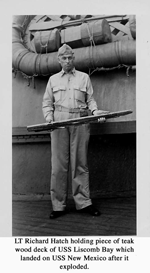 160k |
Lt. Richard Hatch holding a piece of teak wood deck of the Liscomb Bay (CVE-56) which landed on the New Mexico (BB-40) after it exploded on 24 November 1943. |
The following PDF's are Plans of the day for the New Mexico's crew. 2 November 1943 16 November 1943 18 November 1943 19 November 1943 25 November 1943 Photo & PDF from the collection of Capt. Ellis Zacharias, C.O. from 9/9/ 1943 - 14/9/ 1944, courtesy of Capt. Jerry Zacharias, USN (Ret.) |  78k | Back at Pearl Harbor after supporting the Gilbert Island invasion, November 1943. The Pennsylvania (BB-38) (left) is shown tied up to the New Mexico (BB-40). The Pennsylvania has been modernized, with increased A.A. protection, and the removal of the tripod mainmast, which increased the A.A. weapons arcs of fire. | USN photo. | 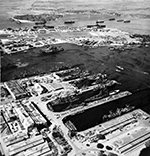 656k | Aerial of Pearl Harbor, Territory of Hawaii. Shown: Ship dispersal and docking areas. Photograph released 12 December 1943. | The BB at the navy yard pier is the New Mexico (BB-40) because of the mainmast configuration. Both of her sisters had their primary air search radar sets on the mainmast at the time. The three BB's nested by Ford Island are the Tennessee (BB-43) (outboard), Colorado (BB-45) in the middle, and Pennsylvania (BB-38) inboard on the Ford Island side. Note the 2 Essex class carriers off Ford Island, are probably Essex (CV-9) and Yorktown (CV-10), per "Location of U.S. Naval Aircraft," . In the insert photo (top left) note the Lexington (CV-16) in for drydock repairs suffered when attacked during a raid Kwajalein 4 December; she was hit by a torpedo to starboard, knocking out her steering gear. She was stateside on 26 December. Partial text courtesy of DANFS. | USN photo s # 80-G-221100 & 80-G-221098, now in the collections of the National Archives courtesy of the National Museum of the U.S. Navy, courtesy of flickr.com. Photo & text i.d. courtesy of Richard M. Jensen & Fabio Pena.  106k | The Idaho (BB-42), New Mexico (BB-40) Mississippi (BB-41) at Pearl Harbor sometime after 5 December 1943. All three battleships then proceeded with the Marshall Islands assault force 12 January 1944.
| Photo courtesy of Joseph MacDonald. Partial text courtesy of DANFS. |  381k |
New Mexico (BB-40) & Idaho (BB-42) 7 December 1943, at Pearl Harbor. Note the anti-torpedo net in the foreground. |
Official USN photograph # 4-ORD-085-16, courtesy of David Buell. |
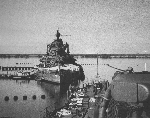 309k |
Stern view of the New Mexico (BB-40) viewed from one of her sisters, possibly at Pearl Harbor. Note the anti-torpedo net in the foreground. |
USN photograph courtesy of David Buell. |  117k |
Drawing prepared by the Bureau of Ships for Camouflage Measure 32, Design 6D intended for battleships of the New Mexico (BB-40 / 42) class. This plan, approved by Captain Logan McKee, USN, is dated 16 February 1944. It shows the ship's starboard side, superstructure ends and exposed decks.
Ships known or reported to have worn this camouflage design include New Mexico (BB-40) and Mississippi (BB-41). |
Official USN photo # 80-G-166247, now in the collections of the National Archives. |
 100k |
Drawing prepared by the Bureau of Ships for Camouflage Measure 32, Design 6D intended for battleships of the New Mexico (BB-40 / 42) class. This plan, approved by Captain Logan McKee, USN, is dated 16 February 1944. It shows the ship's port side, superstructure ends and exposed decks.
Ships known or reported to have worn this camouflage design include New Mexico (BB-40) and Mississippi (BB-41). |
Official USN photo # 80-G-166246, now in the collections of the National Archives. |
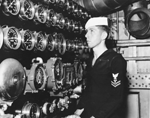 250k |
Thomas F. Grady, MM2c (Machinist's Mate) is standing throttle watch on board New Mexico (BB-40).
|
Photo courtesy of the Kibbe Museum via Bill Gonyo.
| 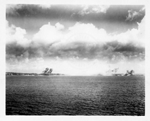 177k |
Shelling peninsula. |
Photo from the collection of Capt. Ellis Zacharias, C.O. from 9/9/ 1943 - 14/9/ 1944, courtesy of Capt. Jerry Zacharias, USN (Ret.) | 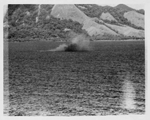 90k |
Near miss. |
The following PDF's concern the Kwajalein Bombardment on 6 February 1944, shelling of Taroa, Maloelap & Wotje on 21 February 1944 & Kavieng Bombardment on 20 March 1944 Photo & PDF's from the collection of Capt. Ellis Zacharias, C.O. from 9/9/ 1943 - 14/9/ 1944, courtesy of Capt. Jerry Zacharias, USN (Ret.) |  129k |
New Mexico (BB-40) Mascot Kwajalein, who deserted ship in Australia, 29 May 1944. |
Photo from the collection of Capt. Ellis Zacharias, C.O. from 9 /9/ 1943 - 14/9/ 1944, courtesy of Capt. Jerry Zacharias, USN (Ret.)
| 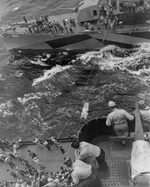 448k |
The Braine (DD-630) transfers wounded to the battleship New Mexico (BB-40) during a dramatic moment for immediate medical attention after being hit by a Japanese six-inch shore battery off the shores of Tinian in the Mariana Islands on 14 June 1944. The Braine and New Mexico were participants in support of the troop landings during the capture efforts of the islands of Saipan and Tinian. The battleship Colorado (BB-45) and the destroyer Norman Scott (DD-690) were both hit by six inch Japanese shore batteries. The Colorado was hit 22 times, killing 44 men. The Norman Scott was hit six times, killing the captain, Seymour Owens, and 22 of his seamen. After the battle, Tinian became an important base for further Allied bombing operations in the Pacific Campaign. Camps were built for 50,000 troops. Fifteen thousand Seabees turned the island into the busiest and largest airfield of the war, with six 2,400 m runways for attacks by B-29 Superfortress bombers on targets in the Philippines, the Ryukyu Islands and mainland Japan, including the atomic bombings of Hiroshima and Nagasaki to help end hostilities in the Pacific. |
Photo # 09-7930-26, courtesy of the U.S. Navy BUMED Library and Archives via Bill Gonyo. | 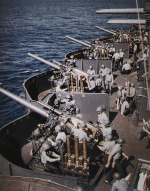 129k |
New Mexico's (BB-40) 5"/25 battery prepares to fire during the bombardment of Saipan, 15 June 1944. Note time-fuse setters on the left side of each gun mount, each holding three "fixed" rounds of ammunition; barrels of 20mm machine guns at the extreme right; and triple 14"/50 guns in the background. |
Official USN photo # 80-G-K-14162, now in the collections of the National Archives. |
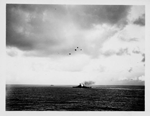 143k |
Firing at aircraft. |
New Mexico (BB-40) bombarded Tinian & Saipan 14 & 15 June, and Guam 16 June, and twice helped drive off enemy air attacks 18 June. Text courtesy of DANFS. | Photo & PDF's from the collection of Capt. Ellis Zacharias, C.O. from 9 /9/ 1943 - 14/9/ 1944, courtesy of Capt. Jerry Zacharias, USN (Ret.) 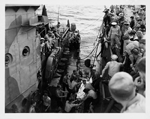 139k |
Transferring a casualty. |
Photo from the collection of Capt. Ellis Zacharias, C.O. from 9/9/ 1943 - 14/9/ 1944, courtesy of Capt. Jerry Zacharias, USN (Ret.) | 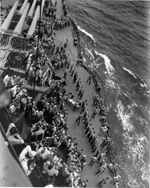 2.47k |
Either the New Mexico (BB-40) or Mississippi (BB-41) transfers wounded from a destroyer (probably Braine (DD-630) off Saipan, just out of range of shore batteries. Released 6 July 1944. |
USN photo s # 253539 & # 253544, courtesy of Pieter Bakels. |
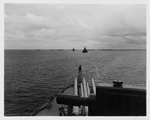 169k |
5-In column. |
Photo from the collection of Capt. Ellis Zacharias, C.O. from 9/9/ 1943 - 14/9/ 1944, courtesy of Capt. Jerry Zacharias, USN (Ret.) | 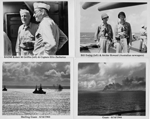 475k |
Admirals, Captains, Reporters & Shelling Guam on 16 June 1944.
|
Photo from the collection of Capt. Ellis Zacharias, C.O. from 9/9/ 1943 - 14/9/ 1944, courtesy of Capt. Jerry Zacharias, USN (Ret.) | 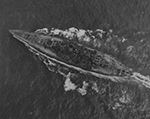 480k |
Two views of New Mexico (BB-40) cutting the seas off Guam. |
USN photo s # 80-G-346157 & 80-G-346158 courtesy of Tracy White @ Researcher @ Large. |
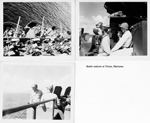 333k |
Battle Stations at Tinian, Marianas. |
Photo from the collection of Capt. Ellis Zacharias, C.O. from 9/9/ 1943 - 14/9/ 1944, courtesy of Capt. Jerry Zacharias, USN (Ret.) | 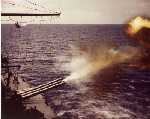 50k |
New Mexico's (BB-40) firing her guns in support of invasion of Saipan, June 1944. |
USNI / USN photo. |
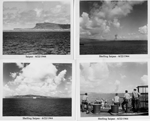 455k |
Shelling Saipan on 22 June 1944. |
Photo from the collection of Capt. Ellis Zacharias, C.O. from 9/9/ 1943 - 14/9/ 1944, courtesy of Capt. Jerry Zacharias, USN (Ret.) | 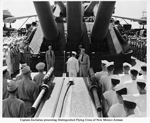 246k |
Medal presentation of the Distinguished Flying Cross (DFC) awarded to Harrison D. Miller for heroism aboard New Mexico (BB-40). |
Photo from the collection of Capt. Ellis Zacharias, C.O. from 9/9/ 1943 - 14/9/ 1944, courtesy of Capt. Jerry Zacharias, USN (Ret.) | 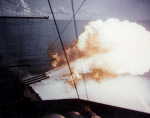 59k |
New Mexico (BB-40) firing her after 14"/50 guns during the pre-invasion bombardment of Guam, circa 14-20 July. Taken by a Combat Photo Unit Two (CPU-2) photographer, looking aft along the port side from the forward sky lookout position. |
Official USN photo Naval History and Heritage Command # 80-G-K-14233, now in the collections of the National Archives. |
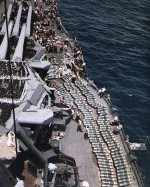 159k |
14-inch projectiles on deck, while the battleship was replenishing her ammunition supply prior to the invasion of Guam, July 1944. The photograph looks forward on the starboard side, with 3-gun mount 14"/50 gun turrets at left. Note floater nets stowed atop the turrets. |
Text info courtesy of Daniel Cronan. Official USN photo Naval History and Heritage Command # 80-G-K-14228, now in the collections of the National Archives. |
 111k |
Drawing prepared by the Bureau of Ships for Camouflage Measure 32, Design 3D intended for battleships of the New Mexico (BB-40 / 42) class. This plan, approved by Captain Torvald A. Solberg, USN, is dated 18 August 1944. It shows the ship's starboard side, horizontal surfaces and superstructure ends.
|
Official USN photo # 19-N-104916, from the Bureau of Ships Collection in the U.S. National Archives |
 113k | Drawing prepared by the Bureau of Ships for a camouflage scheme intended for battleships of the New Mexico (BB-40 / 42) class. This plan, approved by Captain Torvald A. Solberg, USN, is dated 19 August 1944. It shows the ship's port side.
|
Official USN photo # 19-N-104915, from the Bureau of Ships Collection in the U.S. National Archives |
 313k |
Capt Zack on bridge. |
Photo from the collection of Capt. Ellis Zacharias, C.O. from 9/9/ 1943 - 14/9/ 1944, courtesy of Capt. Jerry Zacharias, USN (Ret.) | 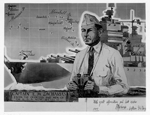 161k |
In appreciation from the crew of the New Mexico (BB-40). |
Photo from the collection of Capt. Ellis Zacharias, C.O. from 9/9/ 1943 - 14/9/ 1944, courtesy of Capt. Jerry Zacharias, USN (Ret.) | 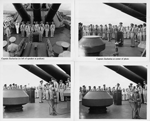 400k |
Change of Command. |
Photo from the collection of Capt. Ellis Zacharias, C.O. from 9/9/ 1943 - 14/9/ 1944, courtesy of Capt. Jerry Zacharias, USN (Ret.) | 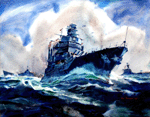 480k |
Water color of the New Mexico (BB-40) painted by the artist Henry Beaumont. |
Photo from the collection of Capt. Ellis Zacharias, C.O. from 9/9/ 1943 - 14/9/ 1944, courtesy of Capt. Jerry Zacharias, USN (Ret.) | 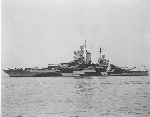 92k |
Port side view wearing Camouflage Measure 32, Design 3D on 21 October 1944, Puget Sound Navy Yard showing her final configuration. Ultimate battery of ten quadruple 40mm guns are in place along with 40-45
20mm Oerlikons. All but her six forward 5"/51 caliber guns have been
replaced with the dual purpose although somewhat short range 5"/25 caliber
open mounts and 40mm quad mounts wherever room was available. |
Official USN photo courtesy of David Buell. | 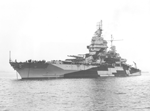 178k |
Gun barrels on bottom forward turret are painted black; 21 October 1944, Puget Sound Navy Yard. |
National Archives photo # 19-N-73599 courtesy of David Buell. | 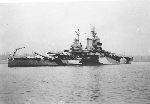 124k |
October 1944 stern shot of the New Mexico (BB-40) at Puget Sound Navy Yard.
Particularly noticeable is the removal of the #3 turret mounted catapult.
She retained the fantail catapult and usually carried two planes.
Searchlights have been lowered to almost the base of the stack. |
Official USN photo courtesy of David Buell. |  20k |
Damage caused to the New Mexico (BB-40) after being hit by a Kamikaze on 6 January 1945. |
Photo from WWII Damage Reports, courtesy of NavSea / dcfp.navy.mil. |
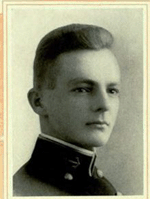 014045k 90k |
Robert Walton Fleming, CO of the New Mexico (BB-40) and one of 30 of her crew killed, with 87 injured, after being hit by a Kamikaze on 6 January 1945.
|
USN photo courtesy of usna1917.com |
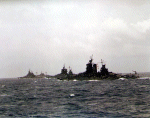 70k |
At sea with two other battleships and an amphibious force command ship (AGC), probably at the time of the Iwo Jima or Okinawa operations, circa February-April 1945. Battleship in the center background is Idaho (BB-42). The one further to the left is Tennessee (BB-43). |
Official USN photo Naval History and Heritage Command # 80-G-K-3706, now in the collections of the National Archives. |
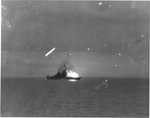 290k |
New Mexico (BB-40) putting up a wall of fire. |
USN Archives photo # N-3110 courtesy of Scott Koen & ussnewyork.com.
|
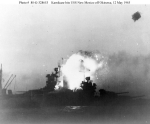 62k |
New Mexico (BB-40) is hit by a "Kamikaze" at dusk on 12 May 1945, while off Okinawa. Photographed from Wichita (CA-45). |
Official USN photo Naval History and Heritage Command # 80-G-328653, now in the collections of the National Archives. |
 27k |
Damage caused to the New Mexico (BB-40) after being hit by a "Kamikaze" on 12 May 1945, off the coast of Okinawa. |
Photo from WWII Damage Reports, courtesy of NavSea / dcfp.navy.mil. |
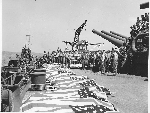 92k |
New Mexico (BB-40) probably dated 13 May, the day after a kamikaze hit and a bomb hit killed 54 of her crew, some of who are shown in this photograph under the flags.
|
USN photo courtesy of David Buell. | 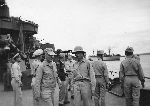 155k |
Admirals William F. Halsey (left) and Raymond A. Spruance (right) aboard New Mexico (BB-40) on 27 May 1945. New Mexico had become 5th fleet flagship of Admiral Spruance the previous 5 April. |
USN photo courtesy of David Buell. | 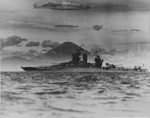 382k |
New Mexico (BB-40) as she dropped anchor in the shadow of Mount Fuji as a unit in the 3rd fleet. |
USN photo # 80-G-701123 from National Archives and Records Administration (NARA), College Park, Maryland, courtesy of Sean Hert. |
Post War / Scrapping |
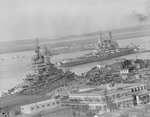 1.09k |
Battleship New Mexico (BB-40) being brought into Boston Navy Yard on 17 October 1945. The North Carolina (BB-55) anchored there also, and after overhaul at New York exercised in New England waters and carried Naval Academy midshipmen for a summer training cruise in the Caribbean.
|
Partial text courtesy of DANFS. | Photo # 08_06_022495 courtesy of the Boston Public Library, Leslie Jones Collection via Sean Hert & Mike Green via flickr.com. 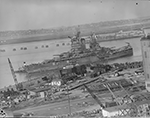 508k |
Battleship New Mexico (BB-40) being nudged by tugs as she is brought into Boston Navy Yard on 17 October 1945. |
Photo #08_06_022552 from the Boston Public Library, Leslie Jones collection, courtesy of Kate Monea, Archivist, USS Constitution Museum |
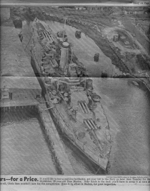 407k |
"Yours-For a Price" - If you'd like to buy a real live battleship, get your bid to the Navy no later than Tuesday for the 30,600 ton, 29 year old New Mexico (BB-40). Only hitch in the deal; you have to scrap it as soon possible. After all, Uncle Sam wouldn't care for the competition. Here it is, afloat in Boston, for your inspection. |
Note that the secondary armament has already been removed. AP Wire photo courtesy of Sunday News New York's Picture Newspaper 28 September 1947, submitted by Joe MacDonald. | 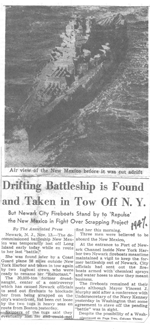 410k |
4 page PDF of the "Drifting battleship" - The city of Newark & the last "fight" of the New Mexico (BB-40), 13 November 1947. |
PDF courtesy of Ron Reeves (of blessed memory). |
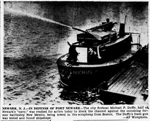 014012d NR | NEWARK, N. J. IN DEFENSE OF PORT NEWARK | The city flreboat Michael P. Duffy, half of Newark's "navy," was readied for action today to block the channel against the oncoming former battleship New Mexico (BB-40), being towed to the scrapheap from Boston. The Duffy's foam gun was tested and found shipshape. Image and text provided by Library of Congress, Washington, DC. | Photo from Evening Star. [volume] (Washington, D.C.) 1854-1972, 13 November 1947, Image 3 via chroniclingamerica.loc.gov. 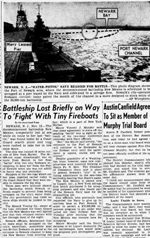 014047f NR | NEWARK, N. J. WATER-PISTOL NAVY READIED FOR BATTLE | This photo diagram shows the Port of Newark area, where the decommissioned battleship New Mexico (BB-40) is scheduled to be scrapped at a pier leased by the Navy and subleased to a salvage firm. Newark's city-operated fireboats (circled) today patrol the mouth of the channel in a move designed to block entry of the 30,000-ton battleship. Image and text provided by Library of Congress, Washington, DC. | Photo from Evening Star. [volume] (Washington, D.C.) 1854-1972, 13 November 1947, Image 3 via chroniclingamerica.loc.gov. 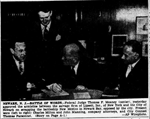 NR | NEWARK, N. J. BATTLE OF WORDS | Federal Judge Thomas F. Meaney (center), yesterday approved the armistice between the salvage firm of Lipsett, Inc., of New York and the City of Newark on scrapping the battleship New Mexico (BB-40) in Newark Bay, opposed by the city. Present were (left to right) Charles Milton and John Manning, company attorneys, and Thomas Parsonnet. Image and text provided by Library of Congress, Washington, DC. | Photo from Evening Star. [volume] (Washington, D.C.) 1854-1972, 16 November 1947, Image 6 via chroniclingamerica.loc.gov. 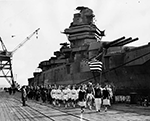 492k |
"Battlewagon docks without a battle. | The Eastside High School band of Newark, N. J., welcomes the battleship New Mexico (BB-40) to Newark after her arrival there to be scrapped. The city canceled battle orders to its two fireboats, ready to combat the big ship when she came in, after negotiated peace between port authorities and the Navy. The terms: work must be finished in nine months." Photo courtesy of the George D. McDowell Philadelphia Evening Bulletin Photographs @ digital.library.temple.edu |  1.76k | New Mexico (BB-40) meets New Jersey. | Indianapolis Star, 20 November 1947, courtesy of Joe MacDonald.
| 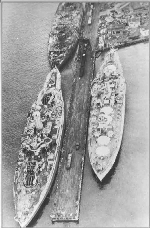 361k | "Battleship Graveyard" - Three decommissioned battleships, the Idaho (BB-42) (left foreground), the Wyoming (AG-17), (right foreground), and the New Mexico (BB-40), lie alongside a pier at Port Newark, N.J. were they are being scrapped. | Workmen have progressed with the New Mexico which was the subject of considerable controversy between Newark city officials and the scrapping concern. The Wyoming, most recent arrival, has its gun turrets protected by round white coverings. Text courtesy of AP Wire photo of 17 December 1947 edition of the Baltimore Evening Sun, submitted by Joe MacDonald. | Photo courtesy of Warship Boneyards, by Kit and Carolyn Bonner & submitted by Robert Hurst. 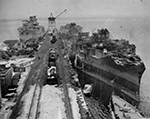 2.96k | Three battleships, at Newark, N.J. January 1948: New Mexico (BB-40) in the foreground, Idaho (BB-42) behind her, and the Wyoming (AG-17) to the left, being scrapped by Lipsett Inc. | Valhalla for Venerable Battleships New Mexico, Idaho, & Wyoming Die in Bustle of Big Business, but Their Steel Will Help Dwindling Scrap Piles. A .P. Wirephoto courtesy of Joe MacDonald. | Image and text provided by Library of Congress, Washington, DC. Photo from Evening Star. [volume] (Washington, D.C.) 1854-1972, 01 February 1948, Image 42, via chroniclingamerica.loc.gov.  683k |
The end for New Mexico (BB-40) . |
Photo courtesy Joe MacDonald. |
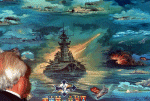 371k | A guest studies a painting depicting the history of battleships. The artwork was painted by George Skybeck and presented to the Pearl Harbor Survivors Association during their annual banquet at Honolulu, Hawaii, on 8 December 1991.
| USN photo # DN-SC-92-05391, by PHC Carolyn Harris, from the Department of Defense Still Media Collection, courtesy of dodmedia.osd.mil. |
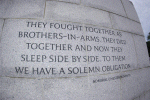 371k | A quote made by Fleet Adm. Chester W. Nimitz is inscribed on a granite wall at the National World War II Memorial located on the National Mall in Washington, D.C. Fleet Adm. Nimitz was the United States signatory to the surrender terms aboard the battleship Missouri (BB-63) in Tokyo Bay, Japan on 2 September 1945, thus ending World War II. Established by the American Battle Monuments Commission, the memorial honors all military veterans of World War II, the citizens on the home front, the nation at large, and the high moral purpose and idealism that motivated the nation's call to arms. On 29 May 2004, the memorial was formally dedicated with an estimated 200,000 people expected to attend, and includes 100,000 visiting veterans of all wars. | USN photo # N-0295M-011 by Photographer's Mate 2nd Class Daniel J. McLain, courtesy of news.navy.mil. | | ||||||||||||||||||||||||||||||||||||||||||||||||||||||||||||||||||||||||||||||||||||||||||||||||||||||||||||||||||||||||||||||||||||||||||||||||||||||||||||||||||||||||||||||||||||||||||||||||||||||||||||||||||||||||||||||||||||||||||||||||||||||||||||||||||||||||||||||||||||||||||||||||||||||||||||||||||||||||||||||||||||||||||||||||||||||||||||||||||
| Commanding Officers | ||
| 01 | CAPT. Robertson, Ashley Herman, USN (USNA 1888) :VADM | 20.05.1918 - 00.09.1918 |
| 02 | CAPT. Bostwick, Lucius Allyn, USN (USNA 1890) :RADM | 00.09.1918 - 10.05.1919 |
| 03 | CAPT. Willard, Arthur Lee, USN (USNA 1891) :VADM | 10.05.1919 - 31.05.1921 |
| 04 | CAPT. Williams, George Washington, USN (USNA 1890) :RADM | 31.05.1921 - 16.06.1922 |
| 05 | CAPT. Stirling Jr., Yates, USN (USNA 1892) :RADM | 16.06.1922 - 25.06.1924 |
| 06 | CAPT. Brumby, Frank Hardeman, USN (USNA 1895) :ADM | 25.06.1924 - 07.10.1926 |
| 07 | CAPT. Leahy, William Daniel, USN (USNA 1897) :FADM | 07.10.1926 - 09.10.1927 |
| 08 | CAPT. Larimer, Edgar Brown, USN (USNA 1899) :RADM | 09.10.1927 - 11.05.1929 |
| 09 | CAPT. Watson, Adolphus Eugene, USN (USNA 1899) :RADM | 11.05.1929 - 01.06.1931 |
| 10 | CAPT. Cocke, Herbert Claiborne, USN (USNA 1900) | 01.06.1931 - 14.06.1933 |
| 11 | CAPT. Weaver, David Allen, USN (USNA 1902) | 14.06.1933 - 30.11.1934 |
| 12 | CAPT. Soulé Jr., Charles Carroll, USN (USNA 1904) | 30.11.1934 - 08.06.1936 |
| 13 | CAPT. Fletcher, Frank Jack, USN (USNA 1906) :ADM | 08.06.1936 - 09.12.1937 |
| 14 | CAPT. Jacobs, Walter Frederick, USN (USNA 1906) | 09.12.1937 - 10.06.1939 |
| 15 | CAPT. Baughman, Cortlandt Chesterfield, USN (USNA 1907) | 10.06.1939 - 00.01.1941 |
| 16 | CAPT. Brown, Walter Elliott, USN (USNA 1910) | 00.01.1941 - 16.09.1942 |
| 17 | CAPT. Downes, Oliver Lee, USN (USNA 1913) | 16.09.1942 - 10.09.1943 |
| 18 | CAPT. Zacharias Sr., Ellis Mark, USN (USNA 1912) :RADM | 10.09.1943 - 20.08.1944 |
| 19 | CAPT. Fleming, Robert Walton, USN (USNA 1917) | 20.08.1944 - 06.01.1945 |
| 20 | CDR. Warren, John Thompson, USN (USNA 1924) :RADM | 06.01.1945 - 09.02.1945 |
| 21 | CAPT. Haines, John Meade, USN (USNA 1918) :RADM | 09.02.1945 - 15.11.1945 |
| 22 | CDR. Newcomb, Arnold Houghton, USN (USNA 1935) | 15.11.1945 - 19.07.1946 |
The contact listed, Was the contact at the time for this ship when located. If another person now is the contact, E-mail me and I will update this entry. These contacts are compiled from various sources over a long period of time and may or may not be correct. Every effort has been made to list the newest contact if more than one contact was found.
| Back To The Main Photo Index | Back To The Battleship Photo Index Page |